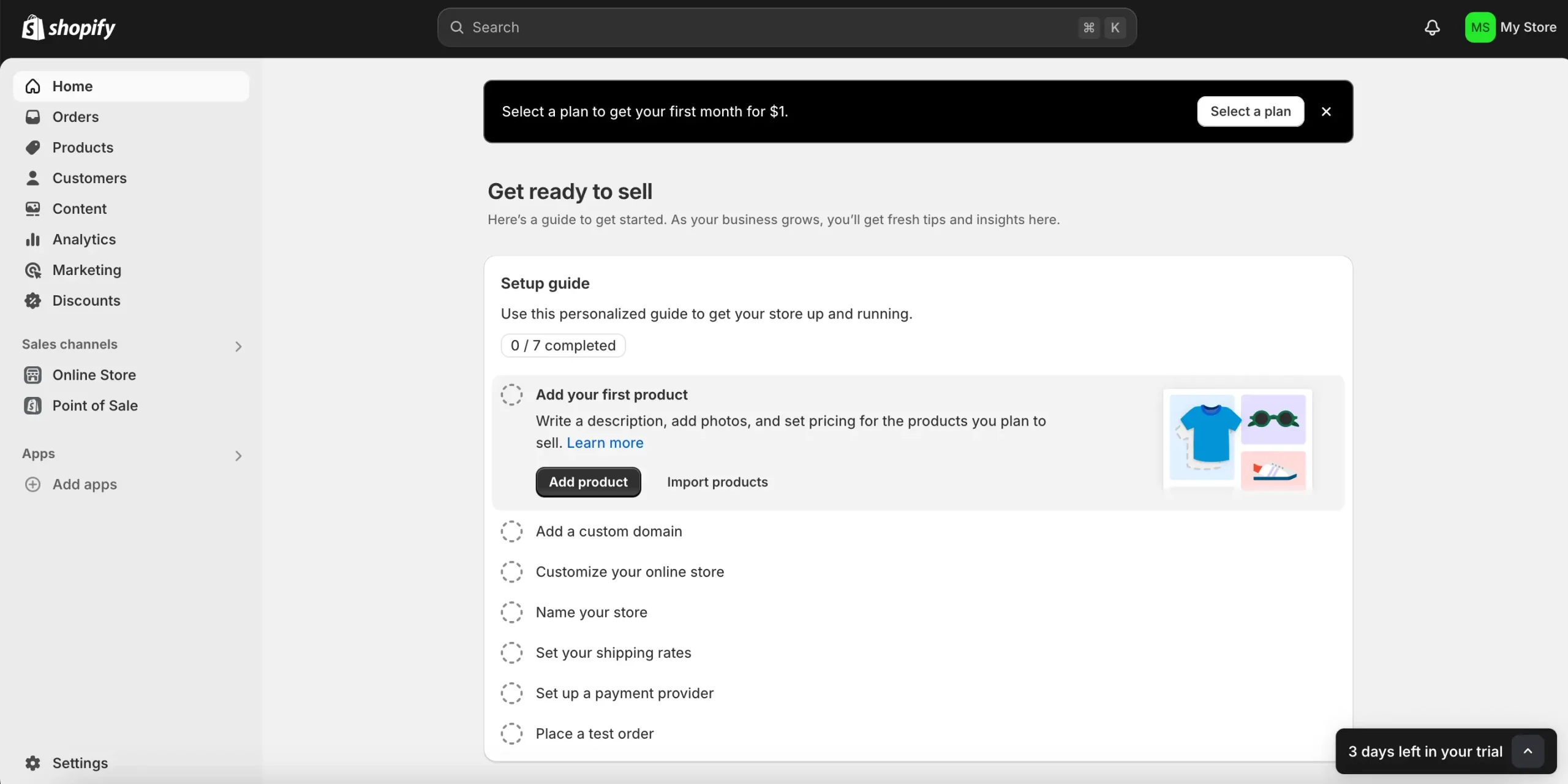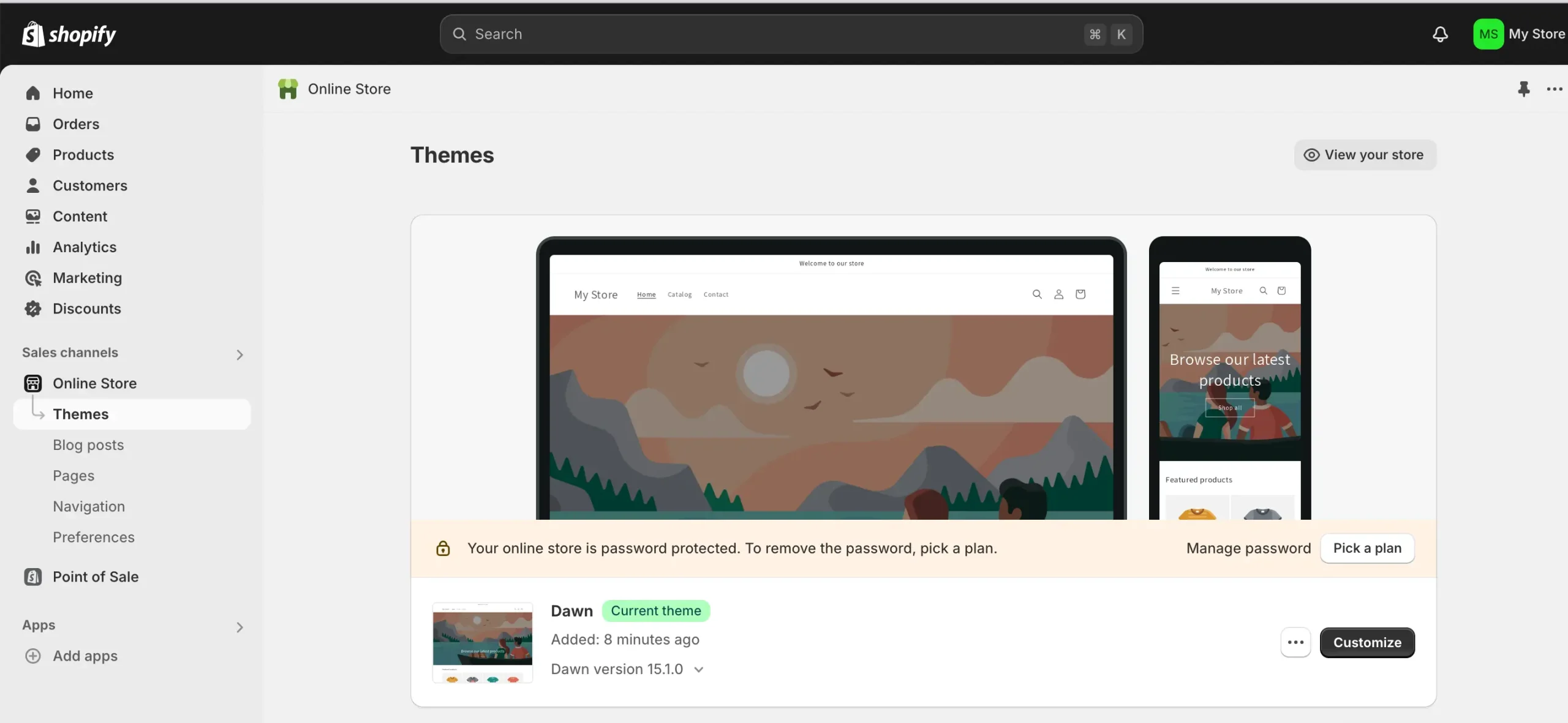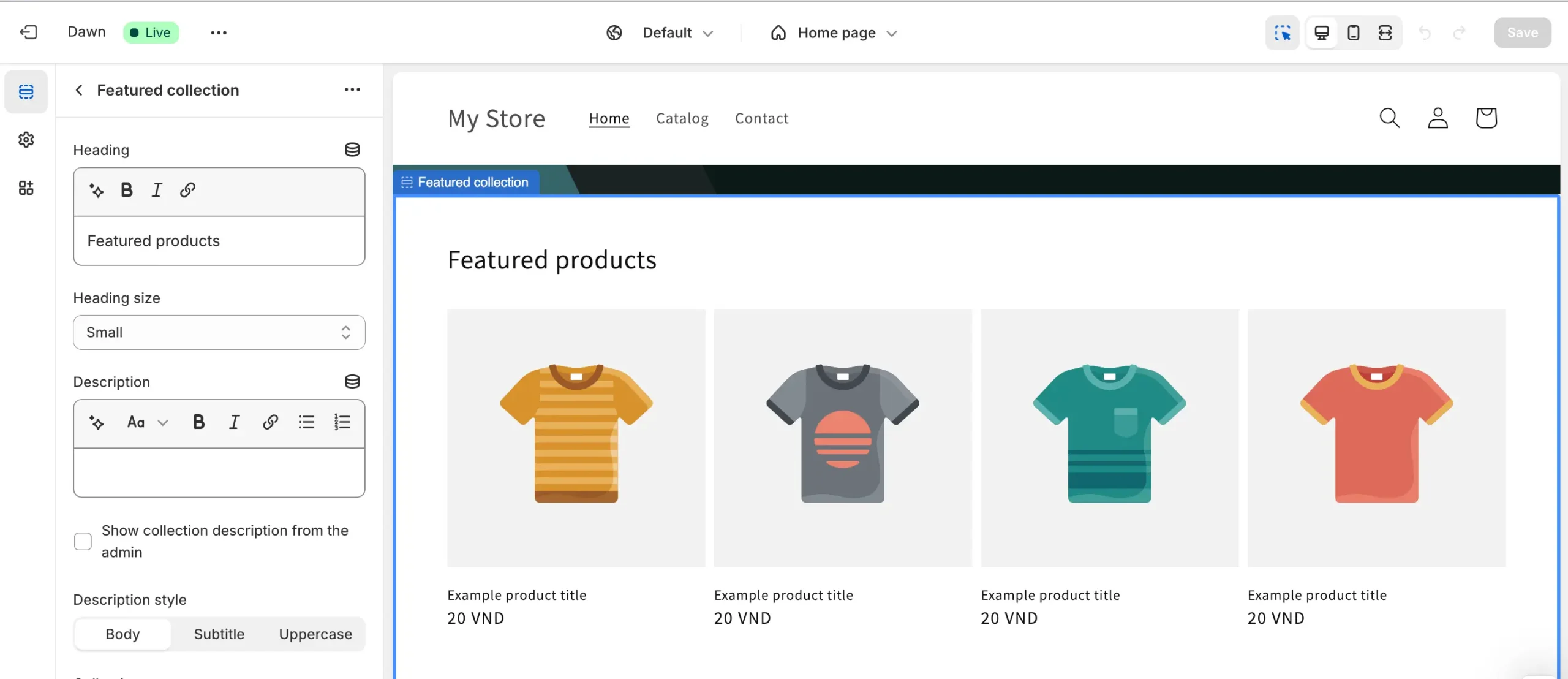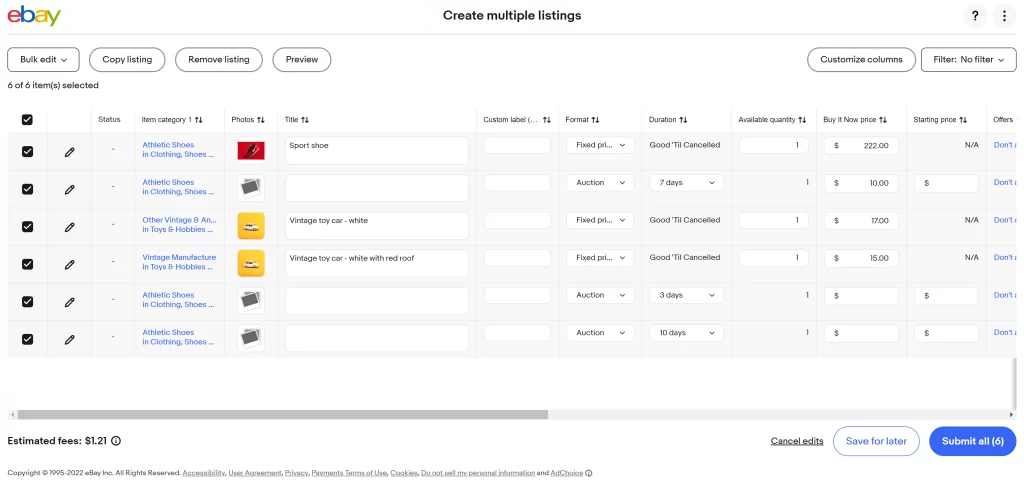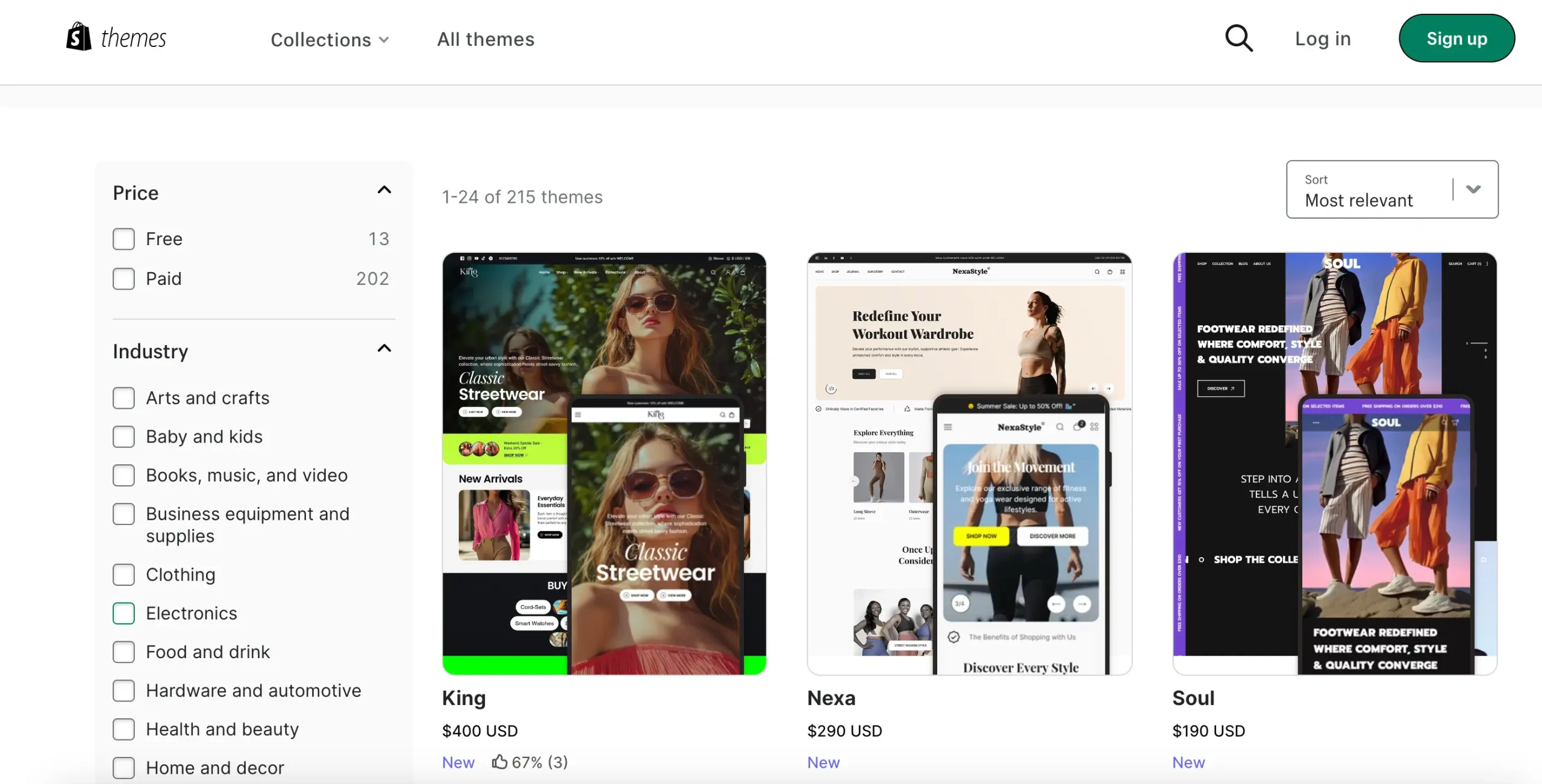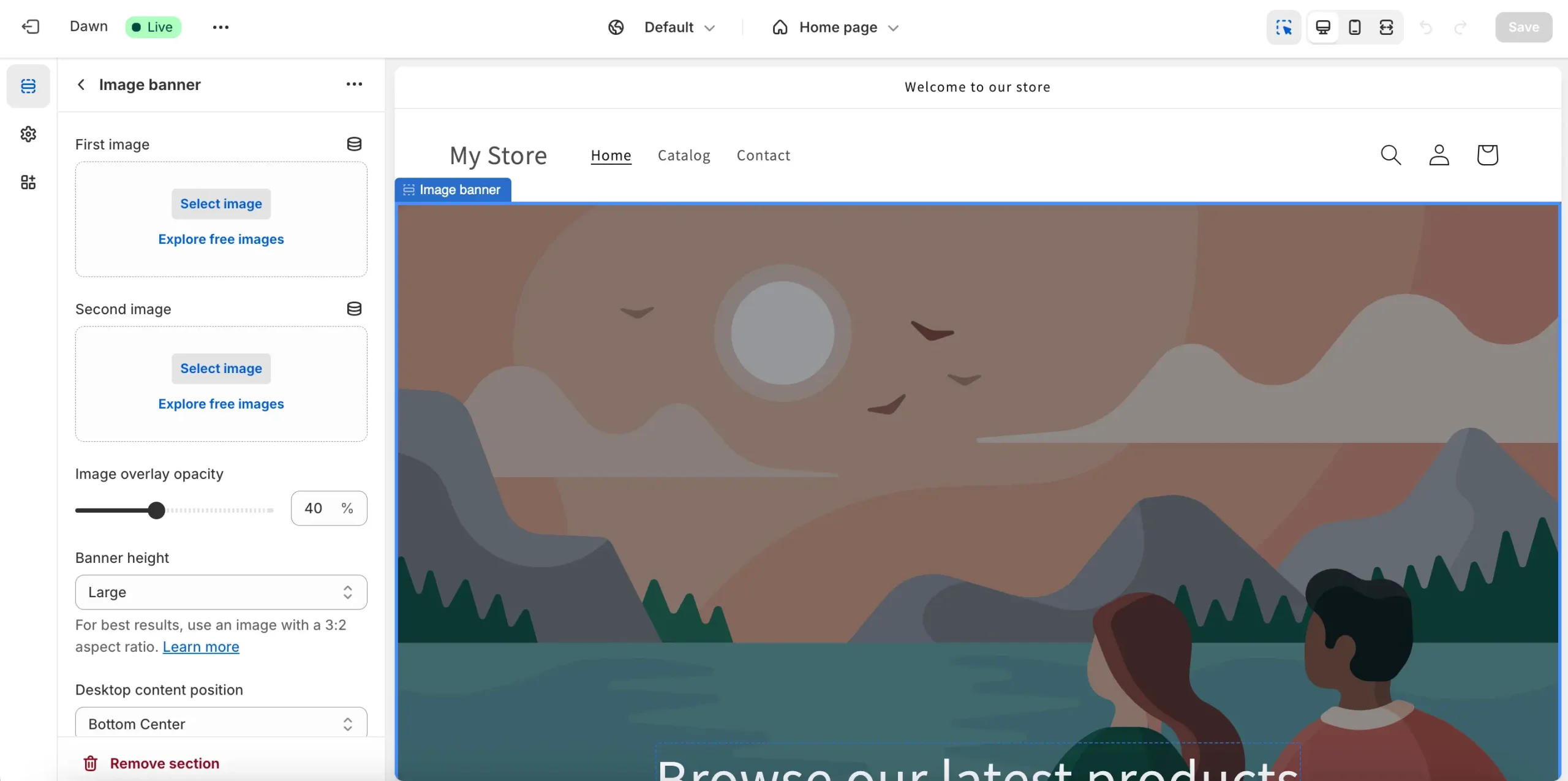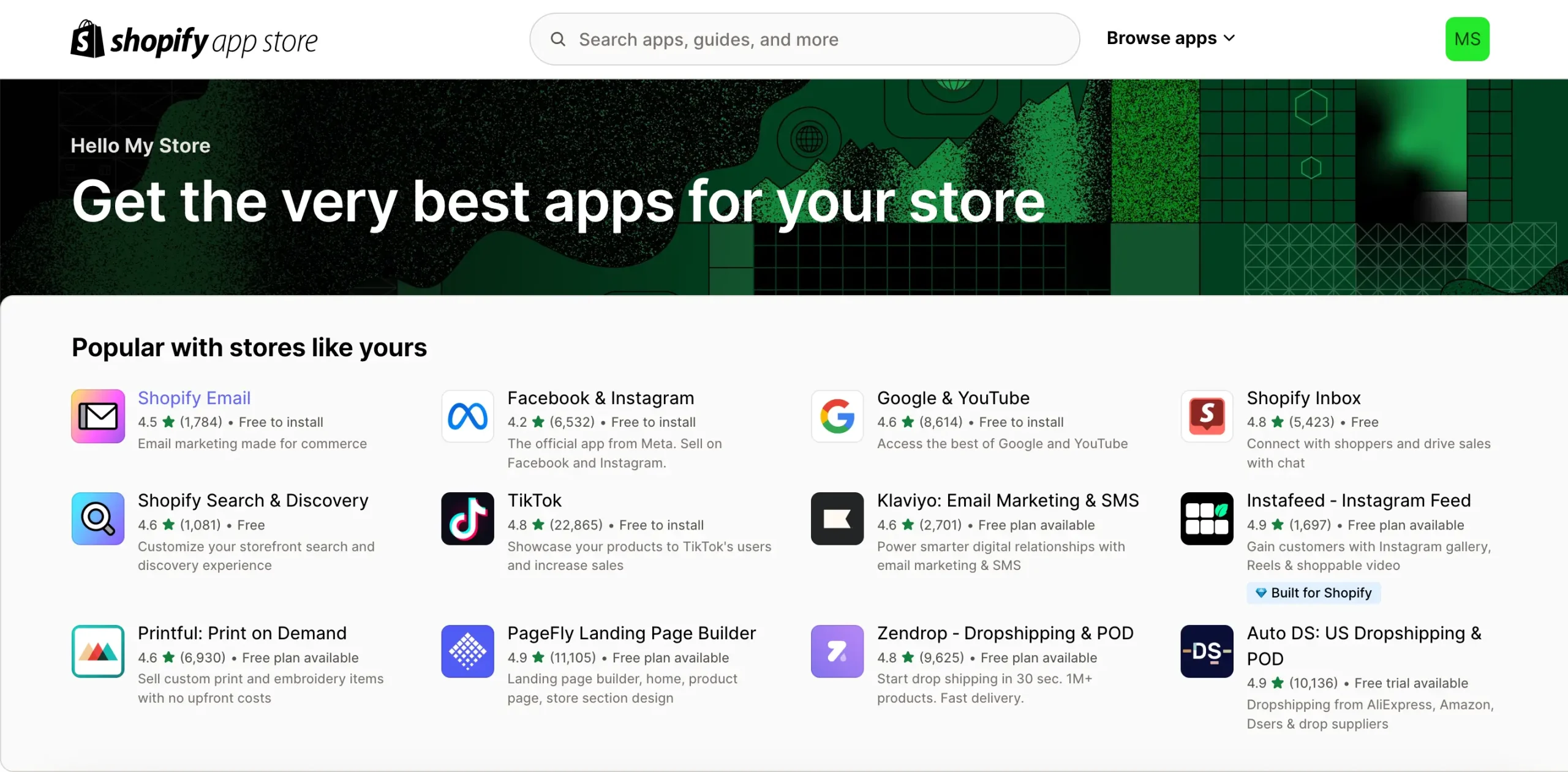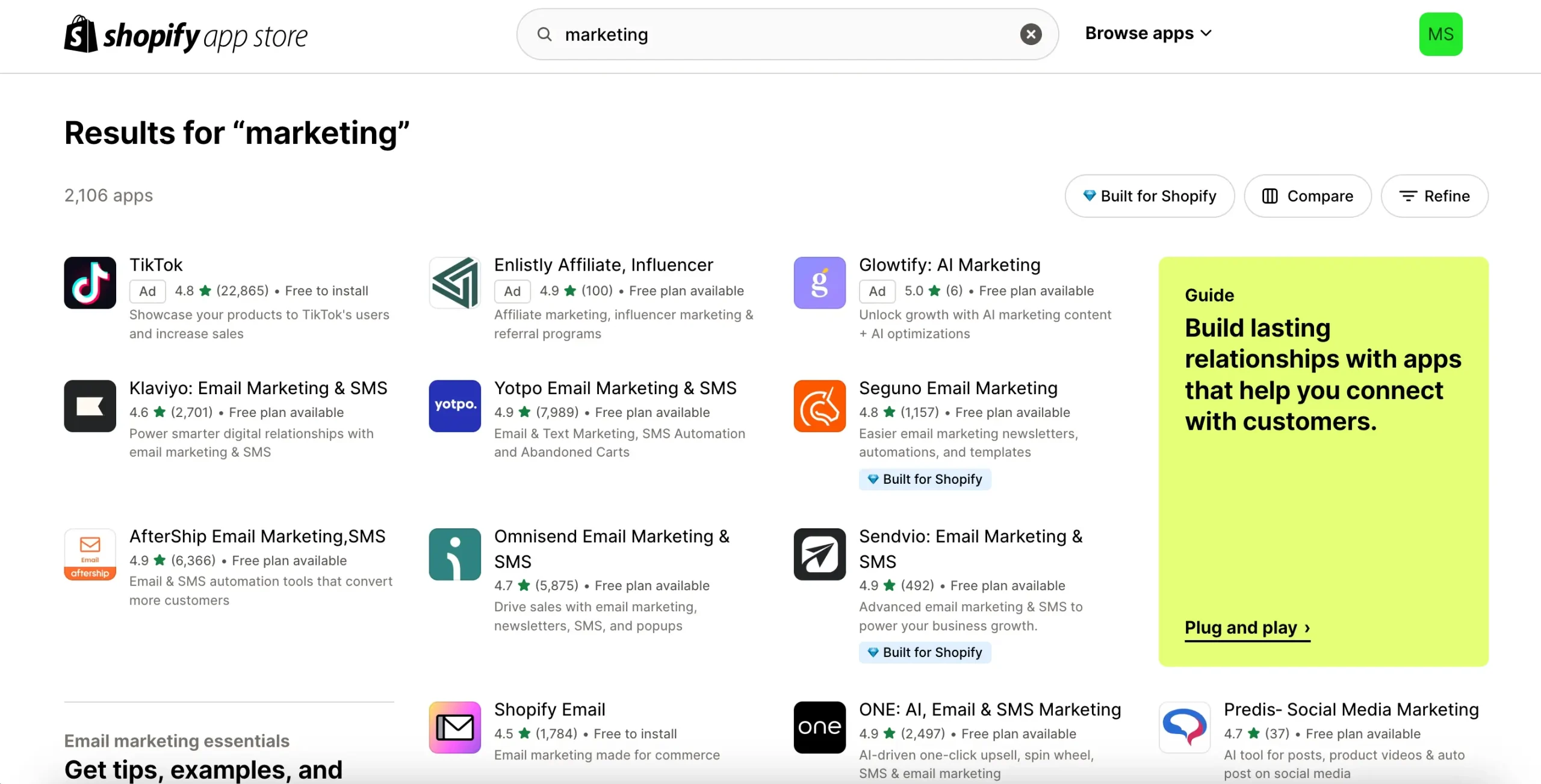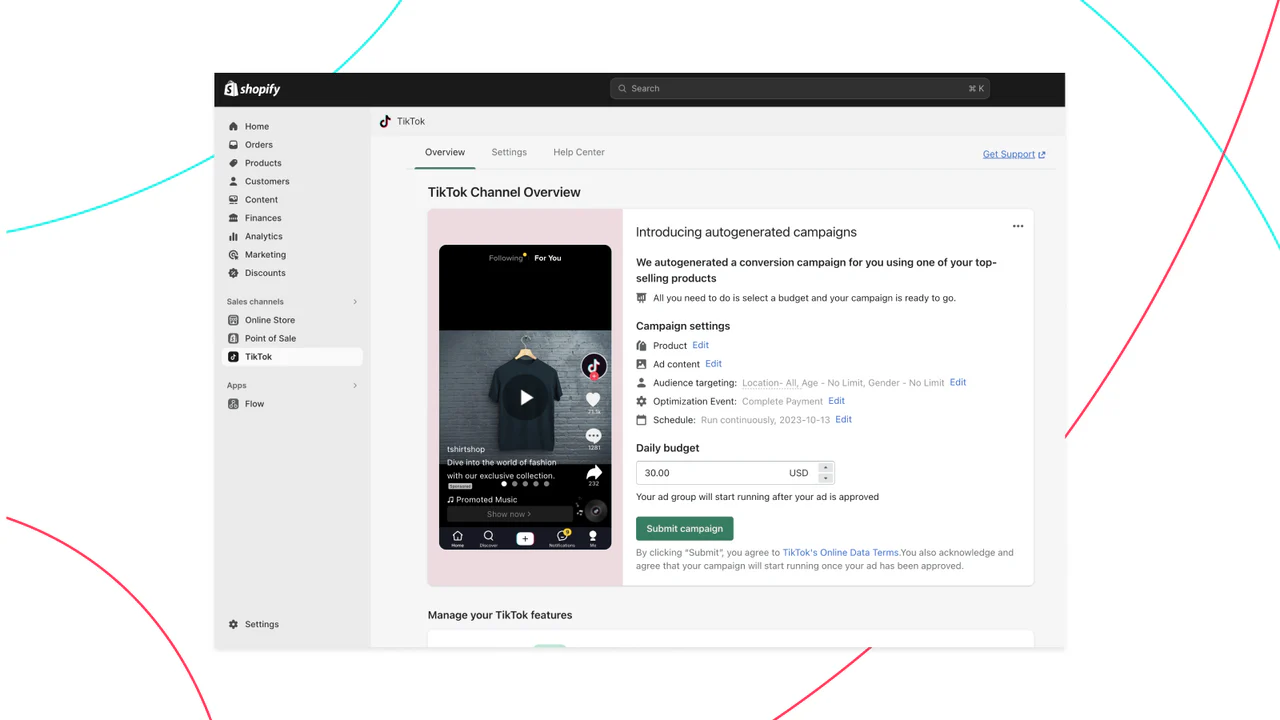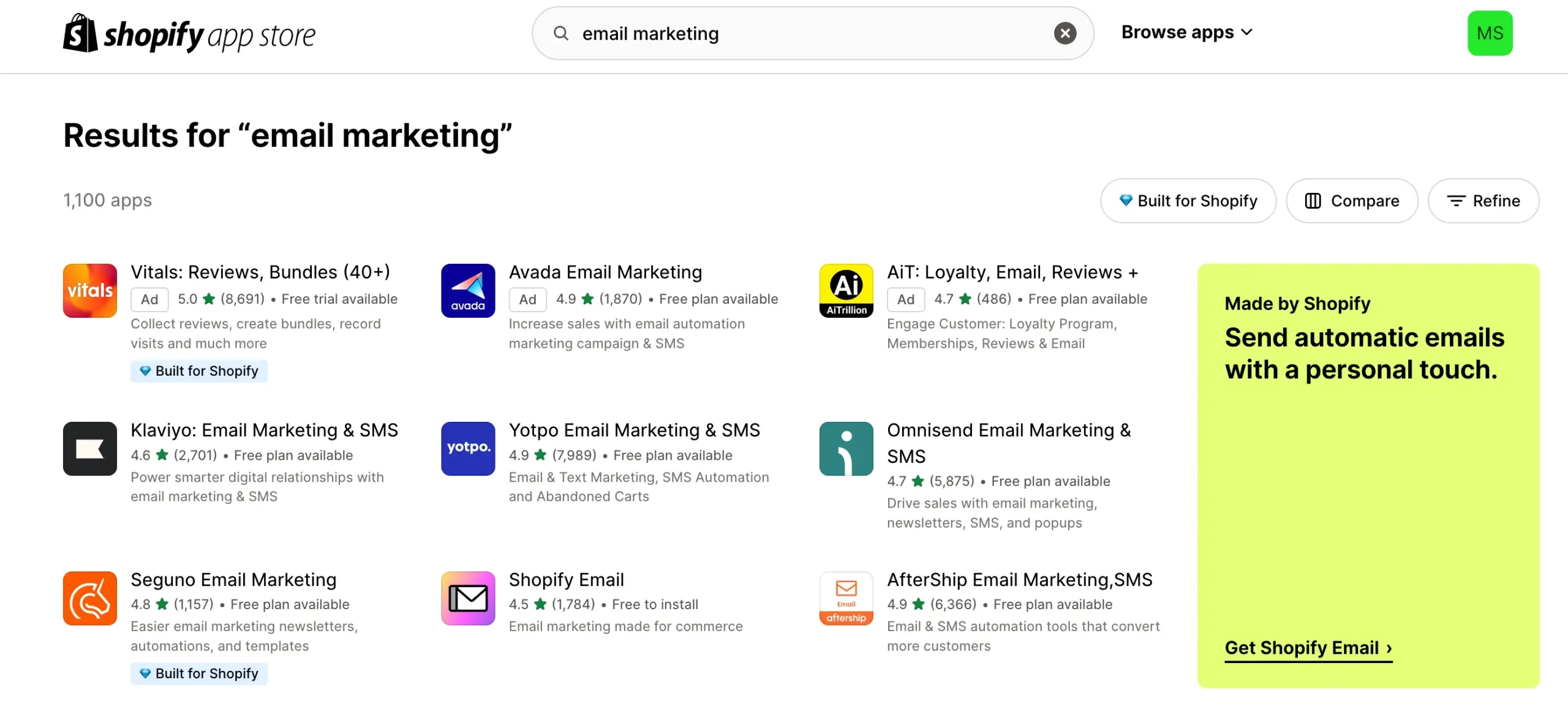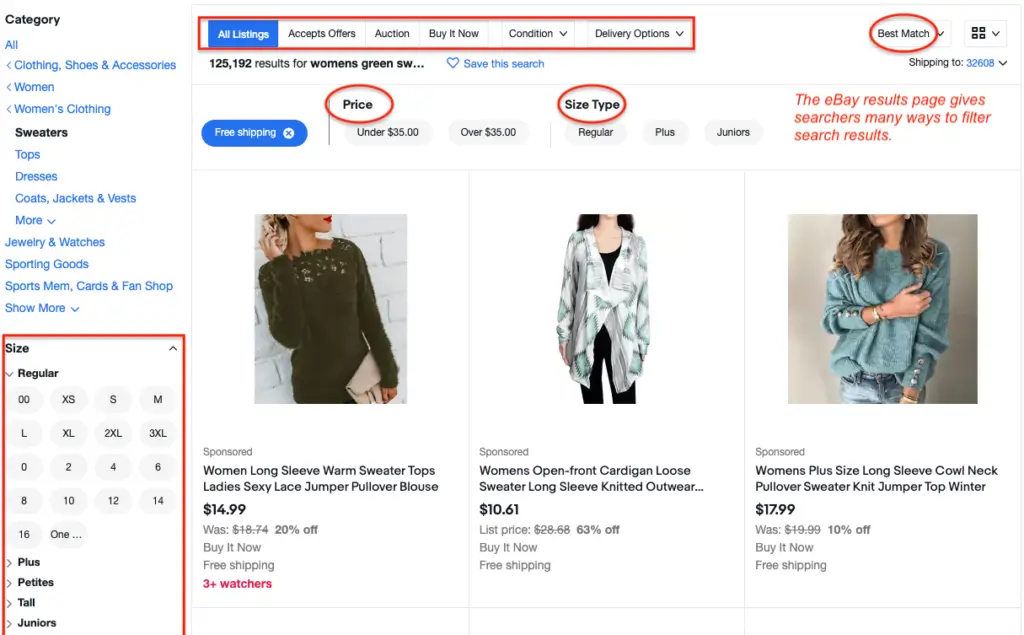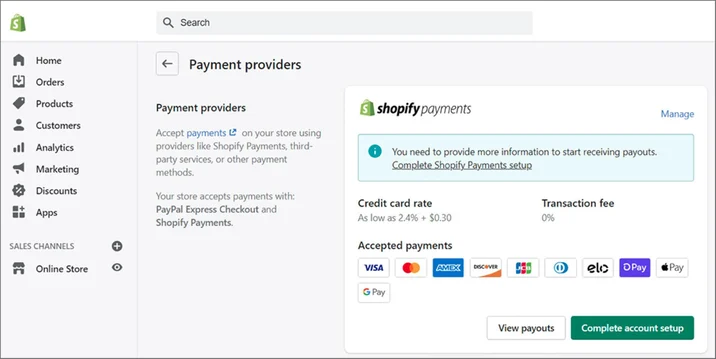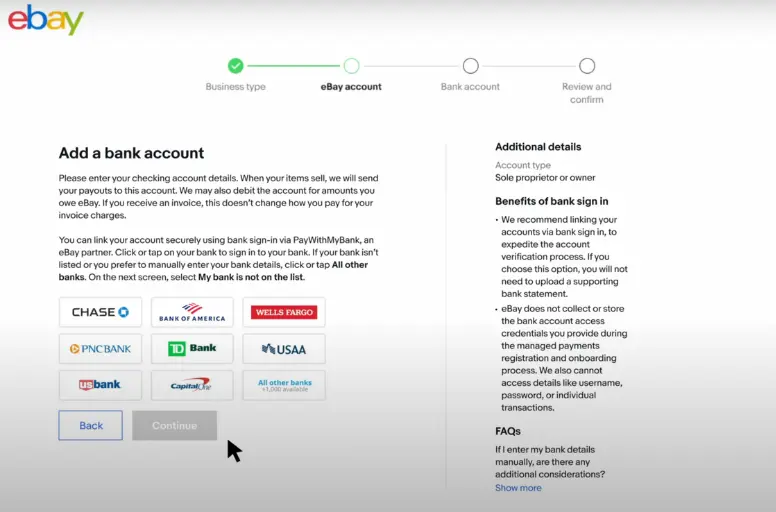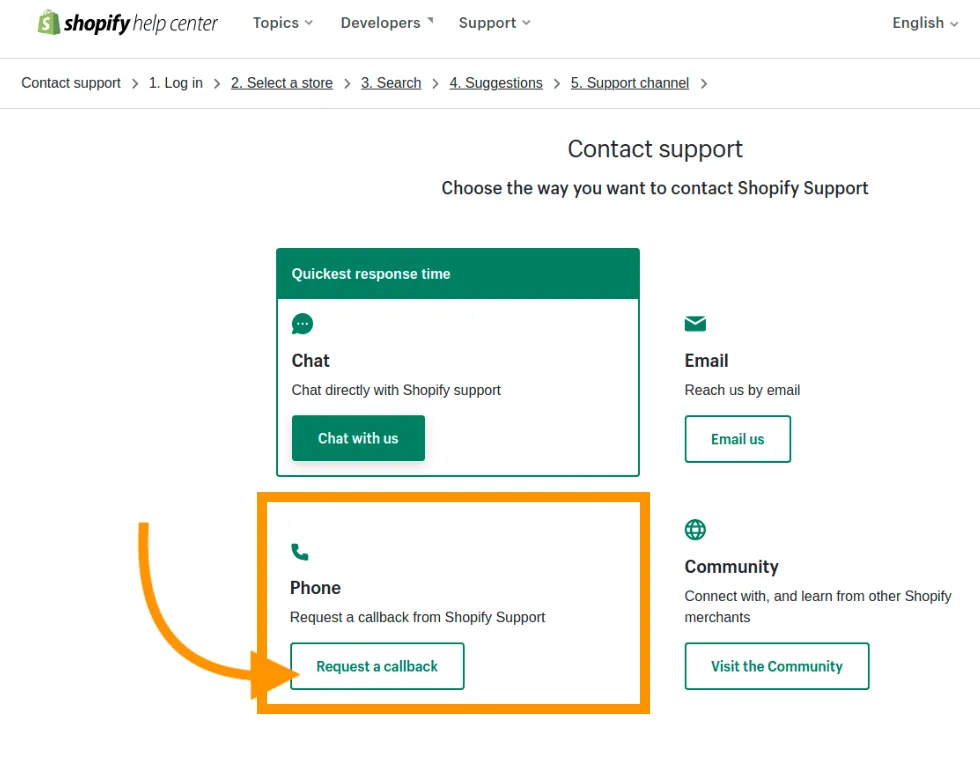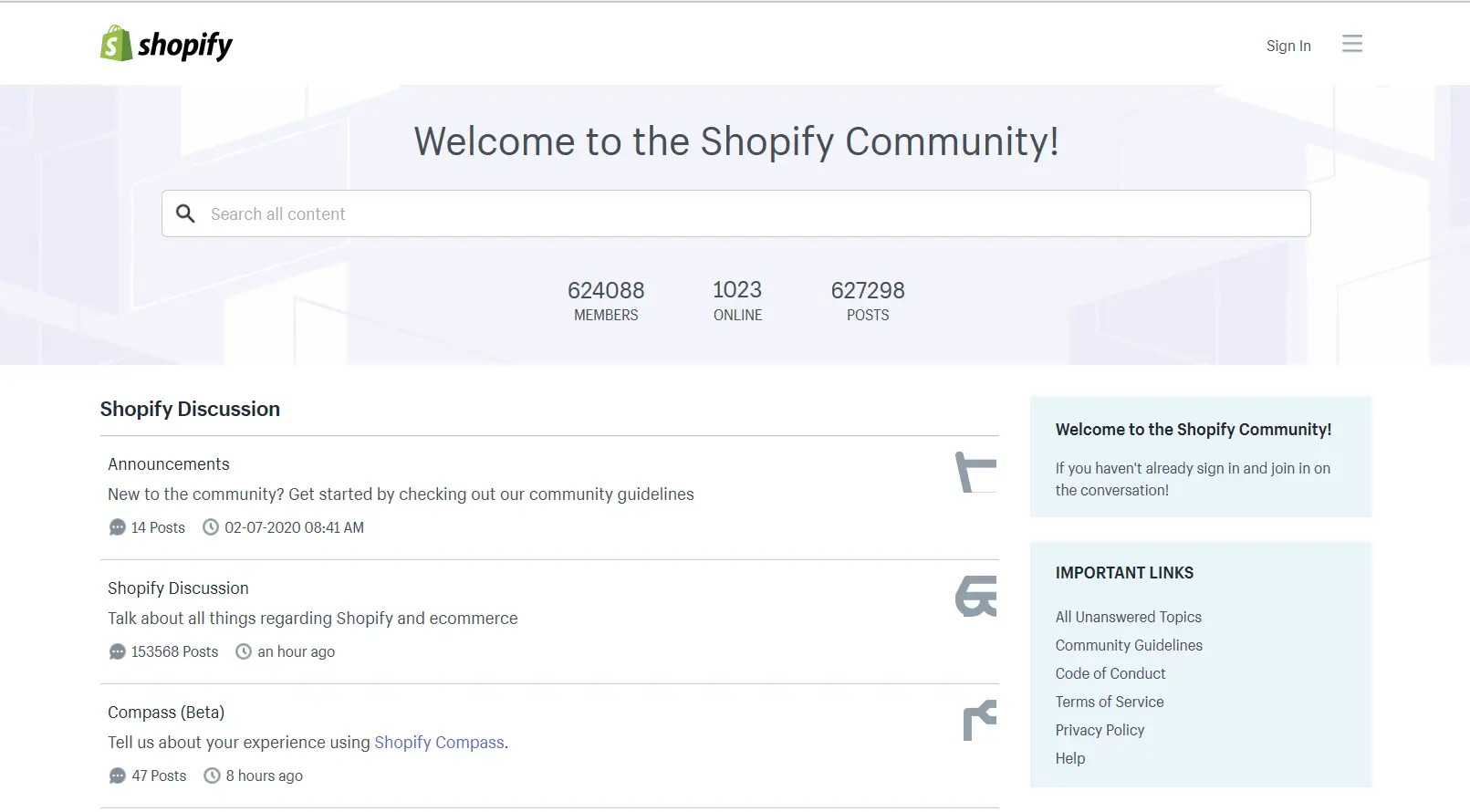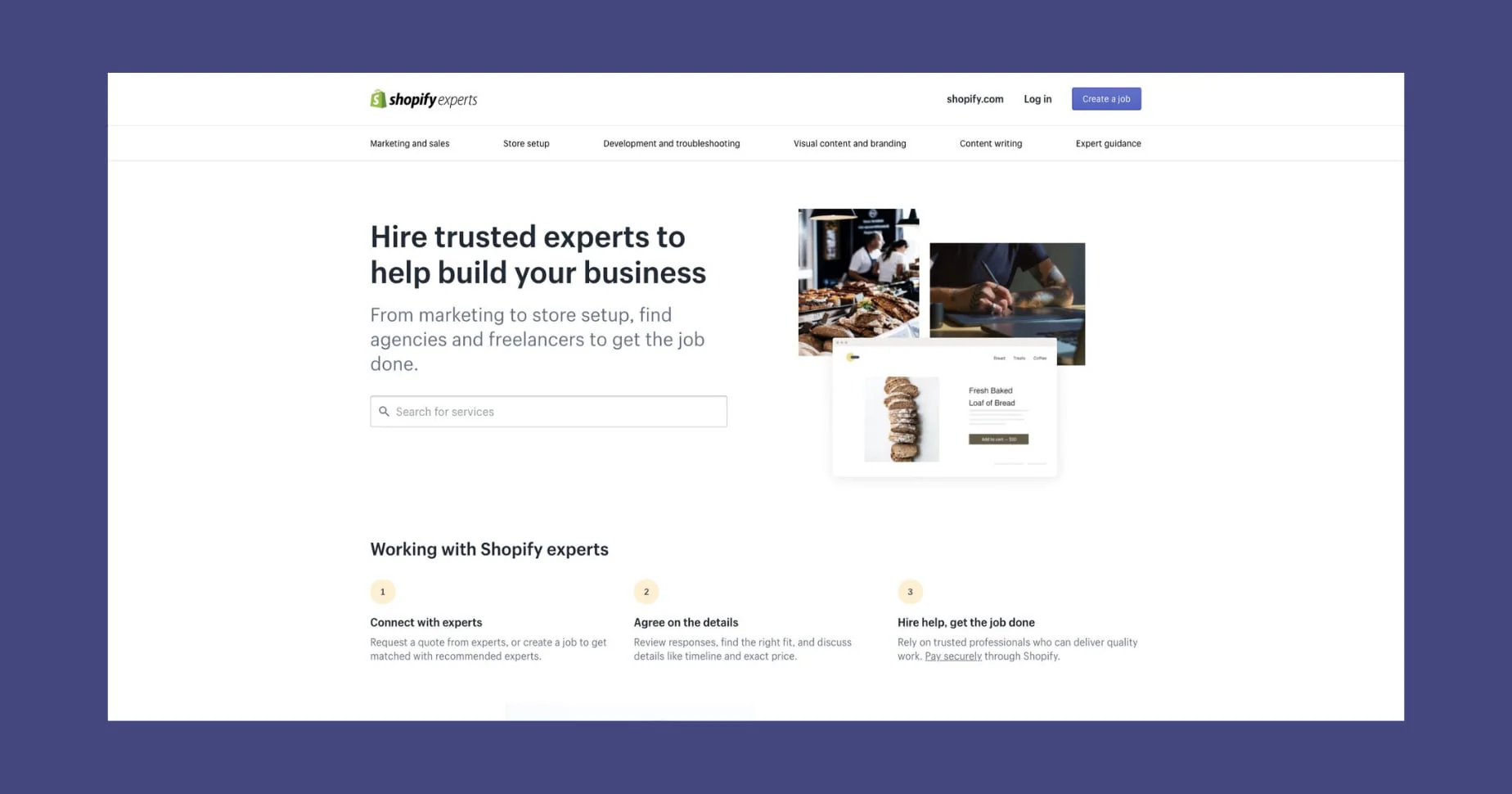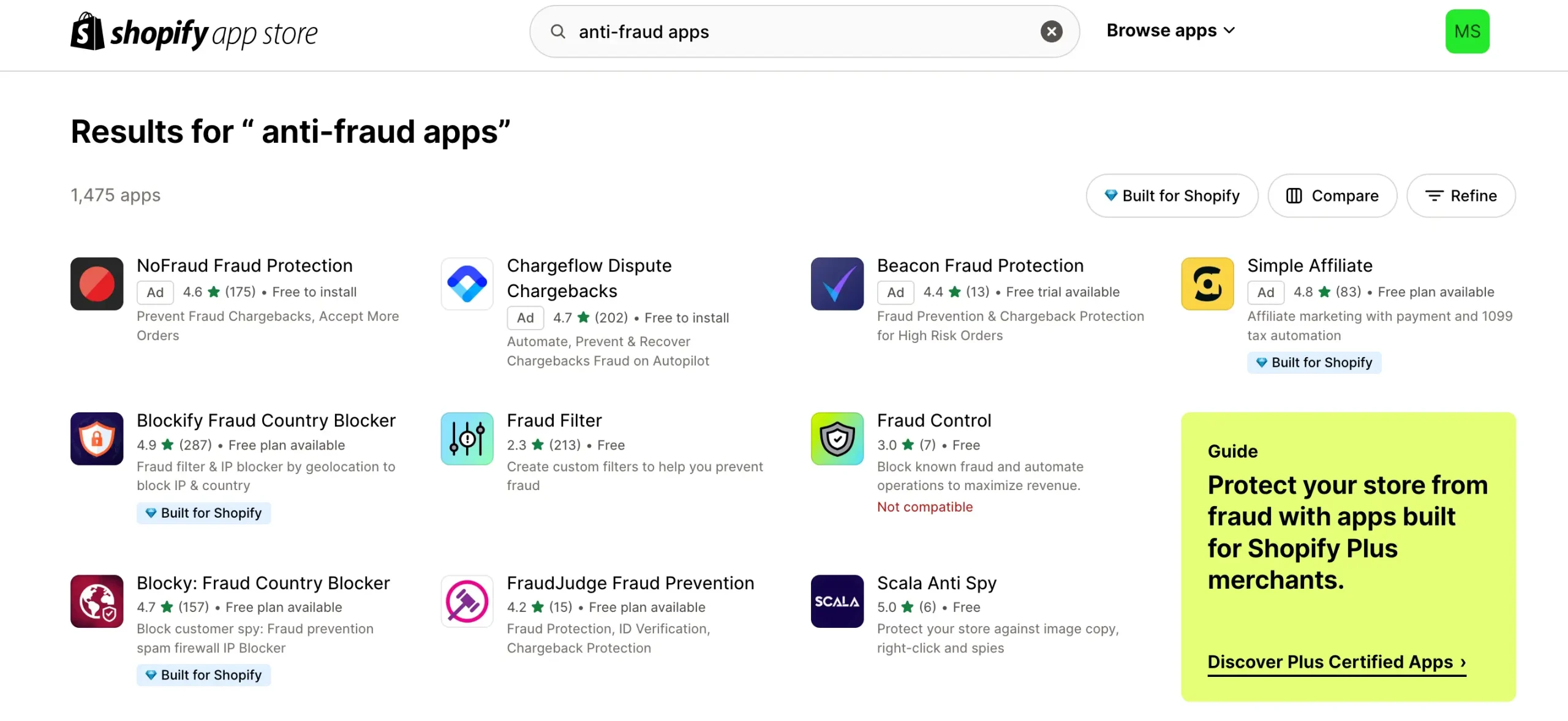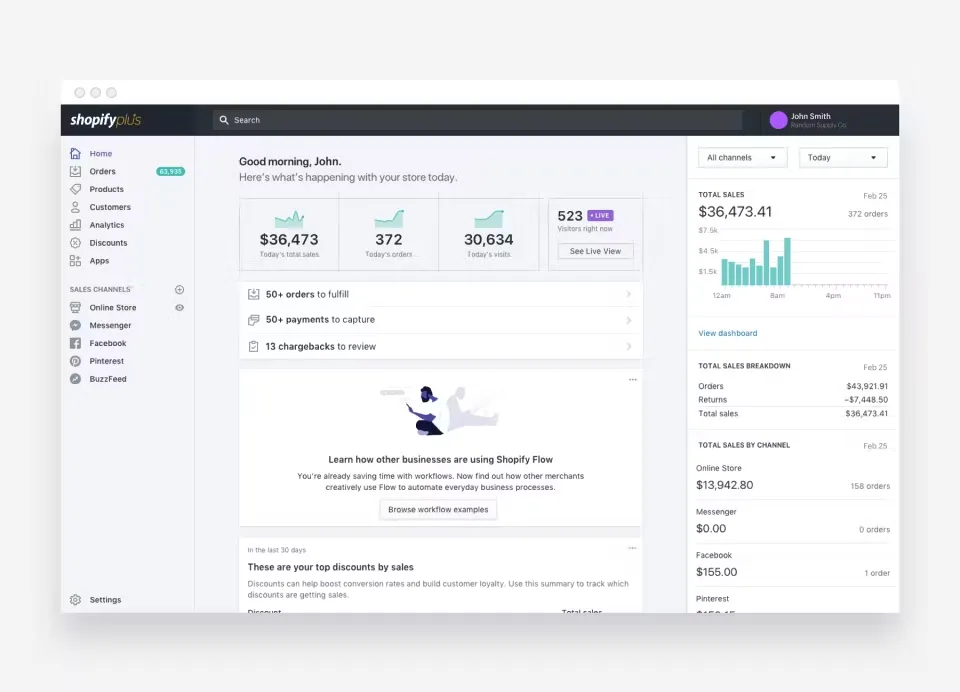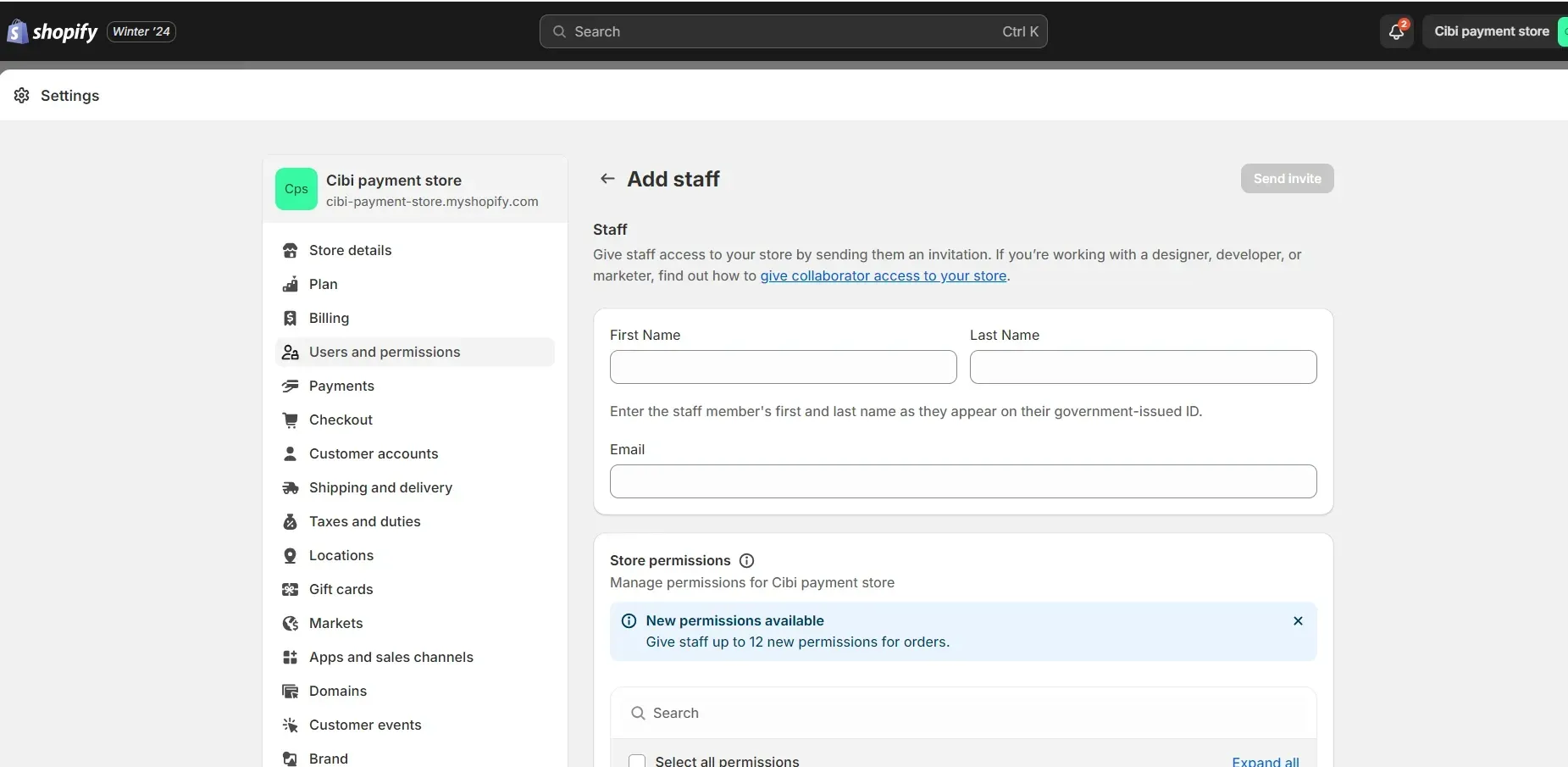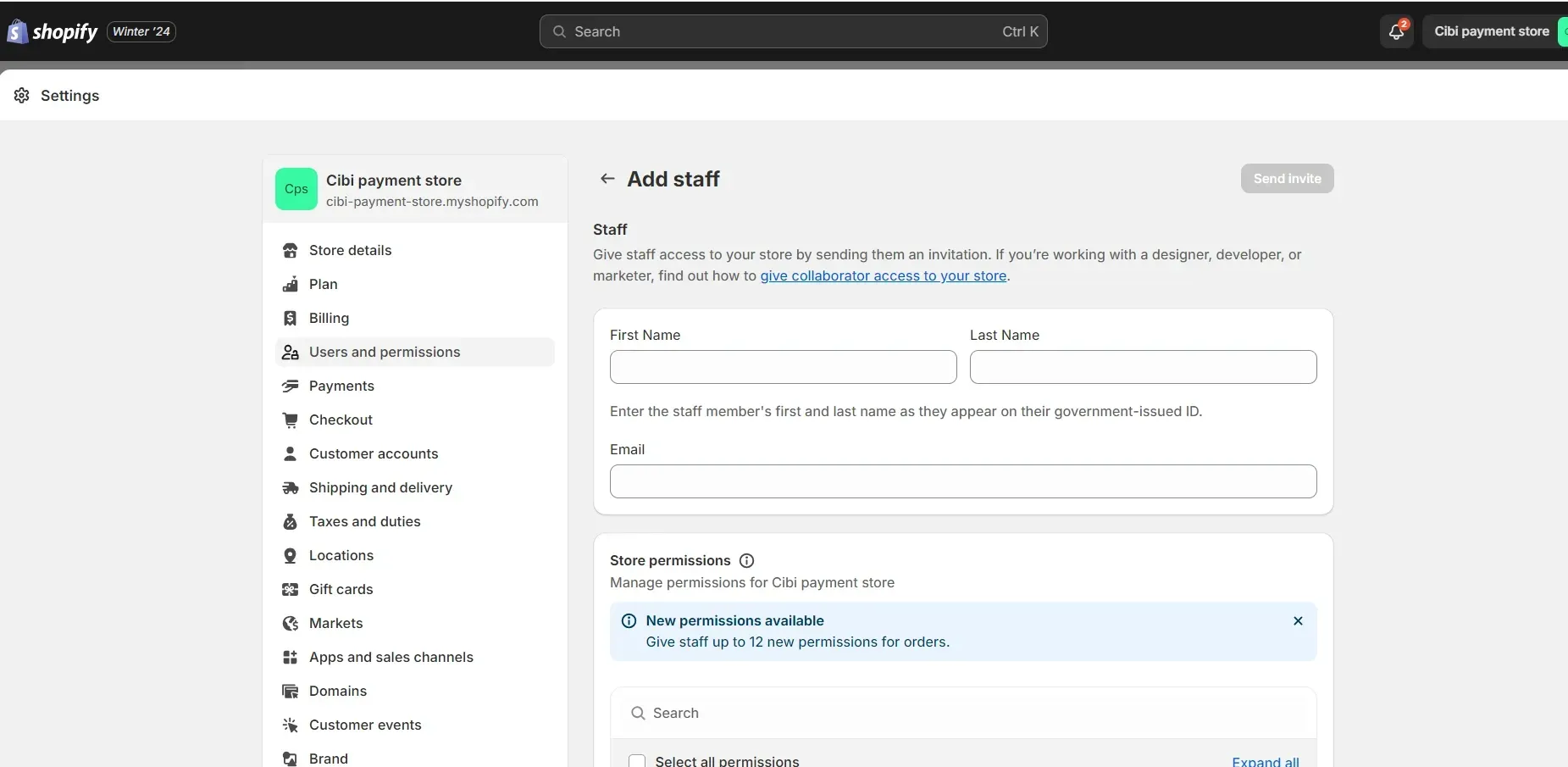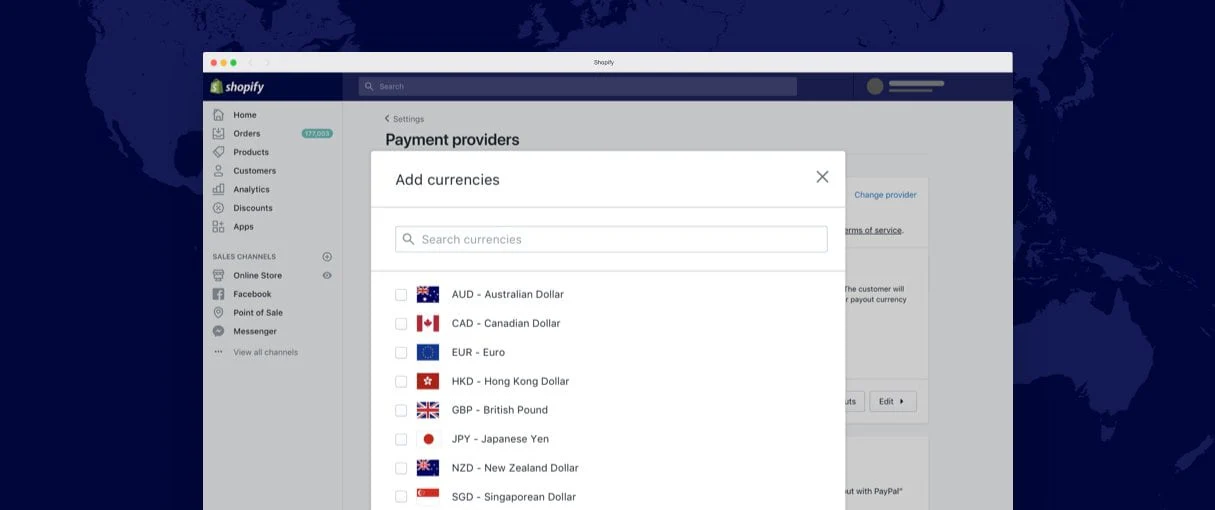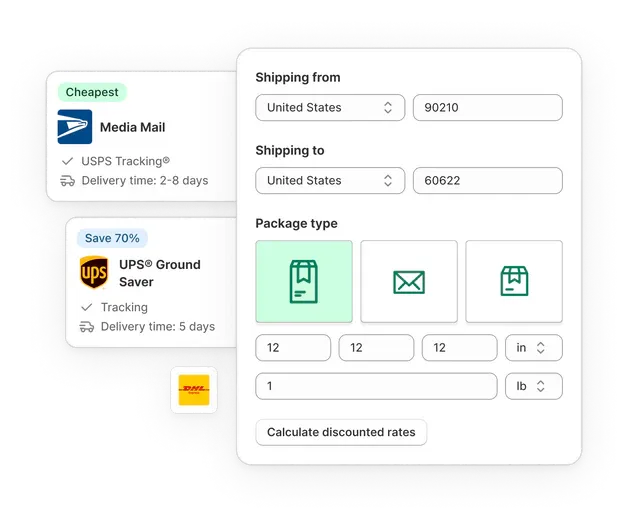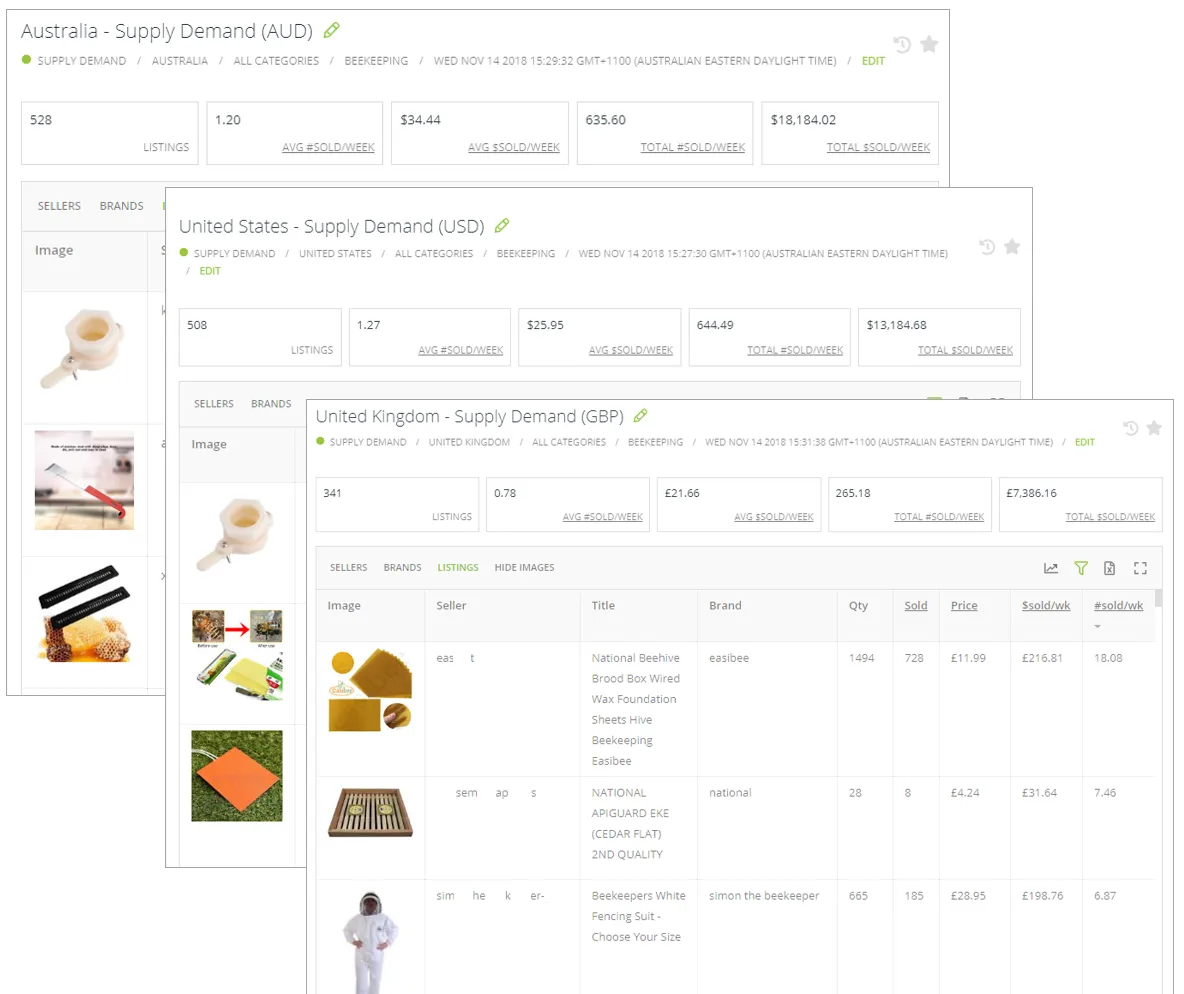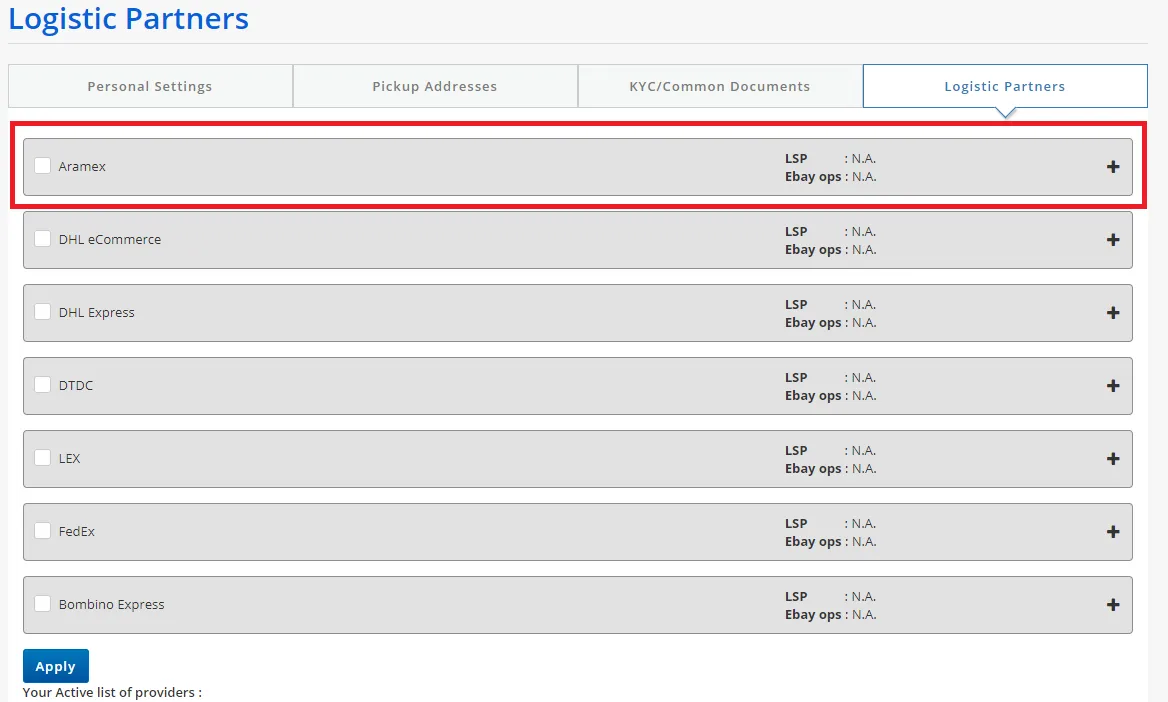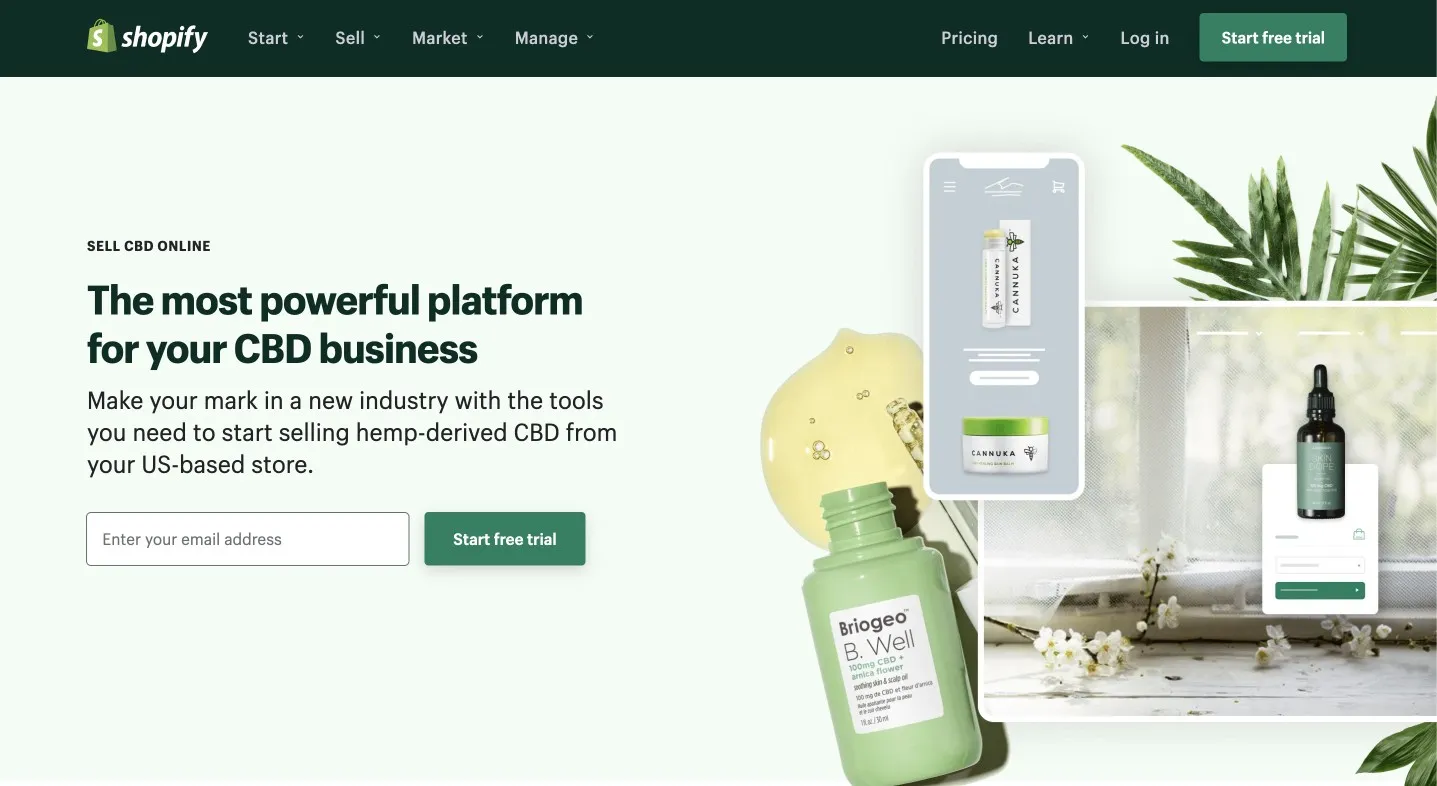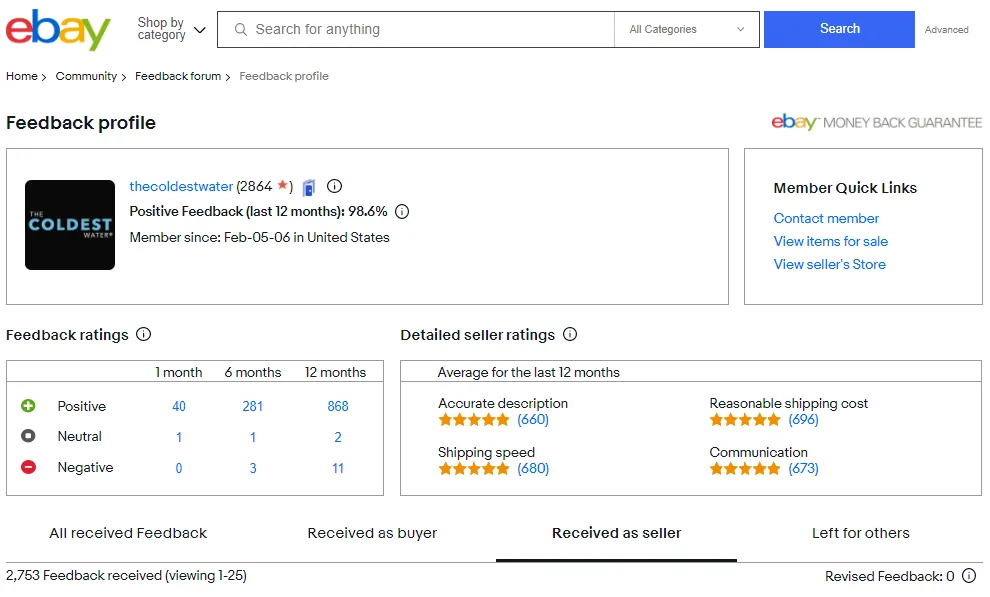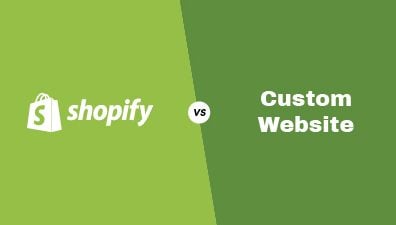In this blog post, we dive into the Shopify vs eBay comparison to help you understand which platform best fits your needs. Shopify is known for empowering users with full control over their own branded online store, while eBay provides access to a vast marketplace where millions of buyers are already active. Both platforms have their strengths, but depending on your business model, one might be better suited than the other.
We explore the key features, pricing models, and seller advantages of Shopify vs eBay, helping you make an informed decision in the competitive eCommerce landscape. Whether you’re starting a new online store or looking to expand, this detailed comparison will highlight the crucial aspects to consider when choosing between Shopify and eBay.
Table of Contents
Shopify vs eBay: Overview
Shopify is known for enabling businesses to build customized, standalone online stores, while eBay operates as a large marketplace where millions of buyers and sellers connect.
Shopify
Shopify is a cloud-based eCommerce platform that provides businesses with the tools and resources needed to create and manage an online store. This SaaS (software as a service) platform was designed to make it easy for businesses of any size to establish a professional and functional online presence, without the need for extensive technical knowledge or experience.
What is Shopify
Shopify is a versatile eCommerce platform that allows individuals and businesses to create their own online stores to sell products directly to customers. Unlike eBay, which operates as an auction-based marketplace, Shopify gives users full control over the design, branding, and functionality of their store. Whether you are selling physical goods, digital products, or services, Shopify provides a robust infrastructure to help you build a personalized storefront. The platform is particularly known for its ease of use, allowing even those without technical expertise to manage every aspect of their online business—from product listings to customer service and payments.

When comparing Shopify vs eBay, one of the significant differences lies in the level of control. Shopify offers complete autonomy over your store, whereas eBay is more about joining a larger marketplace where your products compete with countless others. This independence in Shopify allows sellers to build a unique brand identity and customer experience that is harder to achieve on eBay.
Basic Background Information
Launched in 2006, Shopify was initially created to fill the gap for businesses looking for a user-friendly and customizable eCommerce solution. Tobias Lütke, one of the founders, built the platform out of frustration with the limited options available at the time for creating a professional online store. Shopify’s vision was to enable users to sell online, in-person, and on social media without needing to hire developers or learn coding skills.
Today, Shopify powers over 1.7 million businesses worldwide, across different industries and sizes, from solo entrepreneurs to large enterprises. The platform is known for its app ecosystem, which allows store owners to extend their site’s functionality through thousands of available third-party apps. This gives Shopify an edge in customization when comparing Shopify vs eBay, where sellers are more constrained by the marketplace’s built-in features.
Another advantage Shopify offers is its scalability. Whether you’re a small business just starting out or an established brand looking to expand, Shopify’s pricing tiers and features can accommodate growth without the need for a major overhaul. In contrast, while eBay is great for immediate exposure, scaling on the platform may come with increased fees and competition, making it challenging for sellers to differentiate themselves.
Market Share and User Base
Shopify has made significant strides in the eCommerce space, particularly in North America. As of 2024, Shopify has secured approximately 10.3% of the global eCommerce market share, putting it among the top contenders alongside platforms like Amazon and eBay. Shopify’s user base consists mainly of small to medium-sized businesses (SMBs), but its premium enterprise solution, Shopify Plus, caters to large businesses with advanced needs.
In terms of demographics, Shopify sellers are typically entrepreneurs, independent retailers, and growing brands that prioritize ownership and control over their store. This is in contrast to eBay’s user base, which includes a broad range of individual sellers, resellers, and businesses that benefit from the auction-style marketplace.
When analyzing Shopify vs eBay, it’s important to note that while Shopify focuses on building long-term, branded online stores, eBay offers access to an immediate audience, especially for used or rare items. With over 182 million users worldwide on eBay, the marketplace presents opportunities for exposure but limits personalization. On the other hand, Shopify provides an environment where sellers can cultivate repeat customers and control every aspect of the buyer journey, from design to post-sale engagement.
eBay
eBay is a global online marketplace that provides a platform for businesses and individuals to buy and sell goods. eBay allows individuals and businesses to sell a wide range of products and services, including new and used items, to global audiences. This marketplace is known for its auction-style listings, where buyers can bid on items, but it also supports fixed-price and buy-it-now listings.
What is eBay
eBay is a global online marketplace that allows individuals and businesses to buy and sell goods, both new and used, in a variety of categories. Unlike Shopify, which focuses on providing businesses with the tools to create and manage their own eCommerce websites, eBay operates as an auction-style platform where sellers list items and buyers can bid or purchase them immediately. This marketplace model means that sellers on eBay are part of a larger ecosystem, with millions of potential customers browsing the site daily.
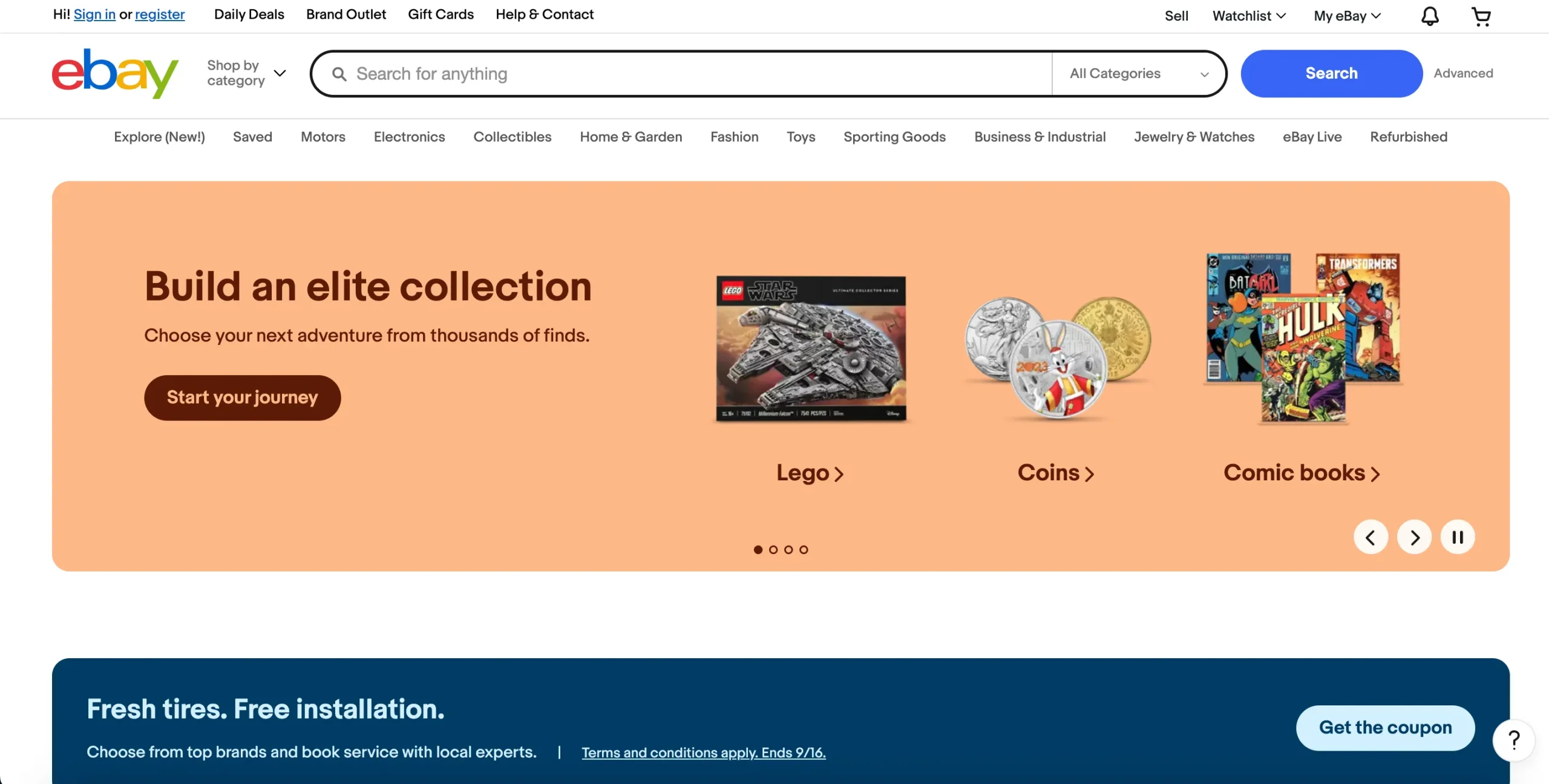
When comparing Shopify vs eBay, one key distinction is that eBay is built around an existing community of buyers and sellers, allowing for immediate visibility. On Shopify, sellers have to build their own audience through marketing and brand development. eBay’s marketplace functionality offers convenience for sellers who are looking to leverage an established audience, but it comes at the cost of losing control over branding and user experience.
Basic Background Information
Founded in 1995 by Pierre Omidyar, eBay was one of the pioneers of online commerce, creating a platform where people could buy and sell almost anything. Starting as an auction site for collectors of rare items, it has since grown into one of the largest eCommerce platforms in the world. Today, eBay is synonymous with online auctions, but it has also evolved to include fixed-price listings and a wide array of product categories, ranging from electronics to fashion, vehicles, and home goods.
Over the years, eBay has introduced features that streamline the selling process, such as the Buy It Now option, which allows buyers to purchase an item immediately without waiting for an auction to end. This innovation helped attract a broader range of sellers and buyers who preferred the convenience of a traditional online shopping experience.
In comparing Shopify vs eBay, it’s important to understand that eBay’s marketplace model offers ease of entry for new sellers, while Shopify requires more effort to set up a standalone online store. However, the trade-off is that Shopify gives you complete ownership over your website, branding, and customer relationships, while eBay sellers are competing within a massive marketplace where brand identity is secondary.
Market Share and User Base
eBay remains one of the most recognized names in online retail, boasting a massive global user base. As of 2024, eBay has more than 182 million active buyers worldwide, making it a significant player in the eCommerce industry. The platform is especially popular for secondhand goods, collectibles, and niche products, which distinguishes it from Shopify’s broader appeal to entrepreneurs and businesses looking to sell new products.
While Shopify’s market share continues to grow, particularly in North America, eBay remains a dominant force in certain categories, especially in the resale and auction markets. However, eBay’s market share has been gradually shrinking as more specialized eCommerce platforms like Shopify attract businesses that prefer full control over their branding and customer experience.
The demographic of eBay sellers varies widely, from individual hobbyists and resellers to established businesses. eBay’s low barrier to entry makes it accessible to nearly anyone, which is one of its key advantages in the Shopify vs eBay comparison. Shopify, by contrast, tends to attract businesses that are looking to scale, develop long-term customer relationships, and build a recognizable brand.
When considering Shopify vs eBay, the user base is another critical factor. While Shopify provides tools to help you create a unique online store, you’ll need to invest in marketing to attract customers. In contrast, eBay’s marketplace offers instant access to millions of potential buyers but with more competition and less opportunity to create a distinct brand presence.
In summary, eBay’s strengths lie in its vast marketplace and established customer base, making it ideal for sellers who want immediate access to a global audience. However, when comparing Shopify vs eBay, Shopify’s platform offers greater flexibility, scalability, and control for those looking to build a dedicated online store.
Shopify vs eBay: Detailed Comparison
Shopify provides sellers with complete control over their store’s branding, customization, and operations, while eBay offers access to an existing marketplace with millions of potential buyers. In this detailed comparison, we will examine various aspects such as ease of use, pricing, customization, traffic generation, and more to help you decide which platform better suits your eCommerce goals.
Ease of Use
Both Shopify and eBay aim to simplify the online selling process, but they do so in distinct ways. Shopify focuses on providing a user-friendly, customizable platform for building an online store, while eBay operates as a large marketplace with a streamlined product listing process. In this section, we’ll dive into the interface, setup process, and overall usability of Shopify vs eBay, highlighting how each platform serves different types of sellers.
Shopify’s Interface and Setup
Running your own Shopify store doesn’t require you to be a smart techie. Shopify already has a built-in store structure with a variety of templates that are adaptable and customizable, saving you the bother of starting from scratch. If you choose not to use Shopify’s builder, you can also develop bespoke solutions.
The Shopify interface is simple and understandable, even for beginners, even though the store won’t be up and operating in a matter of clicks. Even beginners can enjoy starting because of the built-in tools and features, which make the process easy.
Overview of Shopify’s User-Friendly Dashboard and Customization Options
Shopify is designed to be intuitive, offering a highly organized and user-friendly dashboard that makes it easy for even novice sellers to get started. The dashboard provides all the essential tools right at your fingertips, from managing products and orders to handling payments, marketing, and analytics. One of the standout features of Shopify is its customization capabilities, which allow you to tailor your store to match your brand’s identity. Sellers have access to a variety of professionally designed themes, both free and paid, which can be customized further to create a unique online presence.
In comparison to eBay, which provides limited options for branding and design, Shopify enables sellers to have full control over the look and feel of their store. eBay, while easy to list products, limits customization to basic templates, meaning sellers cannot differentiate their stores as much as they can on Shopify.
Step-by-Step Process for Setting Up an Online Store
Setting up an online store on Shopify is a streamlined process that can be completed in a matter of minutes. Sellers start by signing up for an account and selecting a theme. The platform walks users through the necessary steps, such as adding products, configuring shipping and payment options, and setting up tax rules. Shopify’s onboarding process is known for being straightforward, with prompts that guide users through each phase of store setup.
Unlike eBay, where product listing is the primary focus, Shopify’s setup involves creating an entire ecosystem for your brand. You are not just listing products for sale; you are building an online store complete with pages like Home, About, Contact, and Blog. This level of customization and complexity gives Shopify a slight edge for those looking to establish a professional online presence.
Shopify’s Drag-and-Drop Functionality for Non-Technical Users
One of the reasons Shopify stands out in the Shopify vs eBay comparison is its drag-and-drop functionality. For sellers who lack technical skills, Shopify offers an intuitive visual editor that allows them to easily arrange elements like images, products, text blocks, and banners on their storefront. This user-friendly approach eliminates the need for coding or hiring a developer to make design changes, giving users the flexibility to create the store they envision without needing extensive technical knowledge.
While eBay offers simplicity in product listing and selling, its platform does not provide the same level of control over page design or layout. On Shopify, users can experiment with various design elements and easily adjust the structure of their site as they see fit.
Complexity for Advanced Customizations and Integrations
Though Shopify excels in user-friendliness, it also provides room for advanced customizations for those who have technical expertise or are willing to hire developers. Shopify’s liquid templating language allows users to access the backend of their store and make changes beyond the default customization options. Advanced sellers can integrate third-party apps or use Shopify’s extensive app store to add custom features, such as product upsells, email marketing automation, or customer loyalty programs.

When comparing Shopify vs eBay in terms of integrations, Shopify takes the lead due to its vast ecosystem of apps and plugins that can extend the platform’s functionality. eBay, in contrast, offers fewer opportunities for integration, focusing mainly on simplifying the selling process. While eBay’s system is undoubtedly easier for beginners, it doesn’t provide the same flexibility for sellers who want to expand their store’s features and capabilities over time.
eBay’s Interface and Setup
In contrast to Shopify’s full-fledged eCommerce platform, eBay operates as a marketplace where sellers list products alongside millions of others. eBay’s interface is designed to simplify the product listing process, especially for individual sellers and small businesses that want to quickly upload items and start selling.
Overview of eBay’s Listing Process
eBay is one of the world’s largest online marketplaces, and its strength lies in its simplicity. For sellers, the most significant advantage of eBay is its straightforward listing process. The platform is designed to allow anyone—from individuals selling used goods to businesses with large inventories—to list their products quickly. eBay’s listing process is streamlined, requiring only a few steps: upload photos, provide a description, set the price, and choose whether to auction the item or offer it as a fixed-price listing. Compared to Shopify, which requires more setup time due to the need to build a full online store, eBay is ideal for those looking to sell items quickly without much customization.
However, when evaluating Shopify vs eBay, one major difference is how the two platforms handle listings. While Shopify provides a comprehensive environment for store creation, eBay is more transactional, focusing on individual listings rather than building a cohesive store experience. On eBay, sellers create listings within the context of an existing marketplace, where their products compete directly with similar items. This approach can generate immediate traffic, but it limits the seller’s ability to build a brand presence, as they’re part of a larger marketplace ecosystem.
Simple Product Listing for Individuals and Businesses
One of the key reasons many sellers flock to eBay is its ease of use, especially for those who want to avoid the technical aspects of building an online store. For individual sellers or small businesses, eBay offers a no-hassle way to get products in front of buyers without the need for extensive setup. The platform’s interface is intuitive, guiding sellers through the steps of creating a listing, which includes choosing a category, writing a product description, setting a price, and uploading images. Sellers also have the option to list their products as an auction, allowing potential buyers to place bids, or as a Buy It Now listing with a fixed price.
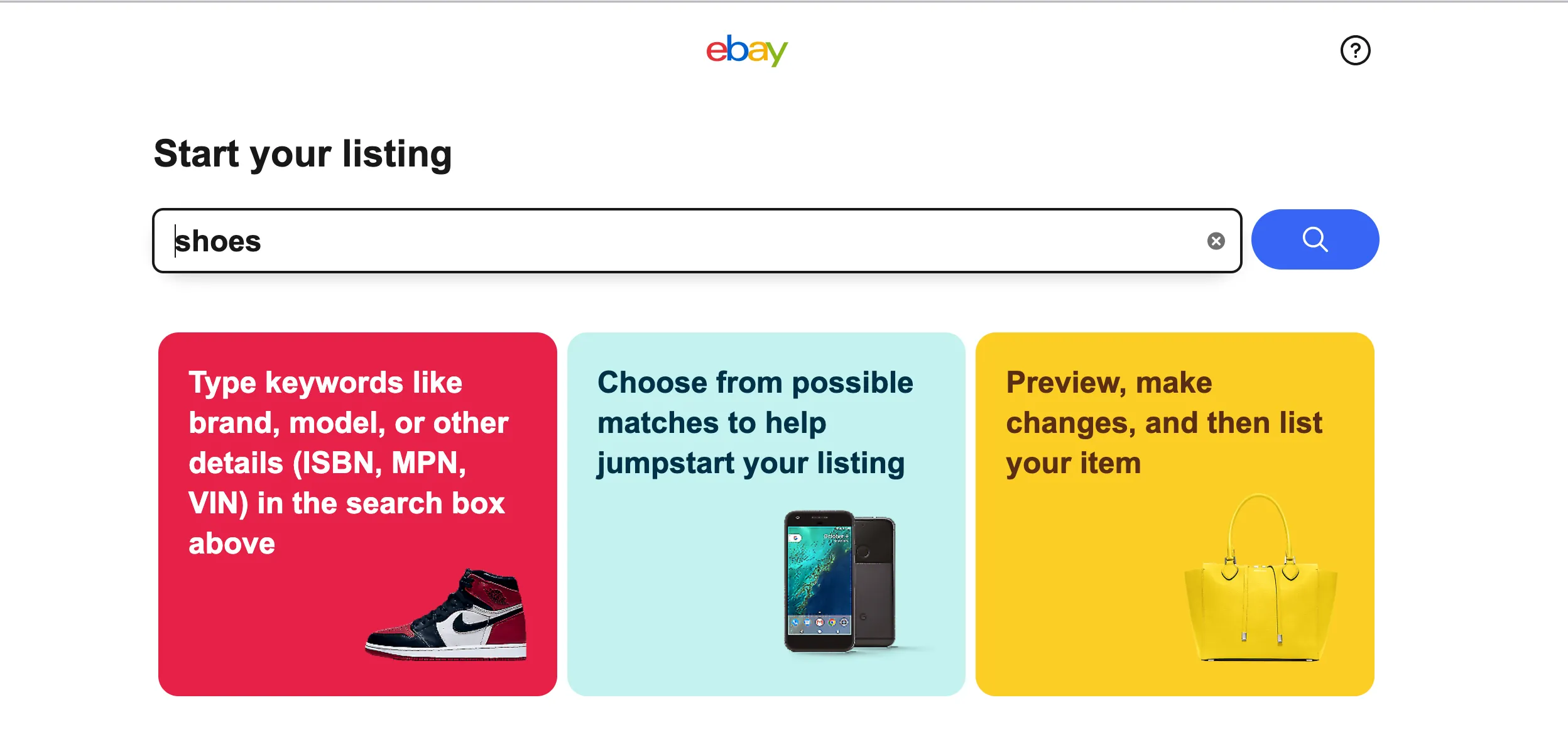
In comparison, Shopify offers a more comprehensive solution but requires more effort upfront. Shopify’s product listing involves more than just setting up products—it includes creating pages, designing the store layout, and configuring payment and shipping settings. While this offers more control over the business, eBay’s simplicity appeals to those looking for a faster path to selling. For individuals who want to list a few items or small businesses looking to test the waters of eCommerce, eBay’s process is convenient. However, as the business grows, sellers might find Shopify’s scalability more advantageous.
Challenges in Setting Up a Branded Store on eBay
While eBay’s simplicity is a significant draw, it poses challenges for those looking to establish a distinct brand identity. Unlike Shopify, where you can fully customize the look and feel of your store, eBay offers limited branding opportunities. Sellers can create an eBay Store for a monthly fee, which allows them to group their listings under one branded storefront, but the level of customization remains minimal. You can upload a store logo, choose a color scheme, and arrange categories, but the overall structure and layout are determined by eBay.
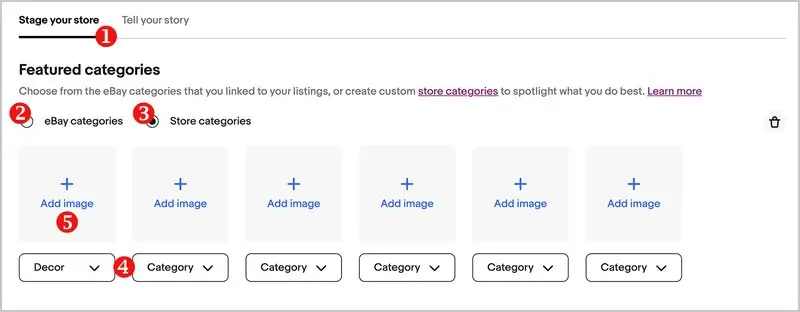
For sellers who prioritize creating a branded shopping experience, Shopify vs eBay presents a stark contrast. Shopify allows for full control over the store’s design, layout, and customer journey, giving businesses the ability to build a recognizable and consistent brand. In contrast, eBay’s marketplace environment doesn’t lend itself to extensive branding, and sellers are limited to basic store features that do little to differentiate their business from competitors. This can be particularly challenging for businesses that rely heavily on brand loyalty and need a customized shopping experience to stand out.
Limitations for Sellers Looking for Advanced Customization
Another drawback for eBay sellers is the platform’s limited customization options. While Shopify offers advanced customization capabilities through its themes and app marketplace, eBay sellers are restricted to the tools provided by the platform. On Shopify, users can modify their storefront using pre-built themes, and those with coding knowledge can access the backend to make even more complex customizations. Shopify also provides integrations with third-party apps, enabling sellers to add features like customer reviews, upselling tools, and marketing automation.
On the other hand, eBay’s primary focus is on listing and selling items, which means there is less room for advanced customizations. Sellers cannot significantly alter the design or layout of their eBay store, and they are unable to add features that might enhance the customer experience, such as loyalty programs or personalized product recommendations. This can be limiting for sellers who want to create a unique shopping experience or expand their store’s functionality over time.
Additionally, eBay’s marketplace structure puts all sellers on a level playing field, which can make it challenging for businesses to stand out. Since every listing on eBay follows a similar format, businesses have fewer opportunities to showcase their brand’s personality or differentiate their products from those of competitors. In contrast, Shopify allows for much greater flexibility, enabling businesses to build a unique and fully customized online store that aligns with their brand’s vision.
Customization and Flexibility
When it comes to customization and flexibility, Shopify and eBay are two very different platforms. Shopify is designed for entrepreneurs and businesses looking to create a unique, fully branded online presence, while eBay operates as a marketplace that focuses on listing and selling products with limited options for customization. Customization is a crucial factor in building a recognizable brand and providing customers with a memorable shopping experience. In the Shopify vs eBay comparison, Shopify stands out for offering a wide array of customization options, whereas eBay’s rigid marketplace structure offers fewer opportunities for personalization. Let’s explore how both platforms compare in terms of customization and flexibility.
Shopify’s Customization Options
Shopify provides a range of customization options such as the flexibility to personalize your store with paid themes, third-party apps, and your domain name to allow store owners to make their online stores unique and reflective of their brands. Compared to an eBay Store, setting up your website requires more work, but you have far more control over the outcome.
Shopify’s Customizable Themes and Templates
One of Shopify’s core strengths lies in its customizable themes and templates. The platform provides a variety of professionally designed themes that cater to different industries and business models, making it easy for sellers to create an aesthetically pleasing online store. Whether you’re selling fashion, electronics, or home goods, Shopify has themes tailored to your needs. Sellers can choose from free or premium themes, each of which can be customized to reflect their brand’s unique identity.
Unlike marketplaces where you have little to no control over how your products are presented, Shopify’s themes allow you to change everything from the color scheme to the layout and fonts, ensuring that your store looks professional and cohesive. The ability to customize themes gives Shopify a significant advantage in comparison to platforms that restrict how sellers can display their products, allowing for a more immersive and branded shopping experience.
Ability to Modify and Design the Storefront to Suit Business Needs
Beyond just selecting a theme, Shopify provides sellers with the tools to modify and design their storefronts to meet their specific business needs. Using Shopify’s built-in editor, sellers can adjust the layout of their homepage, product pages, and collections with ease. This drag-and-drop interface allows users to rearrange elements such as product images, text blocks, and banners without requiring any coding skills.
For businesses with a more complex product catalog or unique selling points, Shopify’s customization options provide the flexibility needed to showcase products effectively. Sellers can organize their store’s navigation, create custom collections, and set up a seamless shopping flow that aligns with their customers’ expectations. This level of flexibility is especially beneficial for businesses that need to highlight certain products or create a tailored user experience.
Unlike other platforms that limit customization to predefined templates, Shopify allows you to craft a store that evolves with your business. As your product offerings and customer base grow, you can easily adapt your storefront to accommodate new product categories, promotional campaigns, and more.
Access to a Wide Range of Third-Party Apps for Functionality Enhancements
Another aspect of Shopify’s customization that sets it apart is the access to an extensive app marketplace. Shopify’s app ecosystem is one of the largest in the eCommerce world, featuring thousands of third-party apps designed to extend the functionality of your store. Whether you’re looking to add features such as email marketing, customer reviews, or product upsells, there’s likely an app available to meet your needs.
For sellers who want to enhance their store’s performance, Shopify’s app store provides tools to streamline operations, improve marketing efforts, and boost conversions. For instance, you can integrate email automation tools, implement chatbots for customer support, or install apps that offer advanced analytics to track customer behavior. These apps can be easily added to your store, often without any technical expertise required, and many come with free trial periods so you can test their effectiveness before committing.
Access to such a wide range of apps gives Shopify a distinct advantage in terms of flexibility. While the core platform is powerful on its own, the ability to enhance your store with third-party apps ensures that your business can keep up with changing market trends and customer expectations. This flexibility allows Shopify users to create a tailored experience for their shoppers, with features that improve engagement and streamline the purchasing process.
Developer Access for Advanced Customization
While Shopify’s out-of-the-box customization options are impressive, the platform also offers more advanced tools for those with technical expertise or the budget to hire developers. Shopify’s Liquid templating language allows developers to access the backend code of the store and make more complex changes beyond what is possible through the visual editor. This enables sellers to create truly bespoke features and layouts that go beyond the standard themes and templates.
For businesses with unique requirements or who want to stand out from the competition, the ability to customize the underlying code can be a game-changer. Whether it’s integrating custom functionality, building a unique checkout experience, or optimizing the store for performance, Shopify provides the flexibility for developers to tailor the store to the business’s exact specifications.
Additionally, Shopify’s API allows for seamless integration with external systems such as inventory management software, CRM tools, and accounting platforms. This is particularly beneficial for larger businesses that need to sync their eCommerce operations with other parts of their business ecosystem. The ability to access developer tools and integrate with external platforms ensures that Shopify is scalable and adaptable for businesses of all sizes.
eBay’s Customization Options
eBay provides a wide range of features and functionality for both buyers and sellers, though not nearly as extensive as Shopify can be. While eBay’s customization options are easy to use and effective for listing products quickly, they fall short when compared to the flexibility offered by Shopify. eBay’s basic templates, lack of personalization, and preset listing formats make it more challenging for sellers to create a unique and branded online store. For businesses that rely on building strong brand identity and crafting a custom shopping experience, Shopify’s extensive customization tools are a better fit, while eBay remains an option for those who prioritize ease of use and quick product listings within a competitive marketplace.
Basic Store Templates and Limited Customization Options on eBay
eBay’s platform is primarily designed as a marketplace where sellers list their products within a standardized structure. As a result, eBay offers limited customization options for sellers who want to create a unique online store. eBay provides sellers with basic store templates that allow for minimal modifications, such as changing the layout or adding a logo. These templates are designed to help sellers quickly set up a storefront without much technical knowledge, but they don’t offer the same level of flexibility as platforms like Shopify.
Sellers on eBay can choose from a few predefined themes to slightly personalize their store, but these themes are far less dynamic than Shopify’s customizable templates. eBay’s store templates are functional, providing a clean and organized layout for listing products, but they don’t offer many opportunities for creating a fully branded experience. For sellers whose primary goal is to move products quickly within an established marketplace, these basic templates may suffice, but for those looking to create a strong, unique brand, the options are limiting.
Lack of Personalization and Branding Opportunities Compared to Shopify
One of the most significant differences between Shopify and eBay is the level of control that sellers have over their branding. On Shopify, sellers can design a fully customized store, with control over every aspect of their site’s appearance, from colors and fonts to the overall layout and user experience. In contrast, eBay operates as a large marketplace where all sellers must conform to the same basic structure. This means that personalization opportunities are minimal, and branding becomes much more challenging.
On eBay, sellers are part of a larger ecosystem where their products are listed alongside millions of others. While sellers can add a logo, header image, and customize a few aspects of their storefront, these changes are often overshadowed by the platform’s overarching layout. The focus on product listings rather than store design makes it difficult for sellers to create a distinct brand identity. When comparing Shopify vs eBay, the ability to personalize the shopping experience on Shopify is a major advantage for businesses that rely on branding to attract and retain customers.
For sellers on eBay, the lack of advanced customization can make it challenging to stand out. The platform’s marketplace structure is designed to prioritize product listings, meaning that sellers have less control over how their brand is represented to buyers. This can be especially limiting for businesses that are looking to build a long-term, recognizable brand, as eBay’s format doesn’t provide the tools necessary to create a fully customized, branded shopping experience.
eBay’s Preset Listing Formats and Restrictions for Sellers
Another limitation of eBay’s customization options is the reliance on preset listing formats. eBay offers sellers two primary listing options: auction-style listings and fixed-price listings. While these formats are simple and effective for selling products, they come with restrictions that limit sellers’ ability to customize their product pages. Each listing follows a structured format that includes a product title, description, and images, with little room for creative design or layout changes.
The preset nature of eBay’s listings ensures consistency across the platform, which benefits buyers by providing a familiar shopping experience. However, for sellers, this rigidity can be a drawback. Unlike Shopify, where sellers can design each product page with unique layouts, content, and media, eBay’s listings are standardized, giving sellers little room to differentiate their product pages from others.

In addition, eBay imposes certain restrictions on what sellers can include in their listings. For example, sellers must adhere to specific guidelines for product images, descriptions, and pricing. These restrictions, while aimed at maintaining a uniform shopping experience, limit the flexibility that sellers have in presenting their products. This lack of control can be frustrating for businesses that want to highlight particular features or benefits of their products in a more creative way.
Overall, eBay’s customization options are functional but limited. Sellers can quickly create a store and list products, but they are constrained by the platform’s standardized structure. For businesses looking for a simple way to sell products within a large marketplace, eBay’s approach may be suitable. However, for those who prioritize branding, personalization, and flexibility, platforms like Shopify offer far more opportunities for creating a tailored, branded experience.
Traffic and Exposure
Traffic and exposure are crucial for the success of any online business. The more visitors a store can attract, the higher the potential for conversions and sales. Both Shopify and eBay approach traffic generation differently, with Shopify giving sellers more control over how they attract visitors, while eBay benefits from being an established marketplace with a large, built-in audience. In this section, we will focus on Shopify’s methods for traffic generation and how sellers can leverage the platform’s tools to bring customers to their online stores.
Shopify Traffic Generation
Shopify’s traffic generation relies on proactive marketing strategies. Through SEO, social media marketing, email campaigns, and paid advertising, Shopify sellers can drive targeted traffic to their stores. Shopify’s built-in marketing tools and integrations with major ad platforms like Facebook and Google provide flexibility and control, allowing businesses to tailor their traffic generation efforts to their unique needs.
Shopify’s Reliance on External Marketing Efforts
Unlike eBay, which provides sellers with access to a built-in audience of millions of active buyers, Shopify operates as a standalone platform where traffic generation relies heavily on the seller’s external marketing efforts. Shopify gives sellers full control over their own online store, but this means that attracting visitors requires a proactive marketing strategy. Sellers on Shopify must rely on methods such as search engine optimization (SEO), social media marketing, email campaigns, and paid advertising to drive traffic to their store.
SEO is one of the most effective ways to generate organic traffic to a Shopify store. Shopify offers built-in SEO tools that help sellers optimize their product pages, blog posts, and other content for search engines like Google. By using relevant keywords, meta descriptions, and alt texts for images, sellers can improve their rankings in search engine results pages (SERPs), making it easier for potential customers to find their products. However, successful SEO requires ongoing effort and expertise, and results can take time to materialize.
Social media marketing is another key avenue for driving traffic to Shopify stores. Platforms like Instagram, Facebook, and Pinterest allow sellers to showcase their products to a broad audience and engage with potential customers. Shopify offers seamless integrations with social media platforms, enabling sellers to promote their products, run ads, and even sell directly through social media channels. These platforms are particularly effective for businesses with visually appealing products, such as fashion, beauty, and home decor.
Paid advertising is often necessary for generating quick results, especially for new Shopify stores that don’t yet have strong organic traffic. Google Ads and Facebook Ads are among the most popular choices for Shopify sellers. Paid ads allow businesses to target specific demographics and interests, making it easier to reach potential customers who are likely to convert. While paid ads can be a powerful tool for increasing traffic, they also require careful budgeting and monitoring to ensure a positive return on investment (ROI).
In comparison to eBay, which provides immediate access to an established audience, Shopify requires more effort in traffic generation. However, the benefit is that Shopify sellers have full control over their marketing strategies and can tailor their efforts to target specific customer segments, rather than competing with other sellers in a crowded marketplace.
Drive Traffic Through Shopify’s Built-in Marketing Tools
Shopify provides a range of built-in marketing tools designed to help sellers drive traffic to their stores without relying entirely on third-party platforms. These tools include email marketing integrations, discount code creation, and automated abandoned cart recovery. Sellers can create and manage marketing campaigns directly from their Shopify dashboard, making it easier to implement targeted strategies for attracting visitors.
One of the most effective ways to bring customers back to a Shopify store is through email marketing. Shopify integrates with popular email marketing services like Mailchimp and Klaviyo, allowing sellers to create personalized email campaigns. By sending newsletters, promotions, and product updates to customers who have subscribed to their mailing list, sellers can keep their audience engaged and encourage repeat visits to the store.
Abandoned cart recovery is another essential tool for driving traffic back to a Shopify store. When a customer adds products to their cart but doesn’t complete the purchase, Shopify automatically sends an email reminding them to finish their order. This feature is particularly valuable for capturing potential sales that might otherwise be lost, helping sellers recover a portion of the traffic that didn’t convert during the initial visit.
Shopify also allows sellers to create discount codes and promotions to incentivize visitors to make a purchase. These marketing campaigns can be shared across multiple channels, including social media, email, and the Shopify store itself. By offering limited-time discounts or free shipping, sellers can create a sense of urgency that encourages visitors to act quickly, driving both traffic and conversions.
Compared to eBay, which primarily relies on organic traffic from its marketplace, Shopify provides more flexibility for sellers to create targeted marketing campaigns. However, this also means that Shopify sellers need to be proactive in their marketing efforts to ensure consistent traffic to their store.
Shopify’s Integrations with Facebook, Google, and Other Ad Platforms
One of Shopify’s biggest advantages in terms of traffic generation is its seamless integrations with major advertising platforms like Facebook, Google, Pinterest, and TikTok. These integrations allow sellers to create and manage ad campaigns directly through their Shopify dashboard, simplifying the process of driving targeted traffic to their store. By leveraging these powerful advertising networks, Shopify sellers can reach a broader audience and improve their chances of converting visitors into customers.
For example, Shopify’s integration with Facebook allows sellers to set up Facebook Shops, enabling customers to browse and purchase products directly from their Facebook or Instagram accounts. Sellers can also create targeted Facebook Ads that appear in users’ feeds, driving traffic back to the Shopify store. This level of integration makes it easy for businesses to tap into Facebook’s massive user base and reach potential customers where they spend a significant amount of time.
Similarly, Shopify integrates with Google Shopping, allowing sellers to list their products directly in Google’s search results and Shopping tab. This feature is especially valuable for businesses looking to attract high-intent buyers—customers who are actively searching for specific products. By appearing in Google’s product listings, Shopify stores can capture more traffic from users who are ready to make a purchase.
Shopify also supports integrations with other advertising platforms like Pinterest and TikTok, which are particularly effective for brands with highly visual products. With Pinterest, sellers can promote their products through Pins and create shoppable posts that link directly to their Shopify store. On TikTok, Shopify offers tools to help businesses run ads and create viral marketing content that resonates with a younger demographic.
By utilizing these ad platform integrations, Shopify sellers have more control over their marketing strategies compared to eBay, where exposure is largely dependent on the platform’s organic traffic. Sellers on Shopify can tailor their ad campaigns to target specific customer segments, optimizing their advertising budget for maximum returns. This flexibility in traffic generation, combined with the ability to integrate with multiple advertising platforms, makes Shopify a powerful tool for businesses looking to scale their online presence.
eBay’s Built-In Audience
While Shopify provides tools and options to generate traffic through external marketing efforts, eBay benefits from being a long-established marketplace with a built-in audience. eBay’s built-in audience and instant visibility provide sellers with an immediate advantage in terms of traffic and exposure, especially for those who want to sell products quickly without extensive marketing efforts. eBay’s marketplace model remains a strong option for sellers looking to tap into an existing buyer base with minimal effort.
eBay’s Marketplace with Millions of Active Buyers
One of the most significant advantages of selling on eBay is the platform’s large, built-in audience. eBay has been a staple in the online marketplace industry since 1995, amassing millions of active buyers worldwide. Sellers who list their products on eBay gain immediate access to this expansive customer base without needing to build or attract traffic themselves. This built-in audience allows new sellers to start making sales relatively quickly, as eBay’s search algorithms and categories help connect buyers to the products they are looking for.
This is a crucial differentiator when comparing platforms like Shopify vs eBay. On Shopify, sellers must invest time and resources into generating traffic through SEO, social media, paid advertising, and email marketing. In contrast, eBay’s existing buyer community provides sellers with a significant head start in terms of exposure. The platform is particularly advantageous for sellers who want to sell niche items, collectibles, or products that are in high demand among eBay’s user base.
The Advantage of Instant Visibility for Sellers
Another major benefit of eBay’s marketplace is the instant visibility it offers to sellers. As soon as a seller lists a product, it becomes visible to millions of potential buyers browsing the platform. eBay’s search engine and filtering options make it easy for buyers to find specific products, whether they are looking for used items, auctions, or new goods from businesses. Sellers do not need to spend time and effort building a customer base or driving traffic through external marketing channels, as eBay’s system directs buyers to listings based on product relevance and demand.
This instant visibility is especially useful for small sellers or those who are just starting out in eCommerce. Instead of relying on external advertising campaigns or social media efforts to attract visitors, eBay sellers can rely on the platform’s existing infrastructure to put their products in front of potential customers immediately. This gives eBay a competitive edge over platforms like Shopify, where building traffic and brand visibility takes longer and requires strategic marketing efforts.
However, this visibility is dependent on eBay’s algorithms, which prioritize factors like relevance, product category, and seller rating. Listings that match buyer searches are shown more frequently, so it’s essential for sellers to optimize their listings to increase visibility within eBay’s marketplace.
Challenges with Standing Out in a Competitive Marketplace
While eBay offers instant exposure and access to millions of buyers, the sheer size of the platform also presents challenges for sellers, especially when it comes to standing out in a highly competitive marketplace. On eBay, sellers are competing with thousands of other listings for the same or similar products, making it difficult to differentiate their items from those of competitors. Unlike Shopify, where sellers can create a custom storefront and build a unique brand identity, eBay limits sellers’ ability to customize their presence on the platform.
This lack of branding and personalization can make it harder for sellers to build long-term customer relationships, as buyers are often more focused on price, shipping speed, and seller ratings than brand loyalty. On eBay, buyers are typically shopping for the best deal, which can lead to intense price competition. Sellers must find ways to optimize their listings, such as using high-quality images, writing detailed product descriptions, and maintaining high seller ratings to increase their chances of standing out.
Moreover, eBay’s marketplace structure can limit sellers’ ability to establish their brand as buyers view products through eBay’s interface, rather than through a unique storefront. While eBay offers features like eBay Stores, which allow sellers to group their products under a branded storefront, the overall look and feel of the store is still governed by eBay’s design and format. This contrasts sharply with Shopify, where sellers can build a fully customized website and create a distinct brand experience.
Differences in Traffic Sources Compared to Shopify
The traffic sources on eBay differ significantly from those on Shopify. While Shopify store owners are responsible for generating traffic through external efforts such as SEO, social media marketing, and paid ads, eBay sellers rely almost entirely on the internal traffic of the eBay marketplace. The majority of eBay’s traffic comes from buyers who are already searching for products on the platform, meaning sellers do not need to divert resources toward attracting visitors from outside the platform.
In contrast, Shopify sellers must take a more proactive approach to driving traffic, utilizing tools like Google Ads, Facebook Ads, and email marketing campaigns. Shopify allows sellers to direct traffic to their online store from a variety of sources, giving them more control over their marketing strategy. While this means Shopify sellers must put in more work to generate traffic, it also provides greater flexibility in targeting specific audiences and building a dedicated customer base over time.
On eBay, the bulk of traffic comes from organic searches within the platform, but sellers are also encouraged to use eBay’s own promotional tools, such as eBay Promoted Listings, to boost visibility. Promoted Listings allow sellers to pay for additional exposure by featuring their products at the top of search results or on category pages. While this can increase traffic to specific listings, it comes at an additional cost, and sellers must weigh the benefits of paid promotion against the competitive nature of eBay’s marketplace.
Marketing and SEO
Marketing and SEO are two of the most critical aspects of running a successful online business. The ability to drive traffic to your store, engage customers, and rank high in search results directly affects a seller’s visibility and conversion rates. Shopify and eBay provide different sets of tools and strategies for sellers to promote their products and optimize for search engines, each with its own strengths and limitations. In this section, we will dive into the marketing and SEO capabilities of both platforms, comparing Shopify’s flexible, customizable approach with eBay’s built-in marketplace model.
Shopify
It’s crucial to keep in mind that if you use Shopify, you will be managing a website. It requires time and effort on your part to promote it and increase traffic. You have complete freedom when promoting your Shopify store, your products, and discounts using Shopify email campaigns and content marketing. Shopify offers a variety of SEO options, including meta descriptions and titles, tags, 301 redirects, unique URLs, canonical tags, image optimization, and more. All those elements will aid in your store page rising to the top of search results.
Shopify’s Built-In Marketing Tools and Flexibility
Shopify excels in providing a wide range of marketing tools, offering sellers the flexibility to execute their marketing strategies in a way that best fits their brand and business model. Shopify integrates with multiple channels, including social media, email marketing, and search engine ads, allowing sellers to promote their products across various platforms and engage customers directly.
One of Shopify’s major advantages is its seamless integration with social media platforms such as Facebook, Instagram, Pinterest, and TikTok. These integrations enable sellers to market their products directly on social media, run targeted ads, and create shoppable posts that link back to their Shopify store. With social commerce growing rapidly, Shopify’s ability to bridge the gap between social platforms and online stores is a significant benefit for sellers looking to reach broader audiences.
Additionally, Shopify offers built-in tools for email marketing, including integrations with popular email marketing services like Klaviyo and Mailchimp. Sellers can create personalized email campaigns, automate follow-ups, and recover abandoned carts through email, which helps improve conversion rates and build stronger relationships with customers.
One of the most powerful marketing tools on Shopify is its ability to integrate with Google Shopping, which allows sellers to list their products in Google’s shopping search results. This integration helps Shopify stores increase visibility and attract customers who are actively searching for products, making it easier to compete in the global marketplace. Combined with Shopify’s ability to create custom discount codes, limited-time offers, and loyalty programs, the platform empowers sellers to run a variety of marketing campaigns tailored to their audience.
Shopify’s SEO Capabilities
In terms of SEO, Shopify is highly regarded for providing sellers with the tools and flexibility needed to optimize their stores for search engines. Shopify allows sellers to customize their meta tags, product descriptions, alt text for images, and URL structures to ensure that their store’s content is search engine-friendly. This customization is vital for improving search rankings and ensuring that potential customers can easily find a Shopify store when searching for relevant keywords.
Shopify also has a built-in blogging feature that helps boost SEO efforts. By creating relevant, high-quality blog content, sellers can target long-tail keywords and provide valuable information to their customers, improving organic search rankings. The blogging tool is easy to use, and Shopify’s platform supports SEO best practices, such as internal linking, keyword optimization, and mobile-friendly designs.
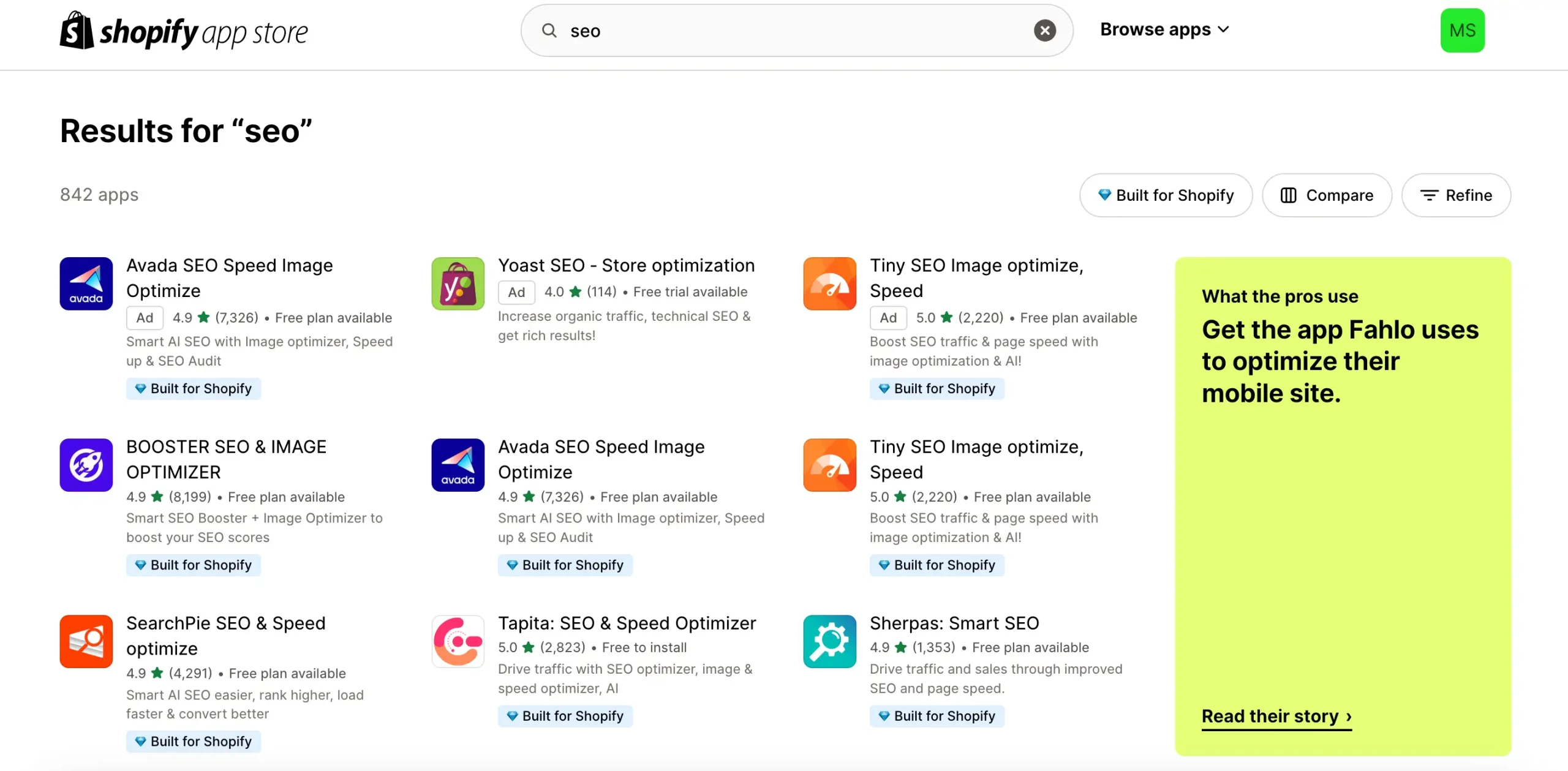
Shopify also integrates with various third-party SEO apps, such as SEO Manager, Plug In SEO, and Schema Plus for SEO, which help sellers improve their SEO strategies. These apps provide advanced features like SEO audits, keyword recommendations, and structured data markup, all of which can enhance a store’s visibility in search engine results.
Compared to eBay, Shopify offers more control over SEO, as sellers can fully optimize their store for search engines, customize content, and utilize third-party tools to refine their strategies. This level of control is a significant advantage for businesses focused on building long-term organic traffic.
eBay
eBay has its own built-in search engine. Other than that, eBay provides a limited number of Facebook, Twitter, and Pinterest social network integrations. The integration buttons, however, allow you to share your products right away. eBay runs its own game about SEO. Due to eBay’s popularity, there is a significant quantity of traffic. While standard SEO elements like keywords in headings, descriptions, image alt tags, and more are available. But that’s basically it. There aren’t many tools available on eBay to help you navigate the SEO rankings.
eBay’s Marketplace-Driven Marketing Tools
As a marketplace platform, eBay takes a different approach to marketing. While Shopify allows sellers to create standalone stores with their own branding and marketing strategies, eBay operates within a centralized marketplace where sellers compete for visibility based on product listings, pricing, and seller ratings. While eBay does provide some marketing tools for sellers, they are more limited compared to Shopify’s flexible, multi-channel marketing approach.
One of the main marketing tools available to eBay sellers is eBay’s Promoted Listings feature. This paid advertising service allows sellers to boost the visibility of their listings by displaying them at the top of search results within the eBay marketplace. Promoted Listings operate on a pay-per-sale model, meaning sellers only pay if the item sells as a result of the promoted listing. This tool can be effective for increasing visibility and driving more sales, particularly for competitive product categories.
eBay also provides tools for running sales and promotions, such as offering discounts, running limited-time offers, and bundling products. These promotions are displayed directly on the product pages, helping sellers stand out from competitors. However, eBay’s promotion capabilities are confined to the marketplace, and sellers have less control over how they manage these marketing efforts compared to Shopify, where they can create more comprehensive marketing campaigns across multiple platforms.
Another feature that impacts visibility on eBay is the seller’s rating and feedback score. eBay rewards top-performing sellers with higher visibility in search results, which means maintaining a strong feedback score and seller rating is crucial for success. Sellers with high ratings, fast shipping, and positive customer reviews are more likely to appear at the top of search results, which helps drive sales. However, this reliance on marketplace-driven factors means that eBay sellers have less control over their visibility compared to Shopify, where sellers can use external marketing strategies to drive traffic to their stores.
eBay’s SEO Capabilities
In terms of SEO, eBay’s approach is fundamentally different from Shopify’s because it is a marketplace. eBay handles much of the SEO for its sellers by optimizing the entire platform for search engines, meaning that individual sellers have less control over how their listings appear in Google search results. eBay listings are automatically indexed by search engines, and eBay’s SEO strategy is designed to ensure that popular listings rank well in search results.
While eBay’s SEO efforts help sellers by driving traffic to the platform as a whole, individual sellers have limited control over how their specific listings are optimized for search engines outside of eBay. Sellers can optimize their product titles and descriptions for eBay’s internal search engine, Cassini, but they cannot customize meta tags, URLs, or other SEO elements that affect how their listings rank on external search engines like Google.
However, sellers can improve their visibility within eBay’s internal search results by following eBay’s best practices for product listings. This includes using relevant keywords in product titles and descriptions, adding high-quality images, offering competitive prices, and maintaining a high seller rating. By optimizing listings for eBay’s internal search algorithm, sellers can improve their chances of ranking higher within the marketplace and attracting more buyers.
When comparing Shopify vs eBay in terms of SEO, Shopify provides significantly more control over how stores and products are optimized for search engines. eBay’s marketplace model centralizes SEO efforts, meaning sellers have less influence over external search visibility but benefit from eBay’s overarching SEO strategy. This is a key difference for sellers who prioritize building organic traffic through search engine optimization.
Payment Options and Transaction Fees
Payment options and transaction fees play a critical role in the success of an eCommerce business, as they directly impact profitability and customer experience. When comparing platforms like Shopify and eBay, it’s essential to understand how each handles payment processing and the associated fees. Shopify, as a fully customizable eCommerce platform, offers a range of payment options and flexibility for sellers looking to optimize their checkout experience. In this section, we will focus on Shopify’s payment options, transaction fees, and integration capabilities, outlining how these features impact sellers and buyers alike.
Shopify Payment Options
As a comprehensive eCommerce platform, Shopify provides multiple payment options to make it easy for merchants to receive payments from customers. It supports over 100 payment gateways, including well-known options like PayPal, Stripe, and Google Pay, as well as lesser-known options.
However, if merchants choose to use a third-party payment gateway instead, they are to pay transaction fees from their sales.
Overview of Shopify Payments and Third-Party Gateways
Shopify offers its own payment gateway, called Shopify Payments, which simplifies the payment process by eliminating the need for third-party providers. Shopify Payments is fully integrated into the platform, allowing sellers to accept payments directly without needing to configure external payment gateways. This built-in system supports various payment methods, including credit and debit cards, making it easy for customers to complete purchases seamlessly.
One of the primary advantages of Shopify Payments is the convenience it offers sellers. By using Shopify Payments, merchants can avoid the complexities of setting up and maintaining a separate payment provider. This is especially beneficial for new businesses or those with limited technical expertise, as it streamlines the checkout process and provides a unified dashboard for managing transactions, refunds, and chargebacks.
In addition to Shopify Payments, sellers who prefer or require alternative payment gateways have the flexibility to integrate with over 100 third-party payment providers. These include widely-used gateways like PayPal, Stripe, Authorize.net, and others, offering more options for businesses that may already have established relationships with certain payment processors or need specific features for their industry. However, using third-party gateways may incur additional fees, which can affect overall profitability.
When comparing Shopify vs eBay, one key distinction is that Shopify provides more flexibility in terms of payment methods. While eBay has recently moved to a managed payments system (which we will not cover in detail in this section), Shopify allows sellers to choose the payment processors that best suit their business needs. This flexibility makes Shopify an attractive choice for businesses looking to offer a variety of payment options to their customers.
Transaction Fees for Using External Payment Processors
Shopify’s transaction fee structure varies depending on whether a seller uses Shopify Payments or a third-party payment gateway. If a seller opts to use Shopify Payments, they can avoid the additional transaction fees typically associated with external payment processors. This can result in significant cost savings, particularly for businesses with high transaction volumes.
For sellers using Shopify Payments, there are no additional transaction fees beyond the standard credit card processing fees, which vary depending on the seller’s Shopify subscription plan. For example, on the Basic Shopify plan, credit card rates for online transactions are 2.9% + 30¢ per transaction in the U.S., while the Advanced Shopify plan offers a reduced rate of 2.4% + 30¢. These fees cover the cost of processing payments and are competitive with industry standards, making Shopify Payments a cost-effective option for most businesses.
However, for sellers who choose to use an external payment gateway instead of Shopify Payments, Shopify imposes an additional transaction fee. This fee varies depending on the seller’s plan, ranging from 0.5% to 2% of each transaction. This is an important consideration for businesses that prefer to use alternative payment providers, as the extra fees can add up quickly, especially for high-volume sellers. The trade-off between flexibility and cost needs to be carefully weighed when deciding whether to use Shopify Payments or an external gateway.
The transaction fee structure is another key difference when comparing Shopify vs eBay. While eBay has its own fee system that includes final value fees and payment processing charges, Shopify’s system allows sellers to reduce costs by using its integrated payment solution. Sellers who prioritize keeping transaction fees low may find Shopify Payments to be a more favorable option, particularly when compared to the fees associated with third-party gateways.
Integration with Various Payment Methods
Shopify stands out for its ability to integrate with a wide range of payment methods, ensuring that sellers can offer their customers maximum flexibility during the checkout process. Shopify Payments supports major credit and debit cards, including Visa, Mastercard, American Express, and Discover, providing a familiar and convenient payment experience for customers.
In addition to credit cards, Shopify offers seamless integration with PayPal, one of the most widely used payment methods in the world. PayPal is often preferred by customers for its security and ease of use, and it is particularly valuable for international transactions, as it supports multiple currencies. Shopify automatically creates a PayPal Express Checkout account for all merchants, making it easy for sellers to accept PayPal payments without additional setup.
For businesses that want to offer more innovative payment methods, Shopify also integrates with cryptocurrency payment processors like Coinbase Commerce and BitPay. This enables sellers to accept Bitcoin, Ethereum, and other digital currencies, which can be appealing to tech-savvy customers or those in regions where cryptocurrency is gaining popularity. While cryptocurrency payments are still a niche option, offering them can help differentiate a Shopify store from competitors and cater to a broader audience.
The ability to offer a variety of payment methods gives Shopify a clear advantage in terms of flexibility. Whether customers prefer to pay with traditional credit cards, PayPal, or even cryptocurrencies, Shopify ensures that merchants can accommodate their preferences. This flexibility not only enhances the customer experience but also increases the likelihood of conversions by reducing friction at checkout.
eBay Payment Options
In the past, PayPal handled all of eBay’s payments; however, this changed in June 2021. Since then, eBay has created its own payment systems, which allow payments to be made without first going via PayPal and directly into your bank account.
eBay’s Switch to Managed Payments
One of the most significant changes eBay has made in recent years is the transition to its managed payments system. For a long time, eBay sellers primarily relied on PayPal to handle transactions, and while PayPal was a convenient option, it also meant dealing with separate accounts and processing fees. In 2018, eBay started moving away from its exclusive reliance on PayPal and gradually introduced managed payments, a system designed to streamline the payment process for both sellers and buyers.
With managed payments, eBay has taken over the payment processing directly, handling all aspects of the transaction in-house. This change means that eBay now offers a variety of payment methods in a single integrated system, allowing buyers to pay with options like credit cards, debit cards, Apple Pay, Google Pay, and PayPal. Sellers no longer need to manage multiple payment gateways, as eBay automatically routes payments through its system and deposits funds directly into the seller’s bank account.
This shift to managed payments provides several benefits to sellers. First, it simplifies the overall payment process by centralizing it within eBay’s platform, making it easier to manage transactions without juggling different accounts or payment services. Second, it opens up new payment options for buyers, increasing the likelihood of a sale by offering them greater flexibility at checkout. This is a significant advantage when comparing Shopify vs eBay, as sellers on eBay can leverage this streamlined payment experience without needing to integrate third-party gateways.
However, the transition to managed payments hasn’t been without challenges. Some sellers initially expressed concerns about the loss of PayPal’s buyer protection and the new fee structure associated with managed payments. Nonetheless, eBay’s managed payments system has continued to evolve, with improved features and more payment options, making it a practical solution for both new and existing sellers.
eBay’s Payment Processing Fees and Structure
As with any eCommerce platform, eBay’s transaction fees are a critical consideration for sellers. Under the managed payments system, eBay has consolidated its payment processing fees into a more straightforward structure. Sellers are charged a final value fee, which is a percentage of the total amount of the sale, including shipping and handling. This fee varies depending on the category of the item being sold but typically ranges between 10% and 12.35%. For most categories, eBay does not charge a separate listing fee, meaning that sellers only pay when they successfully make a sale.
One of the advantages of eBay’s managed payments system is that it eliminates the need for sellers to pay additional fees to third-party payment processors, as was the case when PayPal was the primary option. Under the old system, sellers had to pay both eBay’s final value fees and PayPal’s transaction fees, which could significantly reduce profit margins. With managed payments, all fees are handled within eBay’s system, simplifying the fee structure and making it easier for sellers to calculate their costs.
In addition to the final value fee, there is a payment processing fee for each transaction, which typically ranges between 2.7% and 3% depending on the payment method and the seller’s location. This fee covers the cost of processing the payment, similar to how credit card processing fees work on other platforms. For international transactions, the processing fee may be slightly higher to account for currency conversion and cross-border processing.
When comparing Shopify vs eBay in terms of fees, it’s important to note that eBay’s consolidated fee structure under managed payments is designed to be competitive, particularly for sellers who prefer a simplified approach. However, Shopify’s fee structure, particularly for those using Shopify Payments, can be more advantageous for high-volume sellers due to reduced transaction fees at higher subscription tiers. Sellers need to consider these differences carefully when choosing a platform based on their expected sales volume and fee tolerance.
Payment Options for International Buyers and Sellers
One of eBay’s strengths lies in its global reach, and its managed payments system has made it easier for sellers to cater to international buyers. eBay supports multiple payment methods, including credit and debit cards, PayPal, Apple Pay, Google Pay, and wire transfers, depending on the region. This flexibility allows international buyers to choose the payment method that is most convenient for them, increasing the likelihood of cross-border sales.
For international sellers, eBay offers a straightforward process for receiving payments from buyers in different countries. Funds are automatically converted into the seller’s local currency when they are deposited into the seller’s bank account, eliminating the need for the seller to handle currency conversion manually. However, it’s important to note that eBay does charge a small fee for currency conversion, which is typically between 2.5% and 3% of the transaction amount. This fee is applied to any sale involving a cross-border transaction, similar to the fees charged by PayPal and other payment processors.
eBay’s global marketplace provides sellers with access to a broad audience of international buyers, which is a significant advantage when compared to Shopify vs eBay. Shopify sellers need to actively target international markets through marketing and SEO efforts, whereas eBay’s platform automatically presents listings to buyers worldwide, offering greater potential for exposure.
That being said, international sellers on eBay need to be aware of shipping regulations, customs duties, and taxes, which can complicate cross-border transactions. eBay provides tools to help sellers manage these aspects, such as offering estimated delivery times and calculating shipping costs for international buyers. These tools, combined with eBay’s wide range of supported payment methods, make it easier for sellers to reach global audiences, although they come with additional fees and logistical considerations.
Customer Support
Customer support is a critical component of any eCommerce platform, especially for sellers who may need assistance with technical issues, account management, or optimizing their store. Both Shopify and eBay offer customer support, but the extent, quality, and type of support can vary significantly. Shopify provides robust customer service designed to assist sellers in setting up and maintaining their online stores, while also offering resources to help them grow their businesses. In this section, we will focus specifically on Shopify’s customer support options, including its 24/7 availability, extensive knowledge base, and access to Shopify Experts for custom development.
Shopify’s Customer Support
Shopify’s customer support is comprehensive and designed to meet the diverse needs of its users, from new sellers to established businesses looking for advanced solutions. With 24/7 support available through chat, email, and phone, sellers can access help whenever they need it. Shopify’s extensive knowledge base, tutorials, and community forums provide additional self-service resources, empowering sellers to troubleshoot issues and learn best practices on their own.
Shopify’s 24/7 Support via Chat, Email, and Phone
One of the most notable aspects of Shopify’s customer support is its availability around the clock. Shopify offers 24/7 customer service through multiple channels, including live chat, email, and phone. This level of accessibility is crucial for eCommerce businesses that operate in different time zones or have urgent issues that need immediate attention. Regardless of when a problem arises, Shopify ensures that help is just a call or message away, which is a significant advantage for sellers who need prompt support to resolve issues that could affect their sales or website performance.
For many sellers, live chat is the preferred method of communication because it provides real-time assistance without the need for a phone call. Shopify’s live chat agents are knowledgeable and able to quickly address most concerns, from troubleshooting technical issues to providing guidance on how to use the platform’s features. If the issue is more complex, sellers can escalate their concerns via email or phone, where they can speak directly with a customer support representative. This multi-channel support ensures that sellers have the flexibility to choose the communication method that best suits their needs, whether they need a quick answer or more in-depth assistance.
In comparing platforms like Shopify vs eBay, one of the key advantages Shopify offers is the immediacy of its customer support. eBay also provides customer service, but its access to live support is not as extensive as Shopify’s 24/7 model. This difference can be critical for sellers who want peace of mind, knowing that help is available whenever it’s needed.
Extensive Knowledge Base, Tutorials, and Community Forums
In addition to its direct support channels, Shopify also offers a wealth of self-service resources through its extensive knowledge base, tutorials, and community forums. Shopify’s knowledge base covers a wide range of topics, from getting started with the platform to advanced technical solutions. These resources are well-organized and easy to navigate, allowing sellers to find answers to common questions or troubleshoot issues on their own.
The tutorials provided by Shopify are particularly helpful for new sellers or those unfamiliar with eCommerce platforms. These step-by-step guides walk users through various aspects of the platform, such as setting up an online store, managing inventory, and configuring payment gateways. The tutorials are designed to be accessible to users of all skill levels, ensuring that even those with little technical experience can quickly learn how to use Shopify effectively.
Beyond the knowledge base and tutorials, Shopify’s community forums offer an interactive space where sellers can ask questions, share experiences, and seek advice from other members of the Shopify community. The forums are moderated by Shopify staff and feature contributions from experienced sellers and developers who provide valuable insights and solutions. This collaborative environment fosters a sense of community among Shopify users, where they can learn from one another and find creative solutions to challenges they may face.
When comparing Shopify vs eBay, Shopify’s knowledge base and community resources stand out as being more comprehensive. eBay also offers help documentation and community forums, but Shopify’s resources are more tailored to empowering sellers to take full advantage of the platform’s features, making it easier for them to manage and grow their businesses independently.
Shopify Experts for Custom Development and Design Support
For sellers who require more specialized assistance, Shopify offers access to a network of Shopify Experts. These are certified professionals who can provide custom development, design, and marketing services to help sellers achieve specific business goals. Whether a seller needs help designing a custom storefront, optimizing their site for conversions, or integrating third-party apps, Shopify Experts offer tailored solutions that go beyond standard customer support.
Shopify Experts are particularly beneficial for businesses that have unique needs or lack the technical expertise to implement complex features. For example, if a seller wants to create a highly customized store design or develop a unique app for their business, they can hire a Shopify Expert to handle the project. These professionals bring a wealth of experience and deep knowledge of the Shopify platform, enabling sellers to enhance their store’s functionality and user experience without having to learn coding or web development.
The availability of Shopify Experts is a significant advantage when comparing Shopify vs eBay. While eBay offers support for sellers, it does not have a similar program that connects sellers with certified professionals for custom projects. This makes Shopify a more attractive option for businesses that want to go beyond the platform’s out-of-the-box features and create a truly unique online shopping experience.
eBay Customer Support
Depending on the plan you purchase, eBay offers a variety of support and help options. eBay Concierge is a feature of higher-lever subscription plans that give users access to more support choices than the standard offering. Live chat and email are the main methods of support for the fundamental one.
eBay’s Customer Service for Sellers
eBay provides multiple avenues for customer support to assist its sellers, including live chat, phone support, and a robust community forum. These channels aim to help sellers resolve issues related to listings, payments, shipping, and disputes with buyers. However, access to these support options can vary based on the type of seller account, the issue at hand, and the seller’s status within eBay’s ecosystem.
For most eBay sellers, live chat is the first line of support. This feature allows sellers to interact with an eBay customer service representative in real time, making it easier to get quick answers to questions about platform functionality, fees, or policy updates. The chat support team is knowledgeable about common seller issues and can provide guidance on resolving minor disputes, setting up listings, or managing payment issues.
In addition to chat support, eBay offers phone support for more complex issues. Sellers can request a callback or directly contact eBay’s customer service hotline to speak with a representative. Phone support is often preferred for resolving high-priority problems, such as account suspensions or disputes that require mediation between buyers and sellers. However, the availability of phone support may depend on the seller’s location and account status.
One of the standout features of eBay’s support system is its community forum, where sellers can ask questions, share insights, and offer advice to one another. This forum is an active space where both new and experienced sellers participate, making it a valuable resource for finding solutions to common challenges. The forum is moderated by eBay staff, and often, experienced sellers provide detailed guidance that can help others navigate the platform more effectively.
In comparing Shopify vs eBay in terms of support, it’s important to note that while both platforms offer live chat and community forums, eBay’s support is more segmented based on seller status, and access to immediate help may not be as consistent across all account types. Shopify, on the other hand, provides 24/7 support universally across its user base, which may be a more reliable option for sellers who require constant access to assistance.
Seller Hub and Available Resources for Managing Issues
eBay’s Seller Hub serves as the central dashboard for sellers to manage their accounts, track sales, and resolve issues. It is an essential tool for both new and seasoned eBay sellers, offering a wide range of features to streamline daily operations and provide insight into business performance. Seller Hub consolidates all critical functions—such as inventory management, order fulfillment, and analytics—into one platform, giving sellers greater control and visibility over their eBay store.
One of the key benefits of Seller Hub is its integration with eBay’s support resources. From within the Seller Hub, sellers can access help articles, contact customer service, and monitor their account’s health and performance. For instance, sellers can track their service metrics, including shipping times and customer feedback, which are crucial to maintaining a good standing on the platform. If a seller’s account is flagged for issues, such as negative feedback or delayed shipping, the Seller Hub provides actionable insights to help rectify these problems before they escalate.
eBay also offers a wide array of tutorials and how-to guides within Seller Hub, which are designed to help sellers navigate specific tasks, such as optimizing listings or improving SEO for better visibility in eBay’s search results. These resources can be particularly useful for new sellers who are still learning how to leverage the platform’s features effectively. For experienced sellers, Seller Hub’s reporting tools offer detailed analytics that can aid in decision-making and performance optimization.
Compared to Shopify, which has its own robust dashboard for store management, eBay’s Seller Hub is similarly comprehensive but tailored specifically to the marketplace model. While Shopify focuses on providing sellers with tools to customize their store and manage external marketing efforts, eBay’s Seller Hub is more centered around internal platform metrics and optimization within the marketplace itself.
Differences in Support Quality for Individual vs. Business Accounts
One of the more nuanced aspects of eBay’s customer support system is the variation in support quality depending on the type of seller account. eBay categorizes sellers into different tiers, ranging from individual sellers (often those selling occasionally or casually) to business sellers (who operate at a larger scale). The level of customer support provided can differ significantly between these groups.
For individual sellers, eBay’s support is generally more basic, with priority given to self-service tools like help articles and the community forum. While individual sellers still have access to live chat and phone support, their issues may not be prioritized as quickly as those of business sellers. Individual sellers are also less likely to receive personalized support or account management services, which can be a disadvantage for those who run into complex issues that require fast resolution.
On the other hand, business accounts on eBay, especially those with high sales volumes or those categorized as Top Rated Sellers, often receive more personalized attention. Business sellers may have access to dedicated account managers or faster response times when contacting customer service. This higher level of support is designed to help business sellers navigate the platform’s complexities, resolve issues more efficiently, and maintain a high level of customer service for their buyers.
Business sellers on eBay also have access to additional tools and resources that are not available to individual sellers, such as bulk listing options, advanced reporting features in Seller Hub, and enhanced shipping discounts. These perks make the selling experience more efficient and allow business sellers to scale their operations with greater ease. In contrast, individual sellers may find themselves more reliant on the standard customer support channels and less equipped to handle large-scale selling without these advanced tools.
In comparing Shopify vs eBay, Shopify tends to offer a more consistent level of customer support across all account types, with no major differences in service quality between smaller and larger sellers. On eBay, while all sellers have access to the same fundamental support channels, business sellers tend to receive a higher level of service and support resources, making eBay a more attractive platform for larger, high-volume sellers.
Security and Fraud Protection
In the world of eCommerce, security and fraud protection are paramount. Sellers need to trust that their platforms provide the necessary safeguards to protect sensitive customer data and prevent fraudulent transactions. For both sellers and buyers, a secure environment not only protects financial information but also builds trust, which is crucial for long-term success. In comparing Shopify vs eBay, both platforms take different approaches to ensuring security. In this section, we will focus exclusively on Shopify’s security features, explaining how the platform is built to safeguard online stores from threats and ensure the integrity of transactions.
Shopify’s Security Features
Shopify excels in providing a secure environment for eCommerce businesses, thanks to its built-in SSL certificates, PCI compliance, and advanced anti-fraud tools. The platform’s secure checkout process and commitment to data protection further enhance its reputation as a trustworthy choice for sellers who prioritize security. Whether you’re a new seller looking to establish a secure online store or an established business aiming to prevent fraud, Shopify’s comprehensive security features offer peace of mind.
Shopify’s Built-in SSL Certificates and PCI Compliance
One of Shopify’s standout features is its focus on providing industry-standard security measures, starting with built-in SSL certificates for all online stores hosted on its platform. SSL (Secure Socket Layer) encryption is essential for protecting data that is transmitted between a website and its visitors. This encryption ensures that sensitive information, such as credit card numbers and personal details, is protected from interception by malicious actors. Shopify automatically provides SSL certificates to all stores, enabling secure, encrypted connections for every page of the website, including checkout and login pages.
SSL certificates are vital not only for security but also for building trust with customers. When shoppers see the padlock icon in their browser’s address bar, it signals that the website is secure, which can reduce cart abandonment and encourage users to complete their purchases. Additionally, search engines like Google prioritize websites with SSL certificates in their rankings, which can improve SEO performance and drive more traffic to the store.
Beyond SSL certificates, Shopify is also fully PCI compliant, meaning it adheres to the Payment Card Industry Data Security Standard (PCI DSS). This set of guidelines is designed to ensure that any platform processing, storing, or transmitting credit card information does so securely. By being PCI compliant, Shopify ensures that sellers do not need to worry about managing the technical complexities of securing payment data themselves. This compliance covers everything from encryption standards to maintaining secure server environments, providing peace of mind for sellers who may not have the expertise to manage payment security on their own.
The inclusion of built-in SSL and PCI compliance gives Shopify an edge in the Shopify vs eBay comparison when it comes to security. While eBay also provides robust security features, Shopify’s automatic provisioning of SSL certificates for every store and its PCI compliance make it a particularly secure option for businesses looking to build their own eCommerce website from the ground up.
Anti-Fraud Tools and Monitoring for Secure Transactions
Shopify takes fraud protection seriously, offering a suite of anti-fraud tools that help sellers detect and prevent fraudulent transactions. One of the key features is Shopify’s fraud analysis tool, which is automatically integrated into every store. This tool monitors all transactions and flags those that are considered high-risk, based on a variety of factors. For instance, it can identify suspicious activities such as mismatched billing and shipping addresses, unusually large orders, or multiple failed payment attempts. These alerts allow sellers to investigate further before completing the transaction, helping to mitigate the risk of fraud.
Shopify’s fraud analysis tool provides detailed reports on each flagged transaction, including risk indicators that help sellers assess whether an order is potentially fraudulent. While Shopify does not outright block high-risk orders (allowing the seller to make the final decision), the tool’s insights are invaluable for making informed choices. Sellers can choose to fulfill or cancel high-risk orders based on the analysis, reducing the chances of chargebacks or financial losses due to fraud.
In addition to its fraud analysis tool, Shopify offers integrations with third-party anti-fraud apps and services, such as Signifyd and FraudLabs Pro, which provide additional layers of protection. These apps can offer more advanced features like automatic order blocking, insurance against chargebacks, and real-time fraud scoring. By giving sellers access to both built-in tools and external services, Shopify ensures that businesses of all sizes can tailor their fraud prevention strategies to their specific needs.
Shopify also continuously monitors the platform for unusual activity, employing sophisticated algorithms to detect potential threats. The platform’s security team is proactive in identifying vulnerabilities and works to ensure that sellers’ data and transactions remain secure. Shopify’s focus on fraud protection makes it a strong contender in the Shopify vs eBay debate, particularly for sellers who are concerned about transaction security.
Shopify’s Secure Checkout Process and Data Protection Policies
The checkout process is one of the most critical stages of an online transaction, and Shopify has designed its system to ensure that it remains as secure as possible. Shopify’s checkout is built with security in mind, utilizing encryption and tokenization to protect sensitive information such as credit card details. The platform supports 3D Secure, an additional layer of authentication for card transactions, which helps prevent unauthorized use of credit cards. This feature requires customers to authenticate their identity with their card issuer during checkout, adding an extra step of protection.
Shopify’s secure checkout is also optimized for mobile devices, ensuring that customers can complete transactions securely on any device. With mobile commerce on the rise, this added layer of security is crucial for both sellers and buyers.
Additionally, Shopify’s data protection policies are designed to comply with international regulations such as the General Data Protection Regulation (GDPR). This means that Shopify ensures customer data is handled in compliance with the highest privacy standards. Sellers are provided with tools to manage customer data securely, including the ability to anonymize or delete personal data upon request. Shopify’s commitment to data privacy not only protects customers but also helps sellers avoid potential legal issues related to data breaches or non-compliance with privacy laws.
Shopify also regularly updates its platform to address emerging security threats and ensure that its infrastructure remains resilient against attacks. The platform’s cloud-based architecture allows for immediate updates and patches, which are rolled out seamlessly without any action required from the seller. This proactive approach to security ensures that Shopify stores are always protected against the latest vulnerabilities, minimizing the risk of breaches.
In summary, Shopify’s secure checkout process and robust data protection policies make it an ideal choice for sellers who prioritize security in their eCommerce operations. Compared to other platforms in the Shopify vs eBay debate, Shopify’s emphasis on protecting both transactions and customer data is a significant advantage, especially for businesses that handle sensitive information or operate in regions with strict privacy laws.
eBay’s Security and Fraud Protection
eBay’s security and fraud protection systems are designed to provide peace of mind for both buyers and sellers. With comprehensive buyer and seller protection programs, a structured dispute resolution process, and enhanced security measures within its managed payments system, eBay ensures that its marketplace operates safely and fairly.
eBay’s Buyer and Seller Protection Programs
One of the core elements of eBay’s security strategy is its comprehensive buyer and seller protection programs. These programs are designed to build trust within the marketplace by ensuring that both parties are protected in case something goes wrong during a transaction. eBay’s Buyer Protection Program provides customers with reassurance that if an item they purchase does not arrive or does not match the description provided by the seller, they can receive a full refund. This coverage is available for almost all purchases on eBay, provided that the transaction takes place directly through eBay and follows platform guidelines.
For sellers, eBay offers a Seller Protection Program, which helps protect them from fraudulent buyers and unfair disputes. Under this program, sellers are covered if they meet certain criteria, such as providing proof of shipping and adhering to eBay’s policies. For example, if a buyer falsely claims that they did not receive an item, eBay will investigate the claim. If the seller can provide proof of delivery, they are usually protected from having to issue a refund. This system reduces the risk of losing money due to fraudulent claims and helps maintain a balanced ecosystem where both buyers and sellers feel secure.
eBay’s protection programs are a critical component of the platform’s security infrastructure, ensuring that both sides of the transaction are treated fairly. However, the success of these programs relies on clear communication, timely resolution, and adherence to policies. In comparing Shopify vs eBay, it is important to note that eBay’s buyer and seller protections are specific to its marketplace model. Shopify, on the other hand, gives sellers more autonomy to set their own terms for returns and disputes, but does not offer the same centralized protection system that eBay provides.
Handling Disputes and Fraudulent Transactions
Handling disputes and fraudulent transactions is another key area where eBay’s security measures shine. Given the large volume of transactions that take place on eBay daily, the platform has developed a structured process for managing disputes and addressing fraudulent activity. When a buyer believes that something is wrong with their purchase—whether it is an item not received, a damaged product, or a misrepresentation of the listing—they can open a case through eBay’s Resolution Center. This centralized system helps streamline the process of filing disputes, and eBay acts as a mediator between the buyer and seller.
Sellers are notified when a dispute is opened, and they are given an opportunity to respond and resolve the issue. Depending on the nature of the dispute, the seller may need to offer a refund, send a replacement item, or provide additional information to eBay to help resolve the case. If the seller and buyer cannot reach an agreement, eBay steps in to make a final decision based on the evidence provided by both parties.
In cases of suspected fraud—such as buyers claiming non-receipt of items despite confirmed delivery, or sellers shipping items that do not match the listing—eBay employs a range of tools to investigate and prevent fraud. eBay’s risk analysis systems monitor transactions for suspicious behavior, and both buyers and sellers are encouraged to report any activity they believe to be fraudulent. In cases where fraud is confirmed, eBay works to resolve the situation by issuing refunds to the affected parties and taking appropriate action against the offending accounts, such as suspending or banning them from the platform.
While eBay’s system for handling disputes and fraud is effective in most cases, there are occasional concerns from both buyers and sellers about the fairness and speed of the process. Sellers, in particular, may feel that eBay sides more often with buyers, especially when it comes to item not received claims. Nevertheless, eBay’s structured approach provides a level of transparency and process that is crucial in maintaining trust within its marketplace.
When comparing Shopify vs eBay in this regard, Shopify does not offer the same type of centralized dispute resolution system. On Shopify, sellers have more control over handling customer complaints and resolving disputes, often relying on their own customer service protocols and payment provider’s chargeback systems. For some sellers, this flexibility is preferred, while others may find eBay’s centralized dispute resolution more reassuring.
Security Measures in eBay’s Managed Payments System
With the introduction of eBay’s managed payments system, the platform has taken additional steps to enhance transaction security and protect both buyers and sellers. eBay’s managed payments system was introduced as part of a transition away from relying on third-party payment processors like PayPal. This move allows eBay to handle all payment processing in-house, offering a more streamlined and secure experience for its users.
The managed payments system incorporates several layers of security, starting with secure payment processing and compliance with industry standards such as PCI DSS (Payment Card Industry Data Security Standard). This ensures that all transactions are encrypted and protected from potential breaches or unauthorized access. eBay also supports multiple payment methods, including credit cards, debit cards, Apple Pay, Google Pay, and PayPal, providing buyers with flexibility while ensuring that every transaction is processed securely.
Additionally, eBay’s managed payments system includes built-in fraud detection and prevention measures. These measures include monitoring transactions for unusual patterns, such as large, unexpected purchases or rapid changes in buyer behavior. When potentially fraudulent activity is detected, eBay can intervene to prevent the transaction from proceeding or to alert the seller to the risk. By keeping payment processing within its own system, eBay is better able to monitor and protect its users from fraud in real time, compared to when payments were managed externally through services like PayPal.
One of the key advantages of eBay’s managed payments system is the consolidation of fees and processes for sellers. Rather than dealing with separate platforms for managing sales and payments, sellers now have a unified system where they can track all transactions, fees, and refunds directly through eBay’s interface. This makes it easier for sellers to manage their cash flow and stay on top of payment-related issues. From a security perspective, having all payments managed through eBay’s platform also reduces the potential for data breaches or unauthorized access, as fewer third-party services are involved in the process.
In conclusion, eBay’s managed payments system has enhanced the security and fraud protection measures available to sellers. By centralizing payments and integrating secure transaction monitoring, eBay has reduced the risk of fraud and streamlined the overall selling experience. When comparing Shopify vs eBay, it is clear that while Shopify offers flexibility with payment gateways, eBay’s managed payments system provides a more cohesive and controlled approach to transaction security, especially within the marketplace model.
Scalability for Business Growth
Scalability is a crucial consideration for any business, especially those operating in the fast-paced world of eCommerce. As businesses grow, their needs evolve, and the platform they choose must be capable of expanding with them. In comparing Shopify vs eBay, Shopify stands out as a platform designed to accommodate businesses at every stage of growth, from small startups to large enterprises. This section will focus specifically on how Shopify supports scalability, discussing its options for growing businesses, the advanced features of Shopify Plus, and the flexibility to expand product lines, add staff accounts, and integrate with enterprise systems like ERP and CRM.
Shopify’s Scalability
Shopify’s scalability makes it an ideal platform for businesses of all sizes. From small startups to high-growth enterprises, Shopify provides the tools and flexibility needed to support expansion, whether through product line growth, staff management, or integration with enterprise systems. When comparing Shopify vs eBay, Shopify’s ability to scale with the business offers a clear advantage, particularly for sellers who are looking to build a long-term, scalable eCommerce operation.
Shopify’s Options for Scaling a Business from Small to Enterprise Level
One of Shopify’s key strengths is its ability to support businesses of all sizes. Whether you’re just starting out with a small product line or operating a large-scale enterprise, Shopify provides a flexible framework that can grow with your business. The platform offers a range of pricing plans, each designed to meet the needs of businesses at different stages of growth. This tiered structure allows sellers to start small and upgrade as their business demands increase, making Shopify an ideal solution for long-term growth.
For new businesses or small startups, Shopify’s Basic plan provides essential tools to get a store up and running, including product listings, secure checkout, and a variety of themes to customize the store’s appearance. As businesses grow and require more advanced features, they can move up to Shopify’s higher-tier plans, such as the Shopify or Advanced plans. These plans offer additional features such as advanced reporting, more in-depth analytics, and lower credit card transaction fees, which become important as the volume of sales increases.
Shopify’s scalability doesn’t stop with its pricing tiers. As businesses grow, they often need more than just the basic features offered by the platform. Shopify allows users to expand their store’s functionality by integrating third-party apps, customizing the store’s design through Liquid (Shopify’s templating language), and adding automation tools to streamline operations. This flexibility ensures that businesses can adapt their store to meet changing needs without outgrowing the platform. Shopify’s app marketplace is a particularly valuable resource, offering thousands of apps that can enhance everything from marketing and SEO to inventory management and customer support.
In comparing Shopify vs eBay, Shopify’s ability to scale a business from small to enterprise level is one of its most significant advantages. While eBay is a marketplace that provides access to a large customer base, its functionality is limited in terms of customization and scalability. Shopify, by contrast, gives sellers full control over their store’s growth trajectory, with a wide range of tools and resources to support expansion.
Features of Shopify Plus for High-Growth Businesses
For businesses experiencing rapid growth or operating at an enterprise level, Shopify offers Shopify Plus, an enterprise-level solution designed to handle large-scale operations. Shopify Plus provides a host of advanced features and capabilities tailored to businesses with high transaction volumes, complex operational needs, and ambitious growth goals.
One of the key benefits of Shopify Plus is its ability to handle massive sales volumes without compromising performance. The platform is built to support businesses with thousands of transactions per minute, making it a reliable choice for brands that experience heavy traffic, particularly during peak sales periods like Black Friday or holiday seasons. Shopify Plus also offers unlimited bandwidth, ensuring that even the largest businesses can operate smoothly without worrying about server capacity.
In addition to handling increased traffic and sales, Shopify Plus offers advanced automation tools that help businesses streamline their operations. Shopify Flow, for example, allows businesses to automate routine tasks such as inventory management, customer notifications, and order processing. These automations free up time for business owners and staff to focus on growth strategies rather than manual tasks. Additionally, Shopify Plus offers access to Launchpad, a tool designed to automate product launches, flash sales, and promotional events—perfect for businesses that rely on strategic marketing campaigns to drive revenue.
Another standout feature of Shopify Plus is its dedicated support. Shopify Plus merchants have access to a team of experts, including account managers and technical support specialists, who help with everything from store setup to ongoing optimization. This level of support ensures that high-growth businesses have the resources they need to scale efficiently and effectively.
Customization is another area where Shopify Plus excels. While Shopify’s lower-tier plans offer basic customization options, Shopify Plus provides even more flexibility, allowing businesses to create fully customized checkout experiences, integrate advanced APIs, and build unique workflows tailored to their specific needs. Whether a business needs to support multiple currencies, offer tiered pricing for wholesale customers, or manage complex shipping rules, Shopify Plus provides the tools necessary to scale without limitations.
Compared to platforms like eBay, Shopify Plus offers far more control and flexibility for high-growth businesses. While eBay allows sellers to reach a broad audience through its marketplace, it does not provide the same level of scalability or customization options that Shopify Plus offers. For businesses looking to take their operations to the next level, Shopify Plus is a comprehensive solution that supports growth without compromise.
Flexibility to Expand Product Lines, Add Staff Accounts, and Integrate with ERP/CRM Systems
As businesses grow, they often need to expand their product offerings, hire additional staff, and integrate with enterprise-level systems like ERP (Enterprise Resource Planning) and CRM (Customer Relationship Management) solutions. Shopify’s platform is designed to support these needs, offering the flexibility to scale operations without the need to switch platforms.
One of the most significant ways Shopify supports scalability is through its ability to manage unlimited products. Whether a business starts with a few products or expands to thousands, Shopify can handle large inventories without performance issues. Sellers can easily add new product lines, create custom categories, and optimize product pages for SEO, making it easy to expand offerings as the business grows. Shopify’s bulk product management tools also simplify the process of updating inventory, pricing, and product descriptions, reducing the time and effort required to manage large catalogs.
In addition to product scalability, Shopify allows businesses to add multiple staff accounts, each with varying levels of access and permissions. This feature is particularly important for growing teams, as it enables store owners to delegate tasks while maintaining control over sensitive data. Store owners can assign roles such as admin, sales associate, or marketing manager, ensuring that staff members have access only to the areas of the store relevant to their roles. This functionality is available on all Shopify plans, but businesses on Shopify Plus benefit from even greater flexibility, with support for more staff accounts and advanced permission settings.
Another key feature of Shopify’s scalability is its ability to integrate with ERP and CRM systems. As businesses expand, managing data across multiple platforms becomes more complex, and integration with ERP and CRM systems can streamline operations. Shopify offers built-in integrations with popular ERP solutions like NetSuite and Microsoft Dynamics, as well as CRM platforms like Salesforce. These integrations enable businesses to sync data between their online store and backend systems, ensuring that inventory, customer information, and sales data are always up to date.
For businesses that require custom integrations, Shopify provides access to its API, allowing developers to build custom solutions that meet specific business needs. This level of flexibility is essential for businesses with complex operations, as it enables them to create seamless workflows and automate processes across different platforms.
eBay Scalability
While eBay offers opportunities for sellers to grow their businesses within a large marketplace, the platform’s limitations in branding, fee structure, and competition make it challenging to scale profitably. Sellers must navigate a competitive landscape where price often drives sales, and eBay’s fees can quickly erode margins as sales volume increases.
Limitations for Growing a Brand on eBay’s Platform
One of the primary challenges sellers face when attempting to scale their business on eBay is the platform’s inherent limitations when it comes to building and growing a brand. eBay operates as a marketplace, where sellers compete alongside thousands of others selling similar products. While this marketplace model provides immediate access to a vast audience, it also restricts sellers’ ability to establish a distinct brand identity. On eBay, the focus is often on individual product listings rather than on building a cohesive, branded store experience.
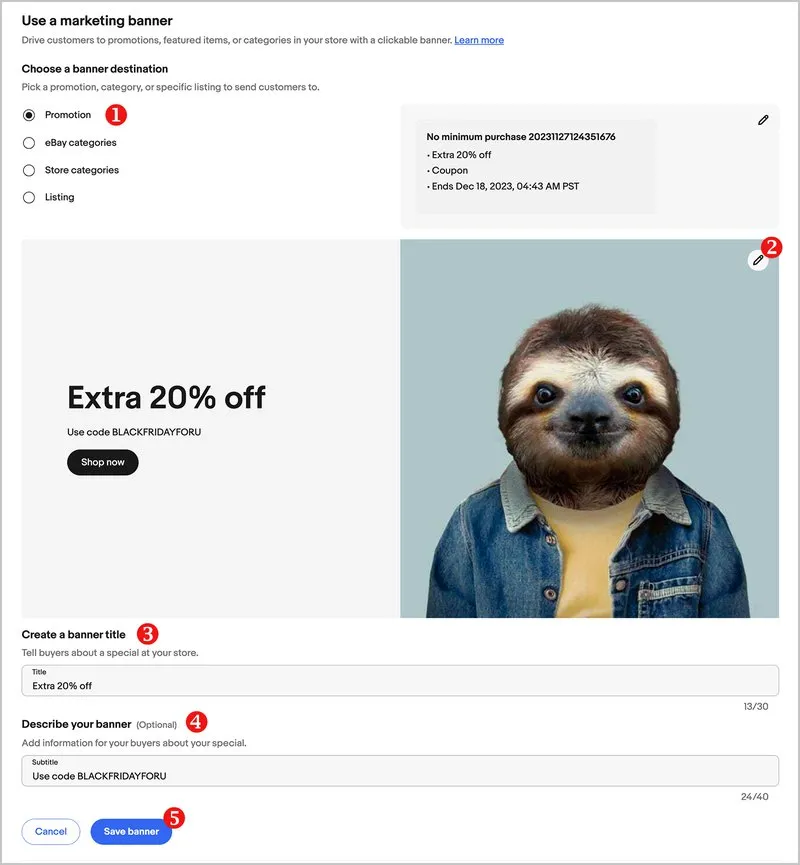
Unlike Shopify, which allows sellers to fully customize their storefront and create a unique brand image, eBay offers limited opportunities for personalization. Sellers on eBay can create eBay Stores, where they can organize their listings and add a logo or banner image, but these stores are still largely constrained by eBay’s overall marketplace design and interface. The lack of design flexibility and control over the customer experience makes it difficult for sellers to differentiate themselves and build a recognizable brand that can stand out in the crowded marketplace.
For businesses looking to grow and expand their brand presence, this limitation can be a significant barrier. As a result, many sellers find it challenging to create a loyal customer base on eBay, as buyers often focus on price and convenience rather than brand loyalty. In contrast, platforms like Shopify offer the tools needed to build a custom storefront, implement personalized marketing strategies, and create a memorable brand experience that fosters long-term relationships with customers.
The Challenge of Scaling with eBay’s Fee Structure and Competition
Another significant challenge to scaling a business on eBay is its fee structure. eBay’s fees can become a major hurdle for sellers as they attempt to grow their operations. The platform charges a combination of listing fees, final value fees, and optional fees for promoted listings, which can quickly add up as sales volume increases.
For each item sold, eBay charges a final value fee that typically ranges between 10% and 12.35%, depending on the product category. This fee is calculated as a percentage of the total amount of the sale, including shipping costs. For small-scale sellers, these fees may be manageable, but as sales volume increases and sellers attempt to scale, these fees can eat into profit margins. Additionally, eBay charges fees for promoting listings to boost visibility in search results. While promoting listings can increase sales, it also adds another layer of cost, making it challenging to scale profitably without careful management of expenses.
The competitive nature of eBay’s marketplace further complicates the scaling process. Sellers are constantly competing against others who may offer similar products at lower prices, making it difficult to maintain a competitive edge while also absorbing eBay’s fees. The pressure to lower prices to stay competitive can significantly impact profit margins, especially for sellers with slim margins to begin with. This race to the bottom on price can be particularly problematic for businesses trying to scale, as they may be forced to sacrifice profitability in order to increase sales volume.
When comparing Shopify vs eBay, Shopify’s fee structure is generally more favorable for scaling businesses. Shopify charges a monthly subscription fee based on the chosen plan, and while transaction fees apply for sellers not using Shopify Payments, these fees are often lower than eBay’s final value fees. Furthermore, Shopify allows sellers to retain full control over their pricing and marketing strategies, reducing the pressure to lower prices in order to compete within a marketplace environment.
Comparison of How eBay Sellers Scale vs. Other Platforms
The path to scaling a business on eBay differs significantly from other platforms, such as Shopify or Amazon. On eBay, scaling is often tied to increasing the number of listings and optimizing visibility within the marketplace. Sellers who wish to grow their business on eBay typically need to expand their product offerings, use promoted listings to increase visibility, and manage their seller rating to ensure they maintain a positive reputation within the platform.
While these strategies can help drive growth, they come with inherent challenges. Expanding product offerings on eBay means managing a larger inventory, which can increase the complexity of operations, especially for sellers handling fulfillment themselves. Additionally, while promoted listings can boost visibility, they also add to the overall cost structure, making it harder to scale profitably. Sellers must carefully balance the need for increased visibility with the costs associated with promotion and the pressure to offer competitive pricing.
In contrast, platforms like Shopify offer more flexibility for scaling. Shopify’s customizable storefronts, integrated marketing tools, and ability to add third-party apps provide sellers with a wide range of options for growing their business. Sellers can expand their product lines, optimize their store’s design, and implement marketing strategies such as email campaigns and SEO to drive traffic. Furthermore, Shopify allows for seamless integration with other platforms like Amazon, social media marketplaces, and POS systems, giving sellers more channels to reach customers and scale their business across multiple sales channels.
On Amazon, sellers benefit from the platform’s massive customer base and the option to use Amazon’s Fulfillment by Amazon (FBA) service, which handles storage, shipping, and customer service on behalf of the seller. This allows businesses to scale quickly without having to worry about logistics. However, similar to eBay, Amazon’s fee structure can be burdensome for sellers, with referral fees, fulfillment fees, and long-term storage fees impacting profitability. Additionally, Amazon’s marketplace is highly competitive, and sellers must constantly monitor pricing and inventory levels to stay competitive.
Overall, scaling a business on eBay presents unique challenges that differ from platforms like Shopify or Amazon. While eBay provides sellers with access to a large customer base, its fee structure, competition, and limited branding opportunities make it difficult to scale profitably. By comparison, Shopify offers more control and flexibility, allowing sellers to scale their operations by building a unique brand, expanding product lines, and utilizing a wide range of tools and integrations to optimize growth.
Global Reach and Localization
In today’s global economy, the ability to reach international customers is a critical factor for the success of eCommerce businesses. Sellers looking to expand beyond their local market need platforms that offer robust global reach and localization features. Shopify and eBay approach international selling differently, with Shopify providing extensive tools to help sellers localize their stores and cater to customers in different regions. In this section, we will focus exclusively on Shopify’s global capabilities, including its support for international stores, multi-language functionality, and integration with international shipping providers. These features allow sellers to tap into global markets more easily and effectively compared to other platforms.
Shopify’s Global Capabilities
Shopify’s global capabilities make it an ideal platform for businesses looking to expand their reach and operate internationally. With support for multiple currencies, multi-language functionality, and region-specific domains, Shopify gives sellers the tools they need to provide a localized shopping experience for customers around the world. Additionally, Shopify’s integration with international shipping providers ensures that businesses can manage global logistics efficiently, making it easier to scale operations as they enter new markets.
Shopify’s Ability to Support International Stores and Currencies
One of Shopify’s most notable strengths is its ability to support businesses that want to sell internationally. As eCommerce becomes increasingly globalized, businesses need to cater to customers in multiple countries, and Shopify makes this possible through its flexible platform. Shopify enables sellers to create multiple international storefronts or a single storefront that supports multiple currencies. This means that customers around the world can shop in their local currency, making the purchasing experience smoother and more familiar.
Shopify allows sellers to set up international pricing for different currencies, either through automatic currency conversion or by manually setting specific prices for each region. This feature is particularly important for businesses that want to maintain competitive pricing across different markets or take into account variations in taxes, duties, or shipping costs. With Shopify Payments, businesses can accept payments in a wide range of currencies, including USD, EUR, GBP, AUD, and more, depending on the location of the customer.
Additionally, Shopify provides insights into international markets through its analytics and reporting tools. Sellers can monitor the performance of their international stores, track customer behavior, and adjust their marketing strategies accordingly. Whether a business is focused on a few key regions or aiming for global reach, Shopify’s tools make it easier to manage international operations effectively.
When comparing Shopify vs eBay, Shopify offers more flexibility in terms of supporting international business expansion. While eBay operates as a global marketplace, it doesn’t offer the same level of customization or control for businesses that want to tailor their offerings to specific regions. Shopify’s ability to create region-specific experiences makes it a more versatile platform for sellers looking to scale globally.
Multi-language Capabilities and Region-Specific Domains
For businesses aiming to reach non-English speaking markets, the ability to offer content in multiple languages is essential. Shopify excels in this area, offering built-in multi-language support that allows sellers to translate their store’s content and product descriptions into different languages. This feature is invaluable for businesses that want to provide a localized experience for their international customers, improving accessibility and increasing the likelihood of conversions.
With Shopify’s multi-language capabilities, sellers can either use third-party translation apps or manually translate their content to ensure accuracy and cultural relevance. Shopify’s themes are designed to support multi-language functionality, meaning that different versions of the store can be displayed to customers based on their location or language preference. This helps businesses break down language barriers and create a more personalized shopping experience for customers worldwide.
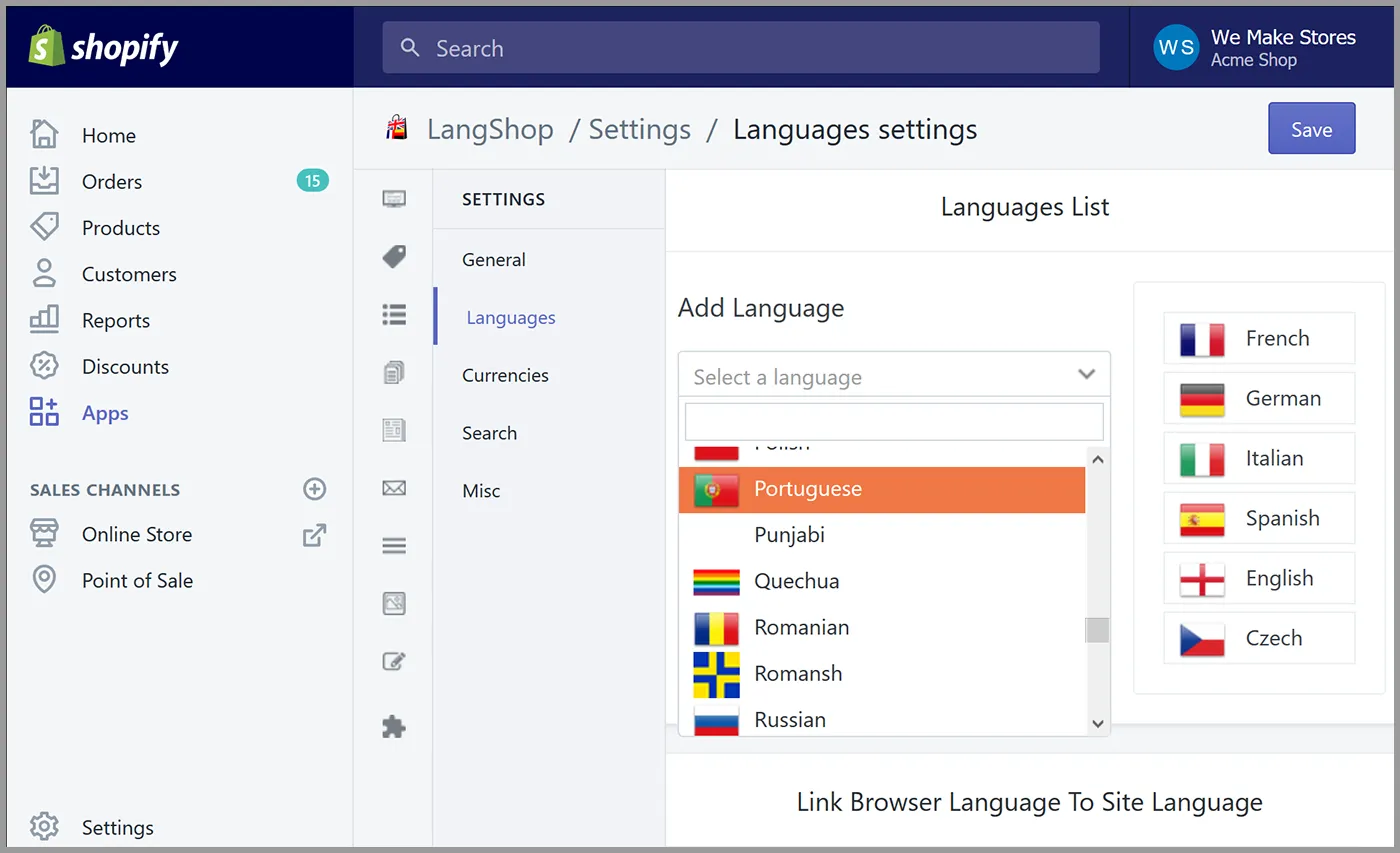
In addition to language localization, Shopify offers region-specific domains, which allow sellers to set up country-specific versions of their store. This is particularly beneficial for businesses that want to target specific markets with tailored content, pricing, and promotions. For example, a seller can create separate stores for the U.K., Germany, and Japan, each with its own domain (e.g., .co.uk, .de, .jp) and content customized for that market. Region-specific domains also improve SEO performance in local search engines, making it easier for customers in those regions to find the store.
This level of customization gives Shopify an advantage in the Shopify vs eBay comparison. While eBay operates as a global marketplace, sellers have limited control over the localization of their listings beyond setting international shipping options. Shopify’s multi-language capabilities and region-specific domains allow businesses to offer a more tailored and localized experience, making it a better fit for sellers with a strong focus on international growth.
Integration with International Shipping Providers
One of the most challenging aspects of international eCommerce is managing shipping logistics. Different countries have varying regulations, shipping costs, and delivery timelines, which can make it difficult to ensure a smooth customer experience. Shopify addresses this challenge by offering integrations with a wide range of international shipping providers, making it easier for businesses to offer efficient and cost-effective shipping to customers around the world.
Shopify partners with global shipping carriers like DHL, UPS, FedEx, and USPS, providing sellers with the ability to offer multiple shipping options to their customers. Shopify also offers discounted shipping rates through its Shopify Shipping service, which can significantly reduce shipping costs for businesses, particularly those with high sales volumes. This not only makes it easier for sellers to ship internationally but also allows them to pass on savings to their customers, enhancing the overall shopping experience.
In addition to standard shipping options, Shopify’s platform integrates with third-party apps that help businesses manage more complex shipping needs, such as calculating taxes and duties for international shipments, tracking packages, and handling returns. For businesses that sell to multiple countries, these tools are essential for ensuring that the shipping process is seamless and that customers are kept informed about their orders throughout the entire fulfillment process.
Moreover, Shopify’s platform enables sellers to manage international fulfillment strategies, including setting shipping rates based on region, offering free shipping for certain orders, and using third-party fulfillment services that specialize in cross-border logistics. This flexibility allows businesses to scale their shipping operations as they expand into new markets without having to build a complicated logistics network from scratch.
When comparing Shopify vs eBay, Shopify’s integration with international shipping providers and the flexibility it offers for managing global logistics make it a stronger choice for businesses that are focused on international growth. While eBay does offer global shipping options, sellers have less control over the shipping process and must rely on eBay’s predefined shipping solutions. Shopify’s comprehensive shipping capabilities allow sellers to create a more tailored and customer-friendly international shipping experience.
eBay’s Global Reach
eBay’s global reach is one of its most significant strengths, offering sellers access to an established marketplace in over 190 countries. With tools like the Global Shipping Program, cross-border listing options, and seamless currency conversion, eBay simplifies the process of international selling and makes it accessible to businesses of all sizes.
eBay’s Established Presence in Multiple Countries
One of eBay’s most significant advantages when it comes to global reach is its long-standing presence in international markets. Founded in 1995, eBay has grown into one of the most well-known online marketplaces in the world, operating in over 190 countries. This established global presence means that sellers on eBay can immediately tap into a broad and diverse customer base without needing to build their own audience from scratch. Unlike platforms like Shopify, where sellers are responsible for driving their own traffic, eBay’s marketplace model gives sellers access to millions of active users searching for products across a wide variety of categories.
This international reach is particularly beneficial for businesses that want to expand quickly into new markets without investing heavily in localization and marketing efforts. eBay’s platform is localized for various regions, offering country-specific websites (such as eBay.co.uk, eBay.de, eBay.fr, and eBay.com.au), which cater to local buyer preferences. Sellers can take advantage of these local marketplaces by listing their products in multiple countries, giving them direct access to buyers in those regions.
However, while eBay offers immediate access to a global audience, it is important to note that the marketplace model comes with limitations. Sellers are competing within a crowded environment where price, product availability, and shipping speed are major factors in determining success. This makes it difficult for sellers to establish strong brand identity and customer loyalty, as buyers often prioritize these factors over brand recognition. In comparing Shopify vs eBay, Shopify gives sellers more control over their brand and marketing strategies, while eBay provides instant access to a global marketplace at the cost of reduced brand autonomy.
Tools for Selling Internationally and Cross-Border Listing Options
eBay has developed a variety of tools and services to help sellers expand their operations internationally and manage cross-border transactions. One of the most valuable tools for sellers looking to reach a global audience is eBay’s Global Shipping Program (GSP). This program simplifies the process of shipping internationally by handling all the complexities of cross-border logistics, including customs duties, taxes, and international shipping fees. Sellers enrolled in the Global Shipping Program only need to ship their items to a domestic eBay fulfillment center, and eBay takes care of the rest, delivering the item to the buyer’s country.
The Global Shipping Program eliminates many of the challenges associated with international shipping, such as calculating duties and taxes or navigating customs regulations. Sellers benefit from this service because it reduces the risk of international shipping issues and provides them with an easy way to expand their customer base. Buyers also benefit from transparent pricing, as they can see the total cost of shipping, including duties and taxes, before they complete their purchase. For sellers new to international selling, GSP provides a hassle-free entry point into the global market.
In addition to GSP, eBay offers cross-border listing options that allow sellers to list their products in multiple countries simultaneously. Sellers can choose to list their items on specific eBay country sites or use eBay’s international listing tool to automatically create listings in multiple regions. This is particularly useful for sellers with products that appeal to buyers in different regions or for those looking to diversify their revenue streams by selling in markets outside their home country.
Cross-border listings are a powerful tool for expanding internationally, but they also come with additional costs and considerations. Sellers need to be aware of international shipping costs, potential return logistics, and currency conversion fees, all of which can affect profitability. While eBay’s tools make it easier to manage these factors, sellers must plan carefully to ensure that international sales remain cost-effective.
When comparing Shopify vs eBay in terms of cross-border selling, eBay’s marketplace model offers a more streamlined approach to international sales through programs like GSP and cross-border listings. Shopify, on the other hand, requires more effort from sellers to manage international operations, such as setting up localized stores, handling shipping logistics independently, and managing multiple currencies.
eBay’s Shipping and Currency Conversion Services for Global Buyers
Shipping and currency conversion are two critical factors that can make or break a customer’s experience when purchasing from an international seller. eBay has developed several services to help streamline these aspects for both buyers and sellers, making the platform more accessible for cross-border transactions.
In terms of shipping, eBay offers various options for international sellers, including the aforementioned Global Shipping Program and direct international shipping through third-party carriers like DHL, FedEx, and UPS. Sellers can choose to ship internationally using their own preferred carriers, but many opt for GSP to simplify the process. For sellers who ship items themselves, eBay provides discounted shipping rates through partnerships with major carriers, which can help reduce the cost of shipping internationally.
In addition to shipping support, eBay provides a seamless currency conversion process for global buyers. When a buyer from a different country makes a purchase, eBay automatically converts the price into the buyer’s local currency, making it easier for them to understand the cost of the item. This eliminates the need for buyers to calculate conversion rates manually, which can create friction in the purchasing process. Sellers receive payments in their local currency, with eBay handling the conversion for the buyer at the point of sale. However, it’s important to note that eBay does charge a small fee for currency conversion, which is typically passed on to the buyer.
eBay also provides international buyers with a secure checkout process that supports various payment methods, including PayPal, credit cards, and Apple Pay, making it easier for buyers around the world to complete their purchases. This level of convenience and security makes eBay a trusted platform for international buyers, which in turn benefits sellers by reducing the barriers to cross-border transactions.
In comparing Shopify vs eBay, Shopify offers more flexibility in terms of shipping and payment options, as sellers can integrate with multiple third-party services to manage international logistics and currency conversions. However, eBay’s all-in-one approach, particularly with the Global Shipping Program, provides a more straightforward solution for sellers who want to sell internationally without having to manage these aspects independently.
Seller Restrictions
When deciding between eCommerce platforms, understanding seller restrictions is crucial for determining which platform best aligns with a business’s goals. Seller policies can dictate what products can be sold, how disputes are managed, and the level of control sellers have over their business operations. Shopify and eBay approach seller policies differently, each with its own set of rules and regulations that impact how sellers operate. While eBay, as a marketplace, has stricter guidelines due to its large community and buyer protections, Shopify offers a more flexible and lenient approach. In this section, we will focus on Shopify’s seller policies, examining how they allow for greater freedom, fewer restrictions, and more opportunities for sellers to grow their businesses.
Shopify’s Policies for Sellers
Shopify’s policies for sellers are designed to offer flexibility and freedom, allowing businesses to sell a wide variety of products and operate without the rigid restrictions often found on marketplaces like eBay. Shopify’s lenient approach gives sellers more control over their operations, from how they manage customer relationships to the products they choose to offer. With fewer restrictions on product categories, an openness to digital goods, and a focus on giving sellers the tools they need to build their brand, Shopify is a more flexible and seller-friendly platform.
Shopify’s Lenient Seller Policies Compared to eBay
One of Shopify’s most significant advantages over eBay is its relatively lenient seller policies. Shopify operates as a platform that allows businesses to build their own online stores, giving sellers more autonomy and control over their operations compared to a marketplace like eBay. Shopify’s policies are designed to give sellers the flexibility to run their business without the constant oversight or rigid guidelines that are typically found on marketplaces.
For example, Shopify does not impose strict seller performance metrics, such as detailed rating systems or feedback scores that sellers on eBay must manage closely. On eBay, sellers are subject to detailed buyer feedback, shipping time metrics, and return policies, all of which can affect a seller’s standing on the platform. Poor ratings or failure to meet performance standards can lead to account suspensions or limitations. While this system is designed to protect buyers, it can be burdensome for sellers, particularly small businesses or new sellers still learning the ropes.
In contrast, Shopify allows sellers to operate without the pressure of meeting such stringent performance standards. This leniency enables sellers to focus on building their store, refining their product offerings, and experimenting with marketing strategies, without worrying about the potential for account suspension due to customer feedback or other platform-mandated metrics. Sellers have the freedom to define their own return policies, set their own shipping standards, and handle customer disputes on their own terms.
This difference in policies highlights one of the key distinctions when comparing Shopify vs eBay. Shopify’s approach is far more seller-friendly, especially for businesses that prioritize independence and want to avoid the constraints of a marketplace. While eBay offers immediate access to a large customer base, it also comes with a rigid set of rules that can limit a seller’s flexibility.
Ability to Sell a Wide Variety of Products (Including Digital Goods)
Another important aspect of Shopify’s lenient policies is the ability for sellers to list a wide range of products, including physical goods, digital products, and services. Shopify’s platform is built to accommodate businesses of all types, giving sellers the flexibility to sell virtually anything, from traditional retail items like clothing and electronics to digital downloads, subscriptions, and even courses.
This flexibility is particularly beneficial for businesses selling digital products, which have become increasingly popular in the eCommerce space. Whether a seller offers digital artwork, software, music, or eBooks, Shopify provides all the tools needed to handle digital transactions smoothly. Sellers can easily set up their store to sell downloadable products, which are automatically delivered to customers upon purchase. Shopify’s platform also integrates with apps that allow sellers to offer subscriptions or recurring billing for digital services, making it an ideal solution for businesses focused on digital content.
In contrast, eBay has more limitations when it comes to selling certain types of products, particularly digital goods. While physical items are the primary focus on eBay, digital products are more restricted, and sellers may face additional scrutiny or compliance requirements depending on the product category. eBay’s platform is structured for physical goods with shipping logistics, meaning sellers who focus on digital products may find Shopify’s policies more accommodating and suited to their needs.
Additionally, Shopify’s ability to support a broad range of product categories means that sellers can diversify their offerings over time. As a business grows, it may wish to expand into new product lines, such as adding merchandise or offering additional services alongside their main products. Shopify’s flexible platform allows for this growth without requiring sellers to adhere to a strict set of category limitations, which may be the case on eBay.
Fewer Restrictions on Product Categories and Terms of Service
Shopify stands out for its fewer restrictions on product categories, giving sellers more freedom to choose what they want to sell. While there are certain prohibited items, such as illegal products or goods that violate Shopify’s acceptable use policy, the platform is much more open compared to eBay, where sellers must navigate complex product category rules, restricted items lists, and strict guidelines on how products are listed.
For example, Shopify allows the sale of products in categories like CBD and hemp-derived goods, which are often restricted on platforms like eBay. This makes Shopify a more attractive option for businesses operating in niche or emerging industries, where platform restrictions can make it difficult to find a place to sell their products. Additionally, Shopify’s Terms of Service are more flexible, allowing sellers to run their business according to their own preferences, rather than conforming to a set of rules designed to cater to a large and diverse marketplace.
Shopify also offers a wide array of customization options that enable sellers to create stores that align with their brand and business goals. Sellers can create a personalized shopping experience, set their own policies regarding returns and exchanges, and design a checkout process that fits their needs. This level of flexibility is particularly valuable for businesses that want to differentiate themselves from competitors and build a loyal customer base.
By comparison, eBay’s more restrictive policies on product listings and seller behavior can make it difficult for sellers to stand out or experiment with different strategies. For instance, eBay has strict rules about how products must be described, the types of photos that can be used, and the details required for listings. While these rules are designed to create a uniform buying experience, they can be limiting for sellers who want more control over their listings and store policies.
In summary, Shopify’s lenient seller policies offer a significant advantage for businesses looking for freedom and flexibility. Sellers on Shopify enjoy fewer restrictions on what they can sell, more control over their store’s design and policies, and the ability to experiment with new products and business models without being constrained by marketplace rules. This makes Shopify an appealing option for entrepreneurs who value independence and want to build a store that reflects their brand’s unique identity. When comparing Shopify vs eBay, Shopify’s seller-friendly approach provides more opportunities for businesses to grow and evolve without the limitations imposed by stricter marketplace regulations.
eBay’s Seller Restrictions
eBay’s strict seller restrictions and policies are designed to maintain a high level of buyer satisfaction, but they also place significant responsibility on sellers to meet eBay’s standards for product listings, dispute resolution, and returns. The platform’s Buyer Protection Program offers security for buyers but can be challenging for sellers who must navigate disputes and feedback while maintaining positive ratings.
eBay’s Strict Product Listing Policies and Prohibited Categories
One of the most notable aspects of eBay’s platform is its strict product listing policies, which are designed to create a uniform shopping experience and protect both buyers and sellers. As a large marketplace, eBay must enforce consistent standards across its vast catalog of products, which means that sellers must adhere to detailed guidelines regarding how products are listed, described, and marketed.
eBay’s product listing policies are comprehensive, covering everything from the format of product titles and descriptions to the types of images that can be used. Sellers must provide accurate and clear product information, including precise descriptions of the item’s condition, features, and specifications. Additionally, sellers are required to include high-quality images that accurately represent the product, and these images must meet specific technical standards, such as resolution and size. Any discrepancies between the listing and the actual product can lead to disputes with buyers and potential penalties for sellers, including suspension of their account.
In addition to detailed listing guidelines, eBay has a strict set of rules regarding prohibited and restricted items. Certain categories of products cannot be sold on eBay, either due to legal reasons or because they violate the platform’s policies. For example, eBay prohibits the sale of counterfeit goods, stolen property, hazardous materials, and items that violate intellectual property rights. Other restricted categories include firearms, alcohol, and certain adult materials, which are either heavily regulated or banned outright.
eBay’s strict product listing policies and prohibited categories are designed to ensure that the marketplace remains safe and trustworthy for buyers. However, for sellers, these restrictions can be limiting, particularly for businesses in niche industries or those selling unique or uncommon products. For example, sellers of CBD or hemp-derived products may find it difficult to list their items on eBay due to the platform’s restrictions on these categories.
Compared to Shopify vs eBay, Shopify provides far more flexibility in terms of product listings. While Shopify does have policies regarding prohibited items, they are generally less restrictive, and sellers have greater freedom to sell a wide variety of products, including digital goods and niche items. This makes Shopify a more attractive option for businesses that operate in emerging industries or that want more control over their product offerings.
Managing Buyer Disputes, Returns, and Feedback
One of the biggest challenges sellers face on eBay is managing buyer disputes, returns, and feedback. As a marketplace, eBay places significant emphasis on buyer satisfaction, and its platform is designed to ensure that buyers have a positive shopping experience. This focus on buyer protection means that sellers must be prepared to handle disputes and returns in a manner that aligns with eBay’s policies.
When a buyer is unhappy with their purchase, they can open a dispute through eBay’s Resolution Center. This process allows buyers to report issues such as receiving a damaged or incorrect item, non-receipt of an item, or dissatisfaction with the quality of the product. Once a dispute is opened, sellers are required to respond promptly and work with the buyer to resolve the issue. Depending on the nature of the dispute, sellers may need to offer a refund, exchange, or replacement, and in some cases, they may need to cover the return shipping costs.
Managing returns is another important aspect of selling on eBay. The platform encourages sellers to offer hassle-free returns to increase buyer confidence, but this policy can be challenging for sellers, particularly when dealing with international customers or high-value items. Sellers must clearly define their return policies in their listings, but even with strict return policies in place, eBay may side with the buyer in disputes, particularly if the item was misrepresented in the listing or if it was damaged during shipping.
Feedback is another critical element of selling on eBay. Buyers have the ability to leave feedback on their transaction, and this feedback directly impacts a seller’s reputation on the platform. Positive feedback helps sellers build trust with future buyers, while negative feedback can harm a seller’s reputation and lead to a decrease in sales. Sellers must manage their feedback carefully, responding to negative reviews and addressing any issues to maintain a high rating. eBay also has a system in place to remove unfair feedback, but sellers must provide evidence that the feedback violates eBay’s policies.
In comparison to Shopify, where sellers have more control over how they handle customer disputes, returns, and reviews, eBay’s system is much more buyer-centric. Shopify allows sellers to define their own return policies and manage customer interactions directly, without the oversight of a marketplace. This difference is important when comparing Shopify vs eBay, as it highlights the added responsibility and restrictions sellers face on eBay when it comes to maintaining buyer satisfaction.
Impact of eBay’s Buyer Protection Program on Seller Operations
One of the defining features of eBay’s marketplace is its Buyer Protection Program, which is designed to ensure that buyers are protected in case something goes wrong with their purchase. While this program is a major selling point for buyers, it places additional pressure on sellers to meet eBay’s high standards for product quality, accurate descriptions, and timely shipping.
The Buyer Protection Program covers a wide range of issues, including items not received, items that are significantly different from the description, and unauthorized transactions. If a buyer files a claim under this program, eBay steps in to mediate the dispute and determine the outcome. In many cases, eBay will side with the buyer, especially if there is evidence that the item was not as described or if the seller failed to ship the item in a timely manner. Sellers who do not comply with the Buyer Protection Program’s guidelines risk having their funds held by eBay, negative feedback on their account, or even account suspension in severe cases.
While eBay’s Buyer Protection Program offers a layer of security for buyers, it can create challenges for sellers, particularly when dealing with high-value items or international shipping. Sellers must ensure that they provide tracking information for all shipments, package items securely to avoid damage, and accurately describe the condition and features of their products to prevent disputes. Failure to meet these standards can result in costly returns, disputes, and a negative impact on the seller’s account.
When comparing Shopify vs eBay, Shopify does not have a centralized buyer protection program. Instead, sellers on Shopify are responsible for managing their own customer service, returns, and dispute resolution processes. This gives Shopify sellers more flexibility in how they handle customer complaints and manage their reputation, but it also means that there is less oversight from the platform itself. For sellers who prefer more control over their operations, Shopify may offer a better fit, while eBay’s Buyer Protection Program is more suited to those who want the added security of a marketplace-managed dispute resolution system.
Price Comparison: Shopify vs eBay
When choosing an eCommerce platform, one of the most important factors to consider is the cost associated with each option. Shopify and eBay follow different pricing models, reflecting their distinct approaches to facilitating online sales. Shopify charges a monthly subscription fee along with transaction and payment gateway fees, while eBay charges sellers primarily through listing and final value fees, making their fee structures very different. In this section, we will dive deep into the pricing structures of Shopify vs eBay to help you understand which platform best fits your business’s financial goals and operational needs.
Shopify
Shopify is known for offering a variety of pricing plans that cater to businesses of all sizes, from small startups to large enterprises. Shopify’s pricing is subscription-based, meaning that businesses pay a recurring monthly fee to use the platform. This tiered pricing model allows sellers to select the plan that best suits their business needs and scale their operations over time. In addition to the monthly subscription, Shopify charges transaction fees unless you use Shopify Payments, its in-house payment gateway, and other costs may arise from using third-party apps or custom development work. Below, we will explore Shopify’s pricing tiers and what each plan offers.
Pricing Tiers
Shopify provides several pricing tiers that are designed to meet the needs of different businesses at various stages of growth. The primary plans include:
- Basic Shopify: $39/month
- Ideal for small or new businesses, the Basic Shopify plan is designed to get sellers up and running with an online store. It includes all the core features needed to build a professional eCommerce website, such as unlimited product listings, discount codes, and two staff accounts.
- The Basic Shopify plan includes a 2.9% + 30¢ transaction fee for online credit card purchases made through Shopify Payments. For external payment gateways, Shopify charges an additional 2% fee on each transaction.
- This plan also provides access to the Shopify POS Lite system for in-person sales, allowing businesses to integrate both online and offline operations.
- Shopify: $105/month
- This plan is best suited for growing businesses that require more advanced features. In addition to everything included in the Basic plan, the Shopify plan offers five staff accounts, more detailed reporting and analytics, and lower transaction fees (2.6% + 30¢ for Shopify Payments).
- Sellers on this plan also benefit from professional reports, which provide deeper insights into sales trends, customer behavior, and inventory performance.
- External payment gateway fees on this plan are 1%, which is lower than the Basic plan.
- Advanced Shopify: $399/month
- The Advanced Shopify plan is designed for large businesses or those scaling rapidly. In addition to all features from the lower-tier plans, it includes 15 staff accounts, advanced reporting, and third-party shipping rate calculations, which are beneficial for businesses with complex shipping needs.
- Transaction fees are further reduced to 2.4% + 30¢ for online purchases made through Shopify Payments, while the fee for external gateways drops to 0.5%.
- This plan also offers the ability to create custom reports, giving sellers the data needed to make informed business decisions and optimize operations.
- Shopify Plus: Starting at around $2,300/month
- Shopify Plus is an enterprise-level solution designed for high-growth businesses and large corporations that need extensive support and customization. Pricing for Shopify Plus varies depending on the size and needs of the business, but it typically starts at $2,000 per month.
- In addition to all the features available in the Advanced Shopify plan, Shopify Plus provides access to features like advanced automation tools (Shopify Flow), priority customer support, dedicated account managers, and the ability to customize the checkout process.
- Shopify Plus also offers lower transaction fees and access to APIs that allow businesses to integrate Shopify with complex enterprise systems like ERP and CRM software.
Additional Shopify Costs
In addition to the subscription and transaction fees, Shopify users may encounter additional costs depending on the complexity of their store and the tools they use. Many businesses rely on third-party apps from the Shopify App Store to add features like email marketing, SEO tools, and enhanced product reviews. While many apps offer free plans, others charge monthly fees, which can increase overall operational costs. Furthermore, businesses that require custom development or design work may need to hire Shopify Experts, which can also add to the total cost of running a Shopify store.
eBay
Unlike Shopify, eBay’s pricing model is based on a combination of listing fees and final value fees. eBay sellers do not pay a monthly subscription to access the platform (unless they opt for a Store subscription), but instead are charged fees based on the products they list and sell. This fee structure makes eBay accessible to sellers who want to start selling without an upfront subscription cost, but it also means that costs can accumulate quickly, particularly for high-volume sellers. In addition to these basic fees, eBay offers optional features like promoted listings, which can further increase costs for sellers looking to boost their visibility.
Pricing Tiers
eBay offers different fee structures depending on whether sellers choose to list items individually or open an eBay Store. Here’s a breakdown of eBay’s pricing options:
No Store (Individual Listings)
- Sellers who don’t have an eBay Store pay individual listing fees for each item they list. The first 250 listings each month are free, but after that, eBay charges 35¢ per listing.
- In addition to listing fees, eBay charges a final value fee when an item sells. The final value fee is a percentage of the total sale amount, including shipping, and typically ranges from 10% to 12.35% depending on the product category. For instance, in most categories, eBay charges a 12.35% final value fee for the total transaction up to $7,500.
- For categories like electronics and select business and industrial products, the fee may be lower, around 8%. These fees can quickly add up, especially for sellers with high sales volumes or those dealing in lower-margin products.
eBay Stores
- Sellers who list products regularly can subscribe to an eBay Store, which provides benefits like reduced listing fees and additional tools for managing sales. eBay offers several Store subscription options, each designed for different types of sellers:
- Starter Store: $4.95/month (annual subscription) or $7.95 per month (monthly) => This option is designed for casual sellers. Sellers get 250 free listings per month and pay reduced final value fees in some categories.
- Basic Store: $21.95/month (annual subscription) or $27.95 per month (monthly) => For small businesses, the Basic Store plan offers 1,000 free listings per month and slightly lower final value fees. This plan is ideal for sellers who are scaling and want to save on listing fees.
- Premium Store: $59.95/month (annual subscription) or $74.95 per month (monthly) => The Premium Store is aimed at medium-sized businesses. Sellers get 10,000 free fixed-price listings per month, making it an attractive option for sellers with larger inventories.
- Anchor Store: $299.95/month (annual subscription) or $349.95 per month (monthly) => Designed for large businesses, the Anchor Store subscription includes 25,000 free fixed-price listings per month, as well as access to additional support and tools.
- Enterprise Store: $2,999.95/month => For enterprise-level sellers, the Enterprise Store subscription includes 100,000 free listings per month and custom features to support high-volume businesses.
Additional eBay Costs
In addition to listing and final value fees, eBay sellers can choose to pay for promoted listings, which increase the visibility of their products. Promoted Listings operate on a pay-per-sale model, meaning sellers only pay if the item sells as a result of the promoted listing. Additionally, eBay charges fees for optional listing upgrades, such as adding a subtitle to the listing or using a gallery plus option to display larger images.
Finally, eBay has transitioned to its Managed Payments system, which charges sellers a 2.35% transaction fee on the total order amount (including shipping and tax). This fee structure simplifies payments but adds an additional layer of cost for sellers to consider.
Pricing table
The table below provides a clear side-by-side comparison of the key pricing elements for both Shopify and eBay, highlighting the differences in their pricing structures and how they charge sellers.
Feature | Shopify | eBay |
Pricing Model | Subscription-based with monthly fees and transaction fees | Pay-per-listing and final value fees, with optional store subscriptions |
Basic Plan | $39/month (Basic Shopify) | Free for individual sellers (250 free listings), or $4.95/month (Starter Store) |
Mid-Level Plan | $105/month (Shopify) | $21.95/month (Basic Store with 1,000 free listings) |
Advanced Plan | $399/month (Advanced Shopify) | $59.95/month (Premium Store with 10,000 free listings) |
Enterprise Plan | Starting at $2,300/month (Shopify Plus) | $299.95/month (Anchor Store with 25,000 free listings) |
Transaction Fees | 2.9% + 30¢ for Shopify Payments, or up to 2% for external gateways | 12.35% final value fee, plus 2.35% Managed Payments fee |
Free Listings | 2.9% + 30¢ for Shopify Payments, or up to 2% for external gateways | 12.35% final value fee, plus 2.35% Managed Payments fee |
Additional Fees | Transaction fees, third-party apps, optional custom development | Final value fees, promoted listings, listing upgrades |
Other Costs | Costs for third-party apps, custom design | Additional fees for promoted listings, listing upgrades (subtitle, gallery plus) |
The pricing structures of Shopify and eBay are fundamentally different. Shopify operates on a subscription-based model with varying tiers that offer different levels of service, while eBay charges sellers based on the volume of listings and sales, with optional Store subscriptions that reduce costs. For sellers who want complete control over their store and a predictable monthly cost, Shopify’s pricing tiers offer flexibility. On the other hand, eBay provides lower upfront costs but fees can accumulate quickly for high-volume sellers, particularly in competitive product categories. When comparing Shopify vs eBay in terms of pricing, businesses should consider their sales volume, product types, and long-term growth plans to determine which platform offers the most cost-effective solution.
Shopify vs eBay: Final Evaluation
When choosing between Shopify and eBay as your eCommerce platform, it’s important to understand how each one performs across key areas such as ease of use, customization, marketing, payment options, and more. Both platforms offer distinct advantages and challenges depending on the nature of your business and long-term goals. Whether you’re focused on flexibility, scaling your business, or maximizing exposure, this comparison highlights where each platform excels and what limitations you should consider.
Summary
To help you make an informed decision, the table below summarizes the major points of comparison between Shopify and eBay across several critical factors.
Category | Shopify | eBay |
Ease of Use | User-friendly interface, easy setup with drag-and-drop functionality. Suitable for non-technical users. Advanced customizations can be complex. | Simple listing process but less flexibility in store branding. Setting up a branded store is more challenging. Limited customization. |
Customization & Flexibility | Highly customizable with themes, templates, and third-party apps. Allows for storefront modification and developer access for custom builds. | Limited customization options with preset templates. Sellers can create basic branded stores but customization is minimal. |
Traffic & Exposure | Requires external marketing efforts (SEO, social media, ads). Integrates with platforms like Google and Facebook for ad campaigns. | Built-in audience with millions of buyers. Immediate visibility, but standing out is competitive and depends on search ranking. |
Marketing & SEO | Full control over SEO. Integrated marketing tools (email, social media). Supports Google Shopping, social media ads, and more. | Limited control over SEO. Primarily relies on eBay’s marketplace traffic. Can use Promoted Listings and internal promotions. |
Payment Options & Transaction Fees | Offers Shopify Payments and integrates with various third-party gateways. Flexible payment methods including credit cards, PayPal, and cryptocurrencies. Fees vary by plan. | Managed Payments system handles all transactions. Various payment methods available. Final value and processing fees can be high for sellers. |
Customer Support | 24/7 support via chat, email, and phone. Extensive knowledge base and community forums. Shopify Experts available for custom support. | Offers chat, phone support, and forums. Seller Hub provides tools and resources for managing issues. Support quality varies by account type. |
Security & Fraud Protection | Built-in SSL certificates, PCI compliance, anti-fraud tools. Secure checkout and data protection policies. | eBay offers buyer and seller protection programs. Managed payments with fraud detection, but seller disputes can be challenging. |
Scalability for Business Growth | Easily scales from small to enterprise level. Shopify Plus supports high-growth businesses with advanced features and integrations. | Difficult to scale due to fees and competition. eBay sellers can expand product lines, but branding and growth are limited by marketplace restrictions. |
Seller Restrictions & Policies | Lenient policies, fewer restrictions on product categories, supports digital goods. Sellers have more control over terms of service. | Strict product listing rules and prohibited categories. Managing buyer disputes, returns, and feedback is crucial to maintaining seller status. |
From ease of use and customization to customer support and scalability, Shopify and eBay offer unique features tailored to different business needs. Shopify shines in providing flexibility, control, and advanced marketing tools for building a brand and scaling a business. On the other hand, eBay offers immediate access to a large, built-in audience with a straightforward listing process but places more restrictions on customization and scaling. Depending on your business goals, product offerings, and preferred level of control, one platform may better suit your eCommerce strategy than the other. This comparison table serves as a guide to understanding the strengths and limitations of both Shopify and eBay to help you make the best choice for your online store.
Shopify vs eBay: Pros and Cons
When selecting the best eCommerce platform for your business, understanding the advantages and limitations of each option is essential. Shopify and eBay are two of the most popular platforms for online sellers, each offering a distinct set of benefits and challenges. Shopify is known for its customization capabilities, allowing sellers to build their own branded stores, while eBay provides access to a vast marketplace with millions of active buyers. This section will explore the pros and cons of both platforms, helping you determine whether Shopify or eBay aligns better with your business goals.
Shopify
Shopify is widely regarded as one of the most flexible and customizable eCommerce platforms available, making it an attractive option for businesses that want complete control over their online store. Shopify offers a wide range of features that support businesses at every stage of growth. Its ability to integrate with a variety of tools, apps, and payment gateways allows sellers to tailor their stores according to specific needs.
Pros:
Shopify is particularly well-suited for sellers who want to establish a strong, independent presence without relying on a marketplace. Below are the key advantages that make Shopify stand out.
- Complete Control Over Branding and Store Design: One of the biggest benefits of using Shopify is the full control it offers over the design and branding of your online store. Sellers can choose from hundreds of customizable themes and modify their store’s layout to reflect their brand identity. Whether through drag-and-drop editing or deeper customization via Shopify’s Liquid code, sellers can create a unique shopping experience tailored to their customers. This level of control is especially beneficial for businesses that want to differentiate themselves through strong branding and a cohesive user experience.
- Scalability: Shopify is designed to grow with your business, whether you’re just starting out or already scaling to a global audience. The platform offers different pricing plans, ranging from Basic Shopify for smaller businesses to Shopify Plus for enterprise-level operations. With access to advanced features like unlimited product listings, custom checkout pages, and the ability to integrate with ERP and CRM systems, Shopify can easily handle the needs of businesses at any stage of growth. This scalability makes it a great option for businesses planning long-term growth.
- Extensive App Ecosystem for Customization: Another significant advantage of Shopify is its robust app marketplace. Shopify offers over 6,000 apps that enable sellers to add features and functionality to their stores, from marketing and SEO tools to inventory management and customer service applications. This app ecosystem allows businesses to tailor their Shopify store to their specific needs, adding everything from live chat widgets to advanced reporting tools. With such a wide range of apps available, businesses can easily scale and optimize their operations as they grow.
- Wide Range of Payment Options: Shopify integrates with over 100 payment gateways, giving businesses the flexibility to offer multiple payment options to their customers. This includes credit cards, PayPal, Apple Pay, and even cryptocurrency. Shopify also offers its own payment gateway, Shopify Payments, which reduces transaction fees for sellers and simplifies the payment process. This flexibility ensures that businesses can cater to different markets and customer preferences, improving the overall shopping experience.
- Multi-Channel Selling: Shopify’s multi-channel selling capabilities allow businesses to sell across various platforms, including Facebook, Instagram, Google Shopping, and even in-person through Shopify POS (Point of Sale). This makes it easier for sellers to reach customers wherever they are, driving traffic from social media and other sales channels directly to their store.
- Ownership of Customer Data: On Shopify, sellers retain full ownership of their customer data, giving them the ability to build long-term relationships through personalized marketing and direct communication. Sellers can access detailed analytics on customer behavior, manage email campaigns, and create loyalty programs to encourage repeat purchases. This level of control over customer data is crucial for businesses that want to develop strong customer relationships and increase customer lifetime value.
Cons:
Despite its many advantages, Shopify also has some potential downsides, particularly for businesses with limited technical expertise or resources. Below are some of the challenges sellers may face on the platform.
- Monthly Subscription and Transaction Fees: Shopify charges a monthly subscription fee based on the chosen pricing plan. For businesses just starting out, the cost of the Basic Shopify plan may be manageable, but as the business grows, upgrading to higher-tier plans may become necessary to access advanced features. In addition to the subscription cost, sellers who don’t use Shopify Payments as their primary payment gateway will incur transaction fees, which can add up over time and eat into profit margins.
- Responsibility for Driving Traffic and Marketing: Unlike eBay, which provides a built-in audience through its marketplace, Shopify requires sellers to drive their own traffic. This means that businesses must invest in marketing efforts like SEO, social media campaigns, and paid advertising to attract customers to their store. For sellers without a strong marketing strategy, this can be a significant challenge, particularly in the early stages of business growth. Unlike eBay’s marketplace, where buyers are actively searching for products, Shopify requires businesses to build their customer base from scratch.
- Technical Expertise May Be Required for Customization: While Shopify provides user-friendly tools for basic store customization, businesses that want more advanced features or custom designs may need to hire a developer. Shopify’s Liquid programming language allows for deep customization, but this level of flexibility comes with the trade-off of requiring technical knowledge. For businesses without in-house development resources, this could add to the overall cost and complexity of managing a Shopify store.
eBay
eBay is one of the largest online marketplaces, offering sellers access to millions of active buyers and a simplified selling process. While eBay provides immediate access to a vast marketplace and simplifies the selling process, it also imposes certain restrictions and challenges that can impact a seller’s ability to scale and build a unique brand presence.
Pros:
eBay offers several advantages for businesses that want to leverage a large, established marketplace to reach a global audience. With millions of active buyers, eBay provides sellers with instant visibility and access to a diverse customer base. Below are the key benefits of selling on eBay.
- Immediate Access to a Large, Active Customer Base: One of the main advantages of eBay is the sheer size of its marketplace. With over 180 million active buyers worldwide, eBay gives sellers instant access to a large and diverse customer base. Unlike Shopify, where businesses need to build their own audience, eBay brings traffic to your listings through its marketplace model. This is particularly beneficial for businesses looking to generate sales quickly without investing heavily in marketing and advertising.
- Simplified Listing and Selling Process: eBay’s listing process is straightforward and user-friendly, allowing sellers to get their products online quickly. Sellers can create product listings, set pricing, and manage their inventory with minimal effort. eBay also provides templates and tools to streamline the selling process, making it easy for new sellers to get started without needing extensive technical knowledge. For businesses that prioritize ease of use and speed, eBay’s simplified selling process is a major advantage.
- Auction and Buy-It-Now Options: eBay offers flexibility in how sellers can list their products, allowing them to choose between auction-style listings and Buy-It-Now fixed-price listings. Auction-style listings create urgency and can drive competitive bidding, potentially leading to higher sales prices. For sellers with unique or collectible items, auctions can be an effective way to maximize profits. Buy-It-Now listings, on the other hand, provide a more predictable selling experience with fixed pricing.
- Seller Protection Programs: eBay offers several seller protection programs designed to safeguard sellers against fraudulent buyers and disputes. eBay’s Resolution Center handles disputes between buyers and sellers, helping to mediate issues such as damaged goods or non-receipt of items. Additionally, eBay’s Seller Hub provides valuable tools for tracking performance, monitoring buyer feedback, and resolving issues, ensuring that sellers can manage their reputation and operations effectively.
Cons:
While eBay provides significant advantages, there are also several drawbacks that sellers should be aware of. These limitations can affect profitability, branding, and long-term business growth.
- High Fees and Costs: One of the biggest drawbacks of selling on eBay is the platform’s fee structure. Sellers are required to pay a final value fee for every item sold, which typically ranges from 10% to 12.35% of the total sale amount, including shipping. Additionally, eBay charges listing fees and optional fees for promoted listings, which can quickly add up, especially for high-volume sellers. These fees can significantly impact profitability, particularly for businesses with low margins.
- Limited Control Over Branding and Customer Experience: Unlike Shopify, where sellers have full control over their store design and customer experience, eBay’s marketplace limits the ability to create a unique brand presence. Product listings on eBay are standardized, and sellers have little opportunity to differentiate themselves from competitors. This can make it difficult for businesses to build brand loyalty or create a personalized shopping experience. Additionally, eBay owns the customer relationship, which means sellers have limited access to customer data for marketing and remarketing purposes.
- High Competition and Price Wars: eBay’s marketplace model means that sellers are constantly competing with others offering similar products. This can lead to price wars, where sellers are forced to lower their prices to stay competitive, often at the expense of their profit margins. For sellers with commoditized or widely available products, the intense competition on eBay can make it challenging to stand out or maintain profitability over time.
- Strict Seller Performance Metrics and Policies: eBay enforces strict performance metrics for sellers, including shipping times, customer service, and return policies. Sellers who fail to meet these standards may face penalties, including lower search rankings or account suspension. Negative feedback from buyers can also have a significant impact on a seller’s reputation, affecting future sales. Managing these performance metrics can be time-consuming and stressful, particularly for small businesses with limited resources.
Recommendation
The decision between Shopify vs eBay will depend on factors such as the type of products you want to sell, the level of control you want over the branding and design of your store, and your overall business goals. Both platforms have their pros and cons, and it’s important to consider these carefully before making a decision.
Choose Shopify If
- You Want a Quick Solution Because You’re New to eCommerce: Shopify is the perfect platform for those who are just getting started with eCommerce. Its intuitive design, user-friendly interface, and extensive resources make it an ideal choice for beginners. Shopify simplifies the process of building, launching, and managing an online store without requiring advanced technical knowledge. With drag-and-drop customization and easily navigable features, you can quickly get your store up and running.
- Your Small Business Needs to Grow and Expand: Shopify is built for scalability, making it an excellent option for small businesses looking to expand. Whether you’re starting with a small inventory or planning rapid growth, Shopify’s wide range of pricing plans, tools, and integrations support businesses as they scale. You can start small and upgrade to higher-tier plans like Shopify Plus as your business needs grow. Shopify’s vast app ecosystem also allows you to add new functionalities and features, giving your business the flexibility to adapt and evolve.
- You Desire Total Creative Control Over Your Brand’s Shop: Shopify offers an unparalleled level of customization and creative control. With a wide selection of themes, templates, and design options, you can ensure that your store reflects your brand’s identity. If you have coding knowledge, Shopify’s Liquid language allows for even deeper customization, giving you full control over the design and functionality of your store. From unique layouts to specific functionalities, you can tailor every aspect of your shop to suit your vision.
- You Want a Wide Range of SEO, eCommerce, and Marketing Tools: Shopify shines when it comes to SEO, eCommerce, and marketing tools. The platform includes built-in SEO features that help your site rank better in search engines, and with an extensive range of marketing tools—from email marketing to social media integration—Shopify provides everything you need to promote and grow your business. Shopify’s powerful analytics tools allow you to monitor customer behavior, traffic sources, and conversion rates, ensuring you can make data-driven decisions to optimize your store’s performance.
In summary, Shopify is ideal for businesses that want complete control over their brand’s online presence and need a scalable, customizable, and feature-rich platform to support growth. Whether you’re new to eCommerce or planning for long-term expansion, Shopify provides the tools and flexibility to meet your needs.
Choose eBay If
- You Desire a Simple Store Setup: eBay is known for its simplicity and ease of use, making it a great option for sellers who want a quick and easy way to get started in eCommerce without the need for extensive customization. Setting up an eBay store is straightforward, with minimal configuration required. This makes it ideal for those who may not have experience in building websites or who want to avoid the complexities of running a full-fledged online store.
- You Want to Try Out eCommerce but Have No Plans to Expand: If you’re looking to dip your toes into eCommerce without the intention of growing a large business, eBay is a solid choice. It’s ideal for sellers with small inventories or niche products who are not looking to build a large, standalone eCommerce site. eBay’s built-in audience of millions of shoppers allows you to reach potential customers quickly without the need for extensive marketing efforts.
- Your Storefront Doesn’t Require or Need Creative Control: Unlike Shopify, where you have complete control over the design and functionality of your store, eBay offers a more standardized selling experience. While you can add some custom elements like logos and banners, you don’t have the same level of creative freedom. This makes eBay a good choice for sellers who are less concerned with the aesthetic or branding of their storefront and more focused on selling products quickly and efficiently.
- Advanced SEO and eCommerce Tools Are Not Necessary: If your focus is on simply listing products and selling to an already-established audience, eBay’s built-in tools may be all you need. eBay provides basic SEO and marketing options, but it’s not designed for those who need advanced marketing strategies or custom eCommerce functionalities. The platform is structured to make it easy for buyers to find your products through eBay’s own search engine, eliminating the need for external SEO efforts.
In conclusion, eBay is an excellent option for sellers who want to leverage an established marketplace with minimal effort and no need for significant customization or growth. If you’re looking for a simple, no-fuss way to sell products online without building a dedicated online store, eBay provides the perfect platform.
Combining Shopify and eBay
The exciting part about running an online business today is that you don’t need to choose between platforms like Shopify and eBay. You can use both platforms simultaneously to expand your reach and maximize profit. Combining Shopify’s robust customization and branding tools with eBay’s massive marketplace gives you the best of both worlds, enabling you to tap into broader audiences, sell more products, and grow your business. Here’s how you can combine Shopify and eBay for maximum profit:
Here are some tips for combining the two platforms:
- Utilize sales on both platforms: Use Shopify to create a professional-looking online store with a custom domain and branding. Then, list your products on eBay to reach a wider audience of potential customers. By selling your products on both platforms, you can tap into the unique benefits of each and reach new customers who may not have found your store otherwise.
- Synchronize your inventory: Synchronizing your inventory means that when you make updates to the products in your Shopify store, those changes will be reflected automatically in your eBay listings. This includes updates to product information, such as descriptions and images, as well as changes to inventory levels, prices, and shipping options. By keeping your inventory in sync, you build trust with your customers, and avoid over-selling a product or having to cancel an order due to an error in your listing information.
- Optimize your product listings: Make sure your product listings on both Shopify and eBay are well-optimized with high-quality images, detailed descriptions, and competitive prices. Also, you should take notice of the products that perform well on each platform. There will certainly be products that perform well on both platforms, but there will also be products that only perform well on one platform.
- Utilize marketing and advertising: By effectively marketing and advertising your products on both Shopify and eBay, you can reach a wider audience, generate more leads and conversions, and grow your business. This can include email campaigns, social media integrations, and advertising on eBay and Shopify.
- Monitor your sales: Regularly monitor your sales on both Shopify and eBay to see which platform is performing better for specific products. You should consider factors such as the number of orders, the average order value, the total revenue generated, and the profit margins for each platform. You should also take note of any fluctuations in sales over time and analyze the cause of these changes.
By combining Shopify vs eBay, you can reach a wider audience, optimize your product listings, and take advantage of the best features of both platforms to grow your online store and maximize profits.
Conclusion
Shopify is a dedicated eCommerce platform that offers unparalleled customization options, allowing businesses to create a fully branded online store with total control over design, functionality, and user experience. With its vast array of marketing tools, SEO optimization, and app integrations, Shopify is ideal for businesses looking to scale over time and establish a distinct brand identity. Whether you’re a small business just starting out or a rapidly growing company in need of advanced tools, Shopify provides the flexibility, scalability, and support to fuel your growth. Its mobile-friendly interface and vast app ecosystem also ensure that as your business expands, Shopify can adapt to your evolving needs.
On the other hand, eBay is a marketplace powerhouse, providing instant access to a large, established audience. For sellers who want to quickly get their products in front of millions of potential buyers without the need to build a website or manage complex operations, eBay offers a simple and effective solution. It’s especially useful for smaller sellers or those testing the waters of eCommerce, as it allows you to start selling without the need for a full-fledged online store. eBay’s built-in traffic and user base make it an ideal platform for sellers who want to focus on volume rather than brand building. The ease of setup, combined with eBay’s global reach, makes it a great choice for businesses looking to tap into a well-established customer base.
Ultimately, the choice between Shopify vs eBay comes down to your specific business needs, your goals for growth, and how you want to structure your online presence. Shopify is the go-to platform for businesses looking for full control, scalability, and brand-building opportunities. It’s perfect for sellers who want to create a unique, professional online store with advanced eCommerce functionalities. eBay, on the other hand, is ideal for sellers who want to reach a broad audience quickly and without the complexities of running a standalone website.
For many sellers, however, the best solution may be to use both platforms simultaneously. By leveraging the customization capabilities of Shopify and the marketplace strength of eBay, businesses can maximize their profit potential, reach a broader audience, and scale effectively over time.
Whichever platform you choose—or if you opt for a combination of both—Shopify and eBay provide solid foundations for building and growing a successful online business. Both platforms have stood the test of time, and by understanding their strengths and weaknesses, you can make the best decision to achieve your eCommerce goals.


